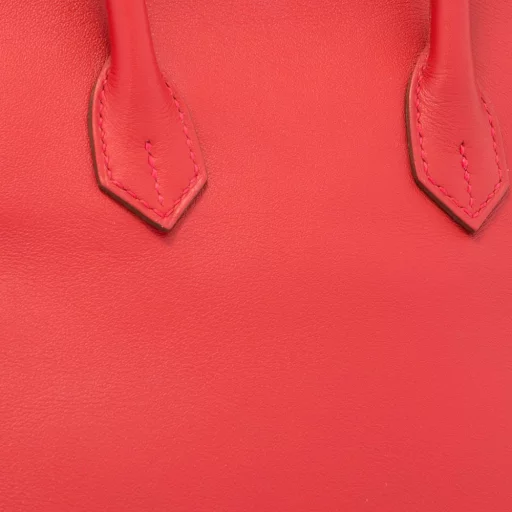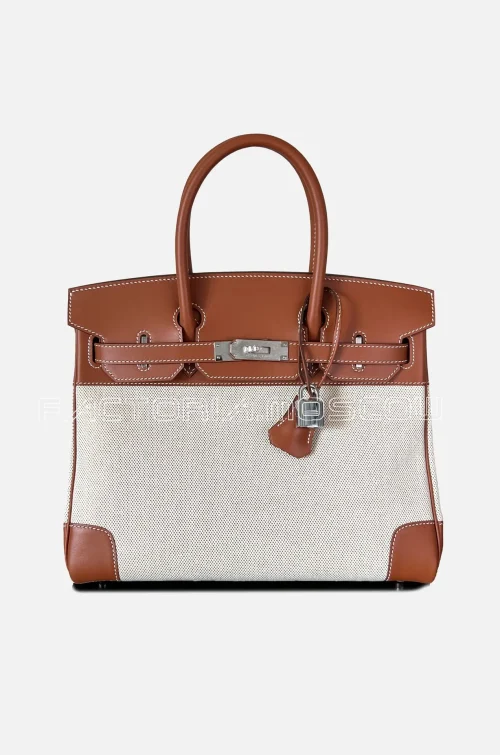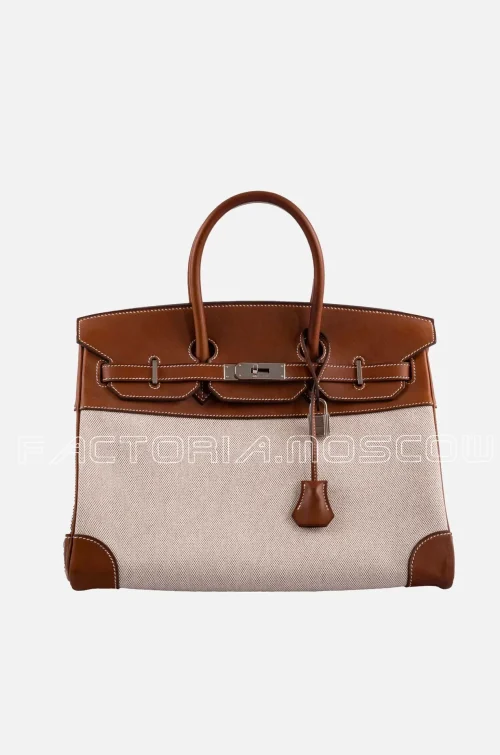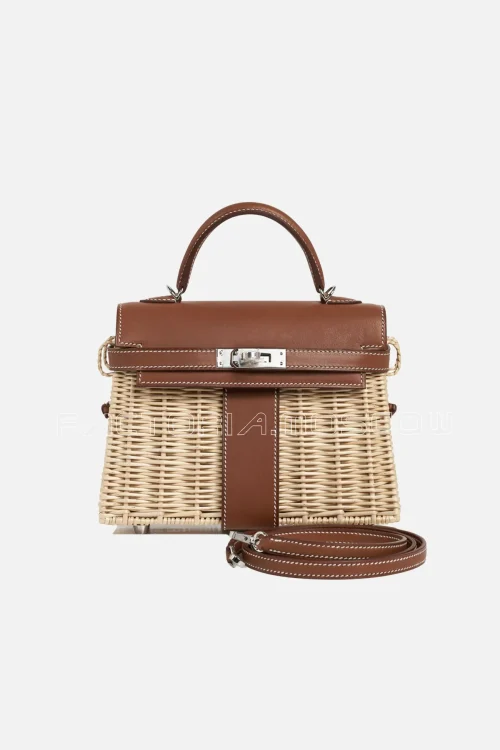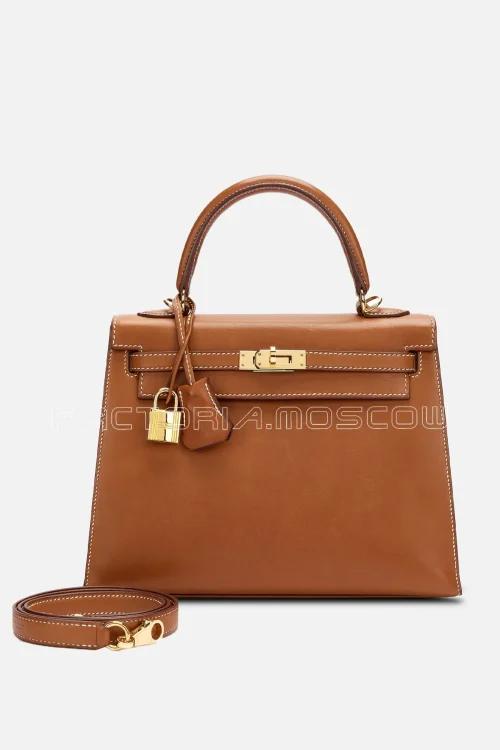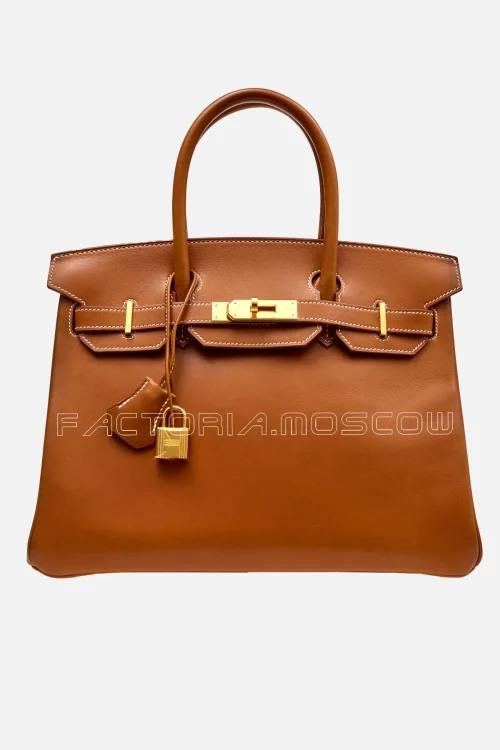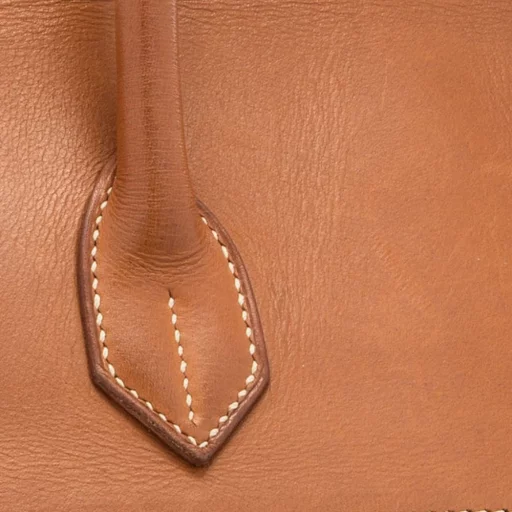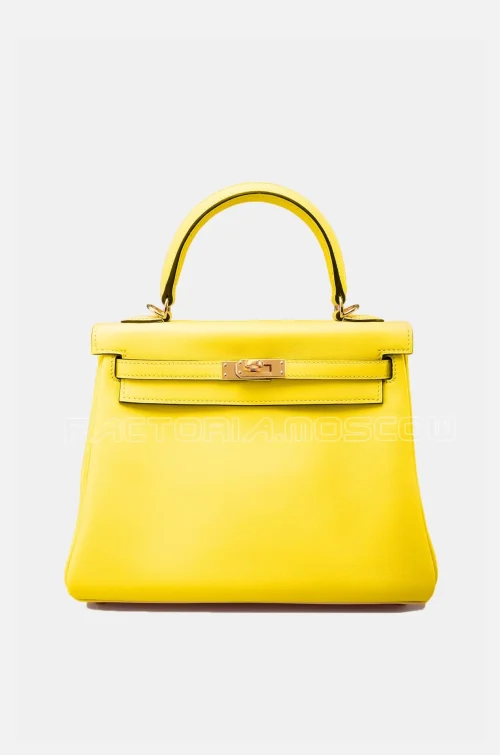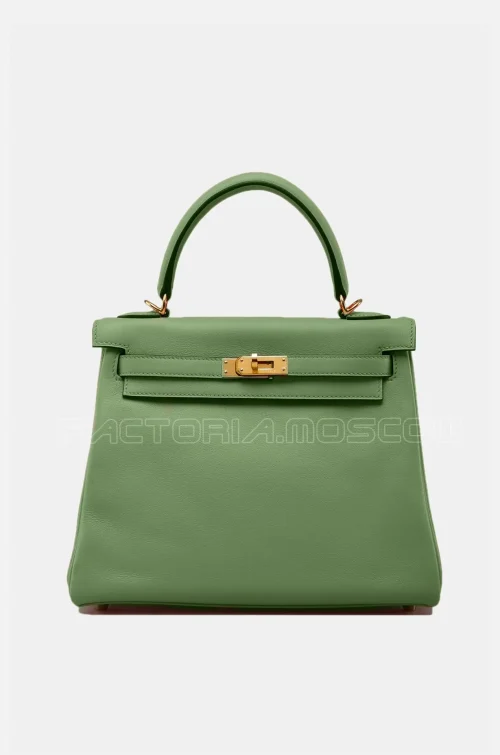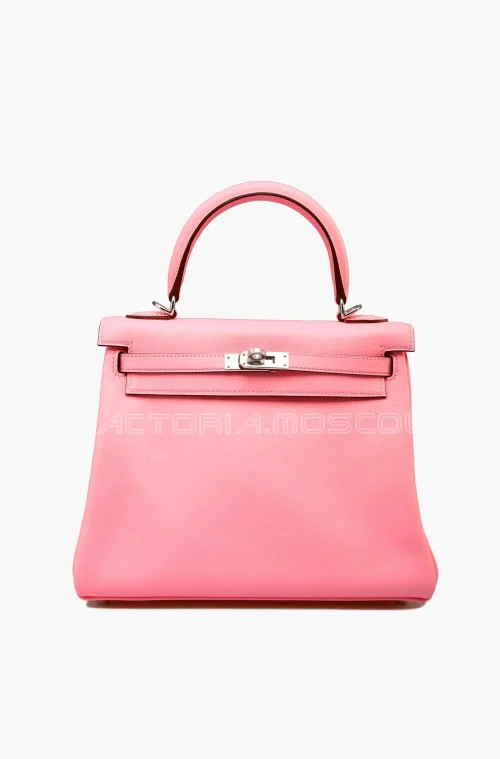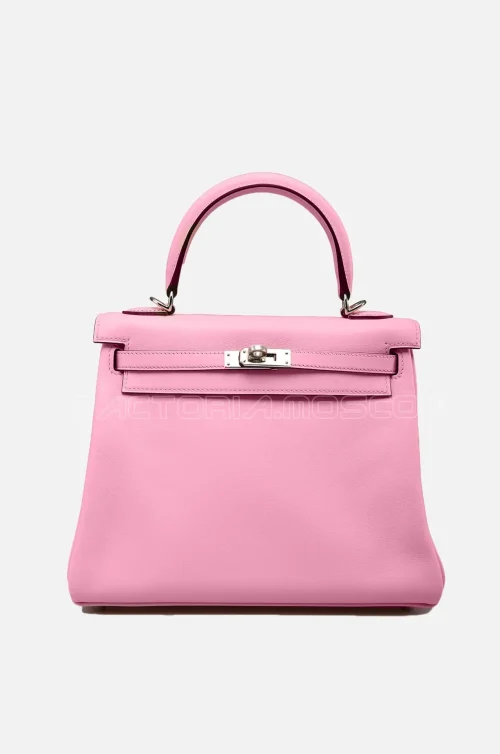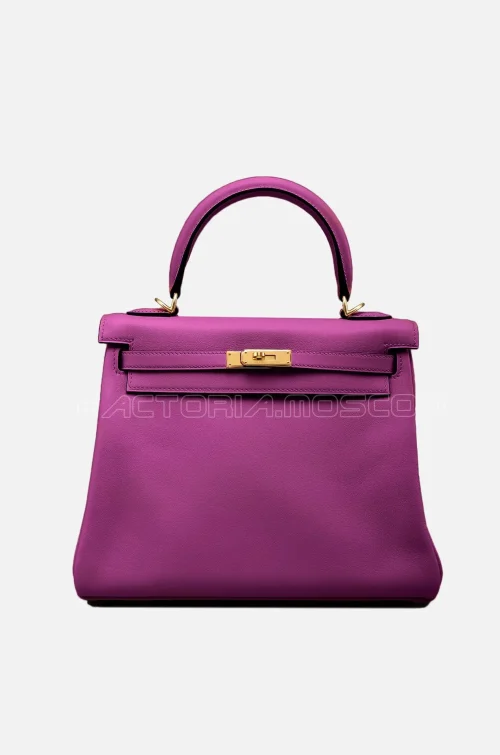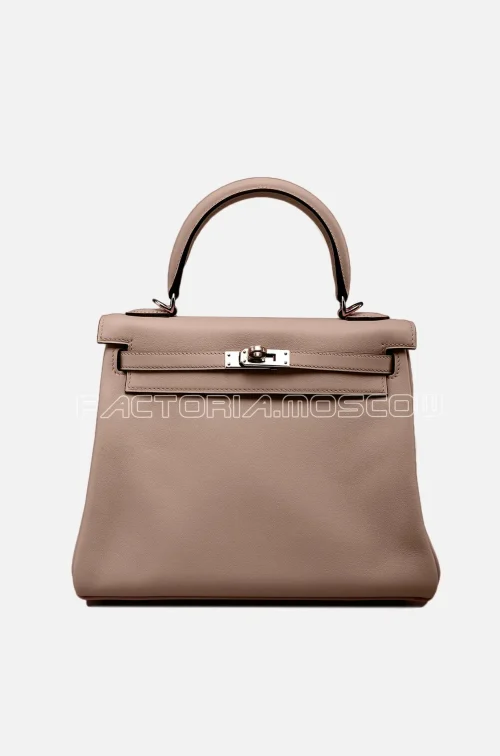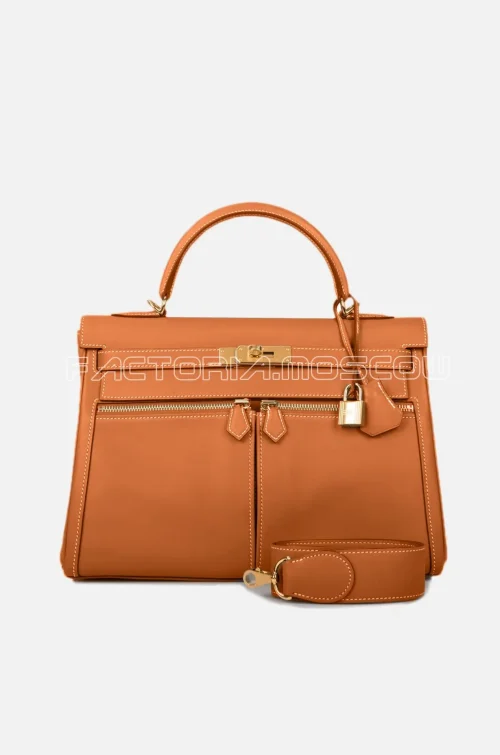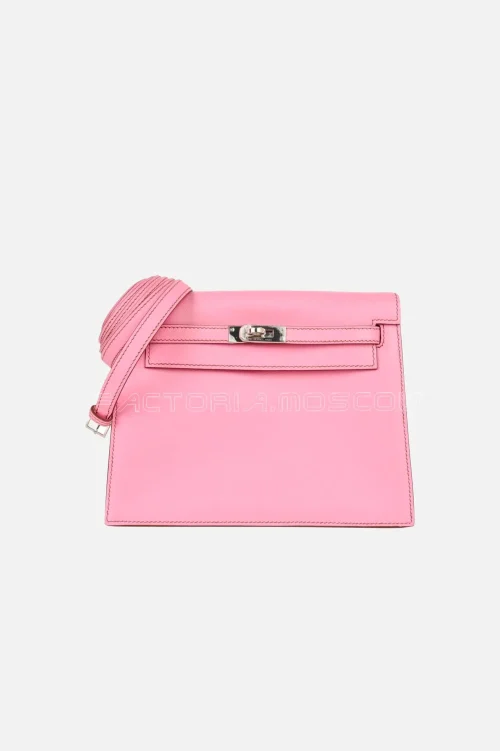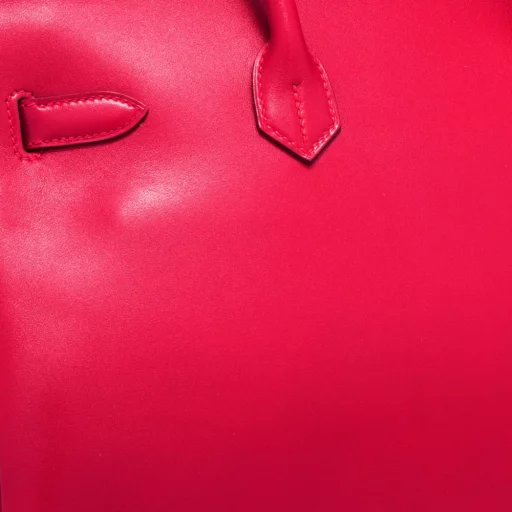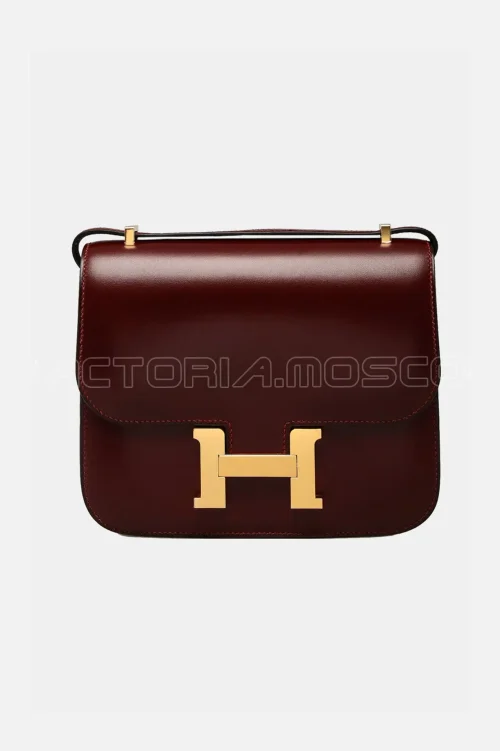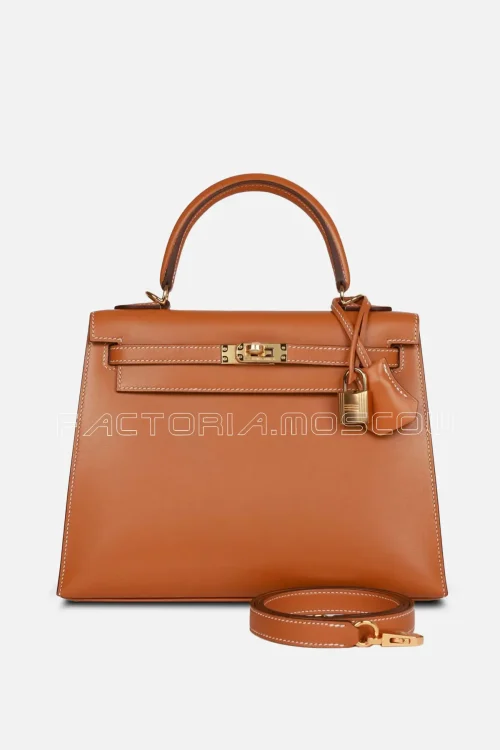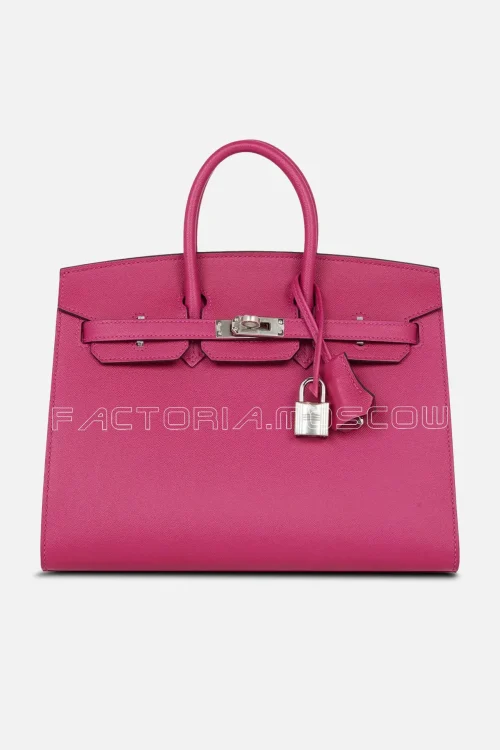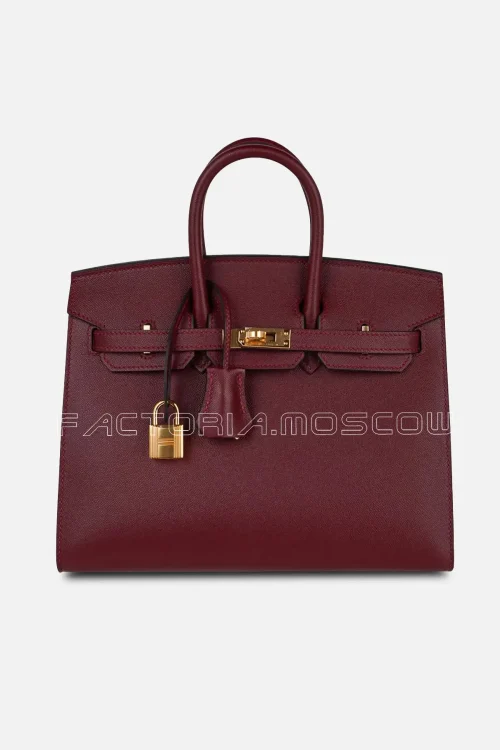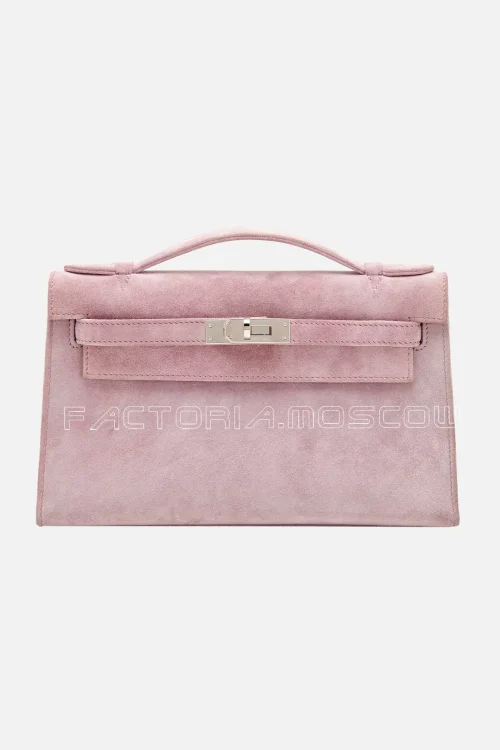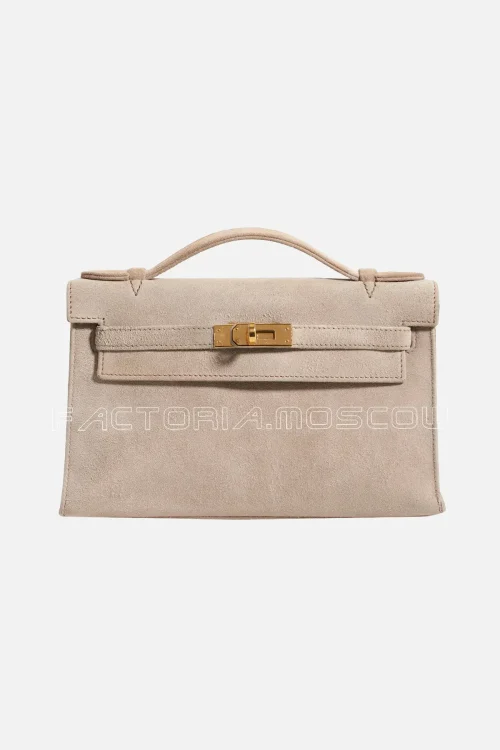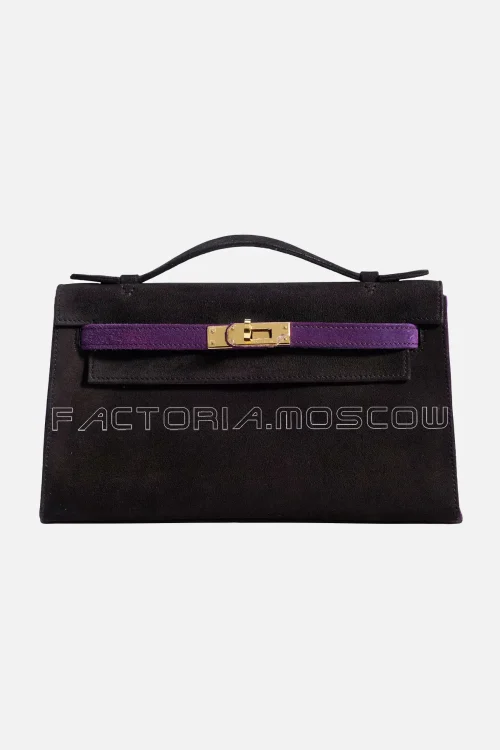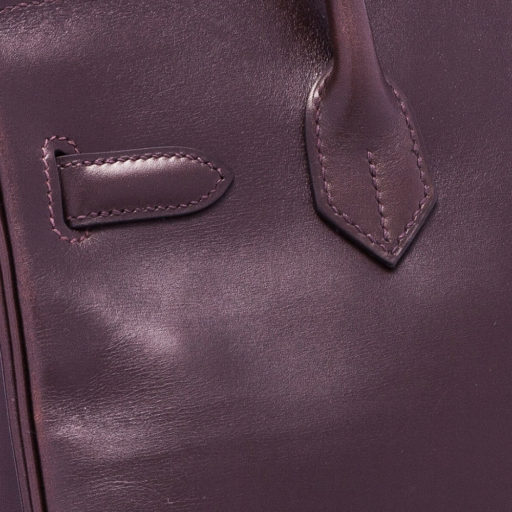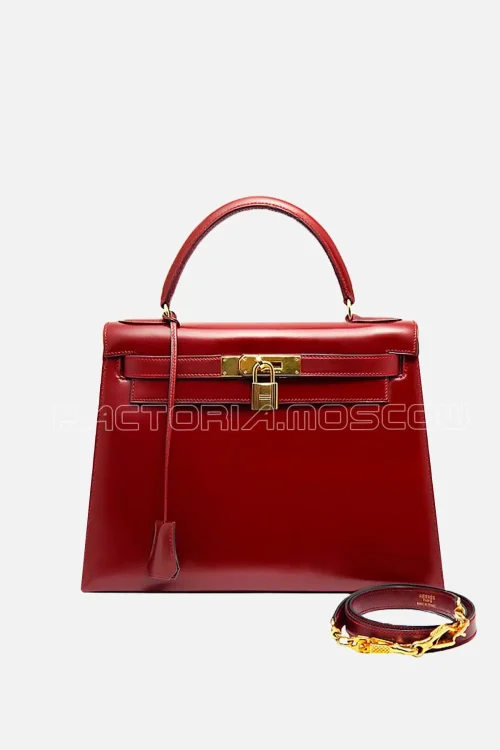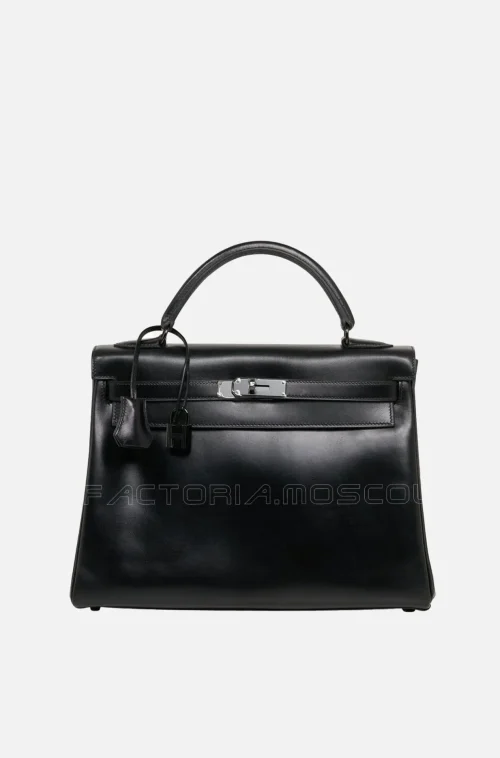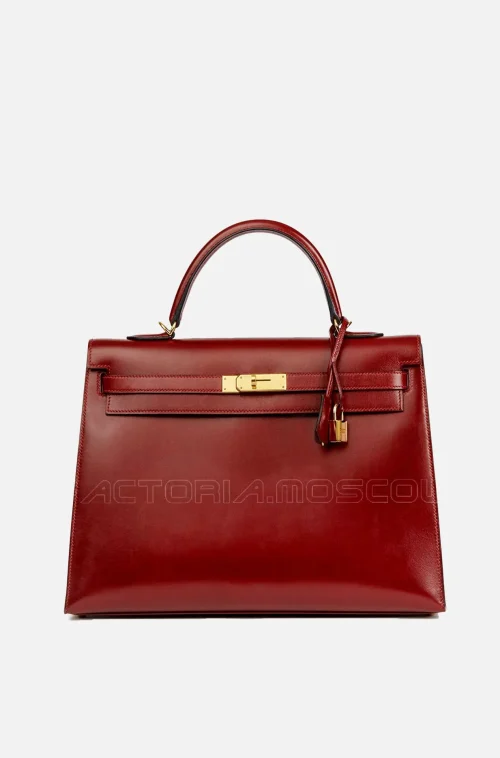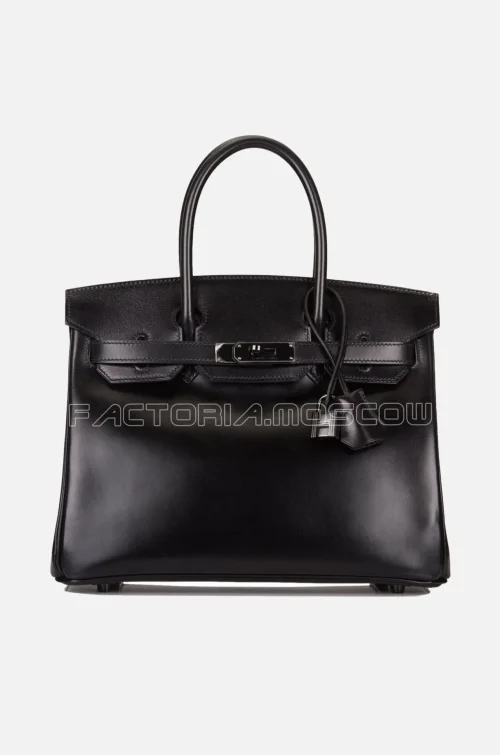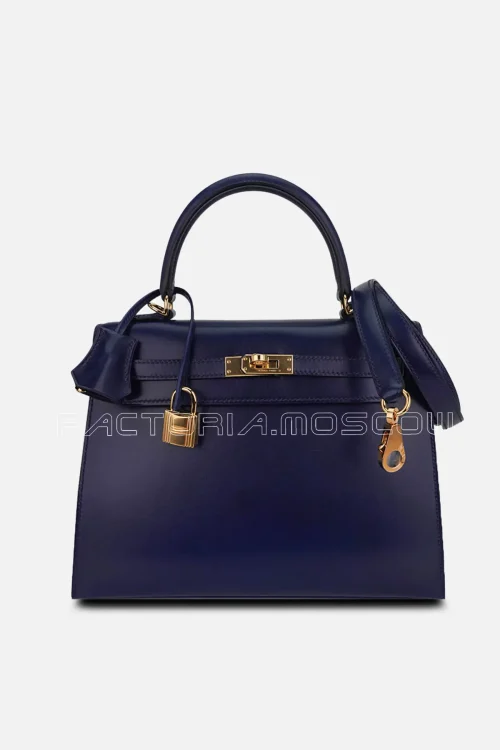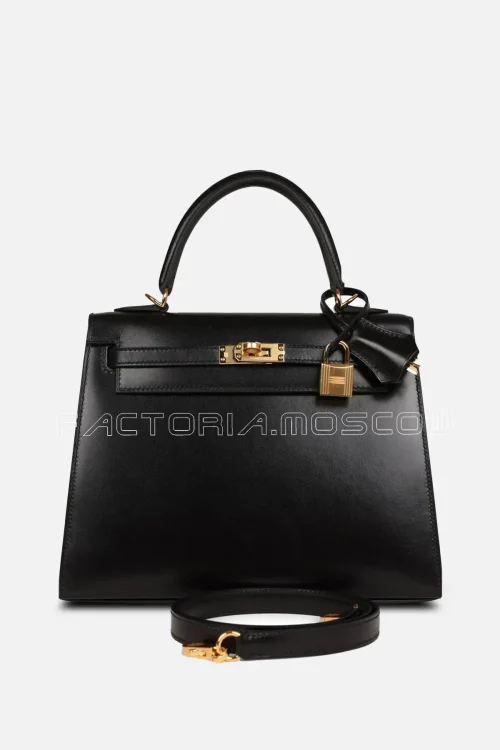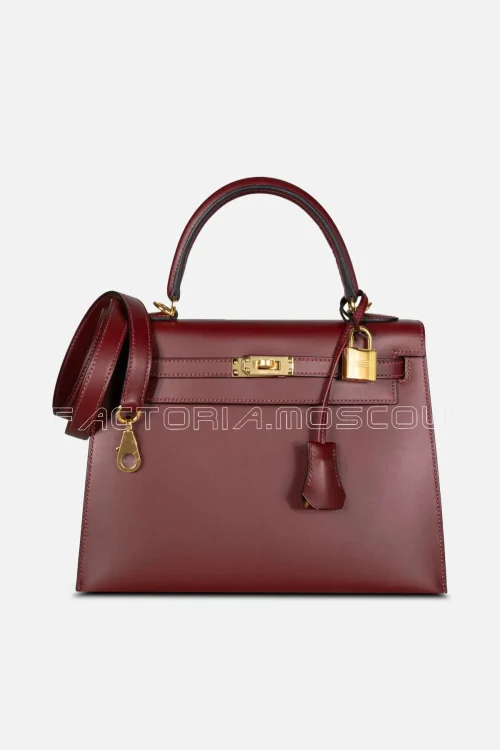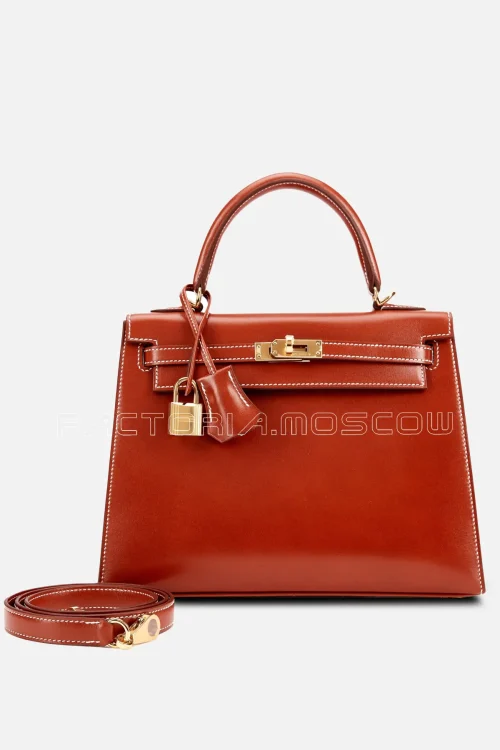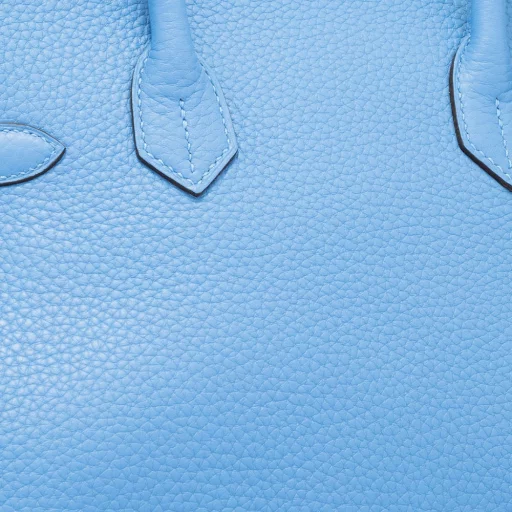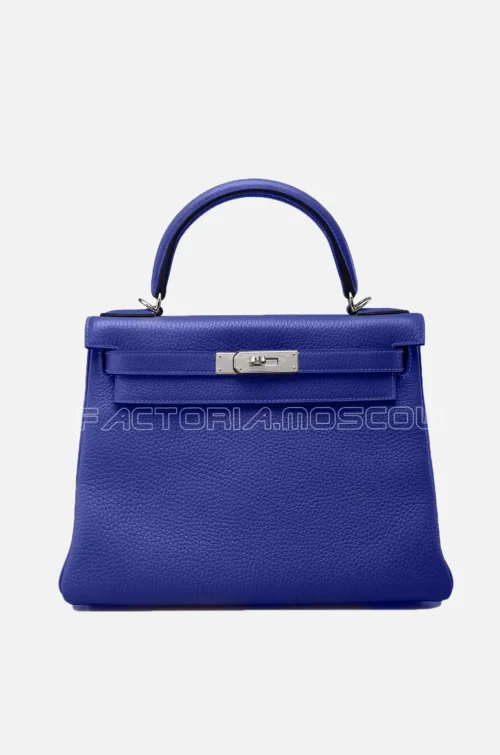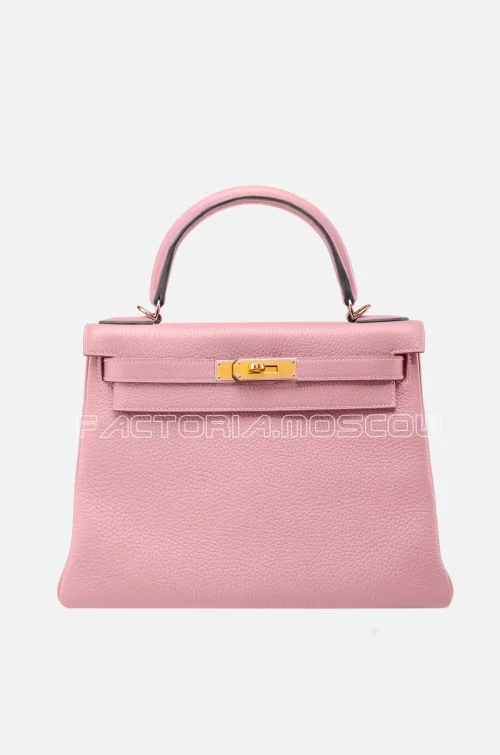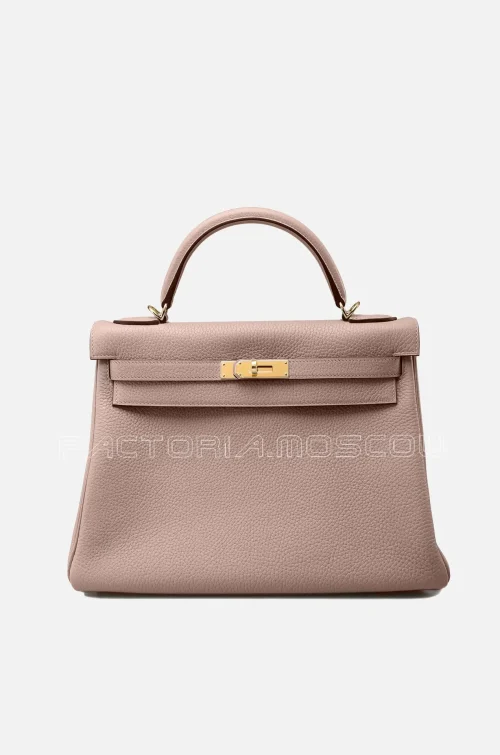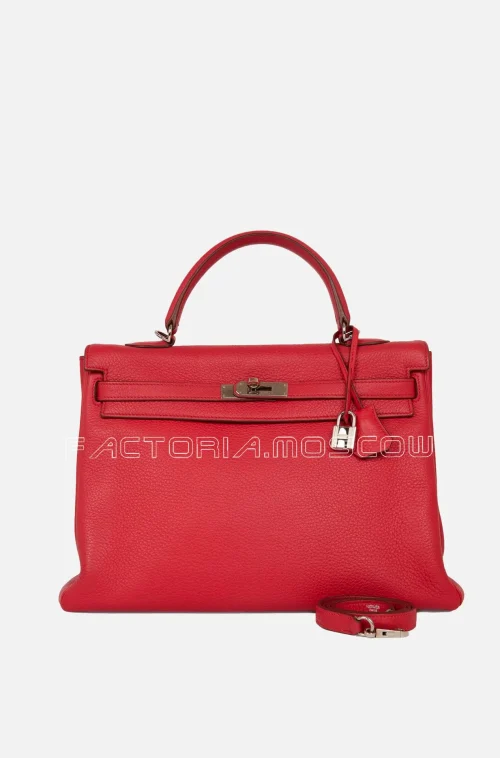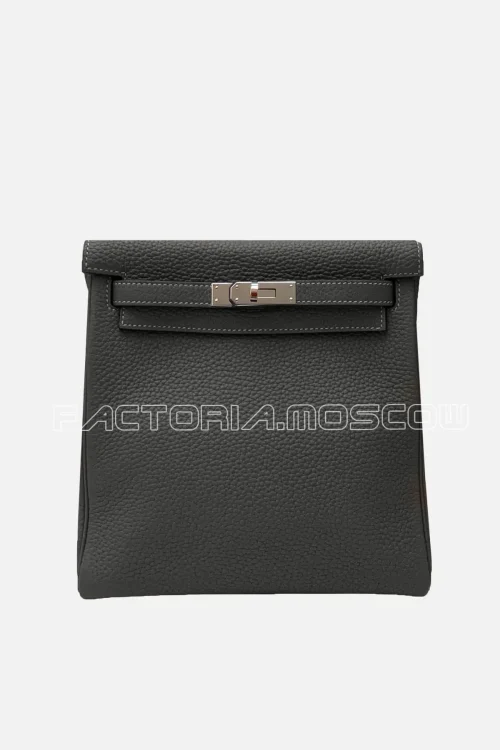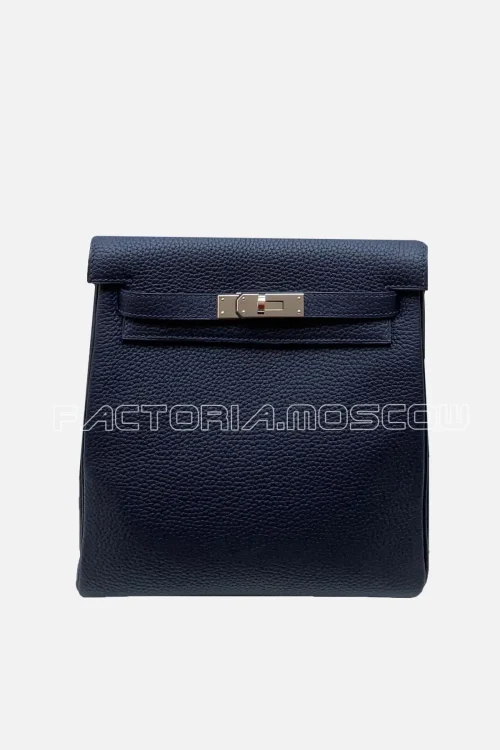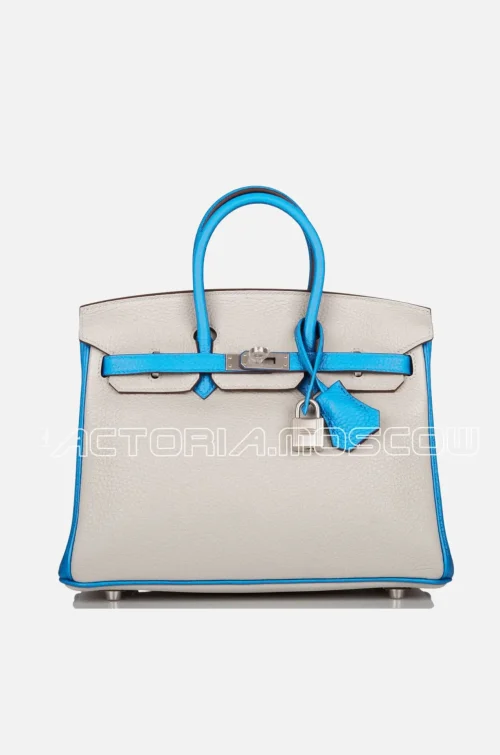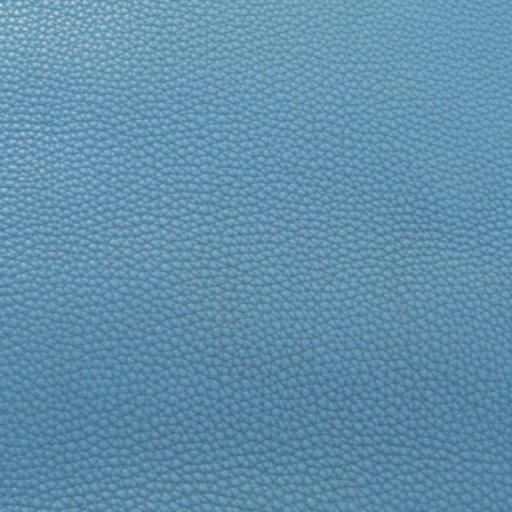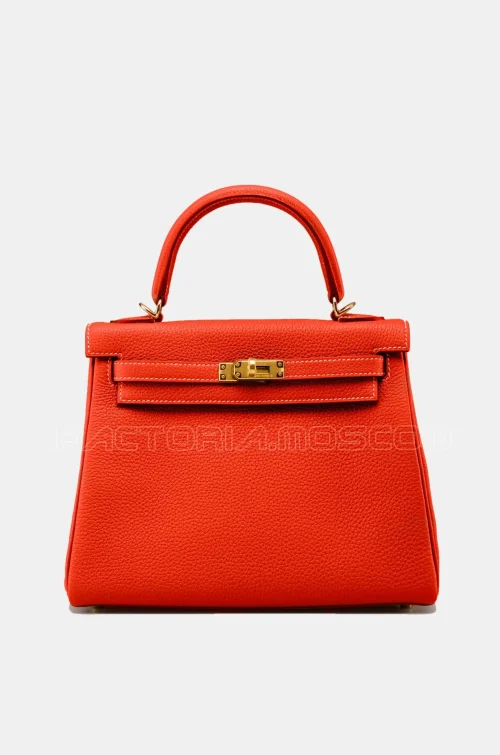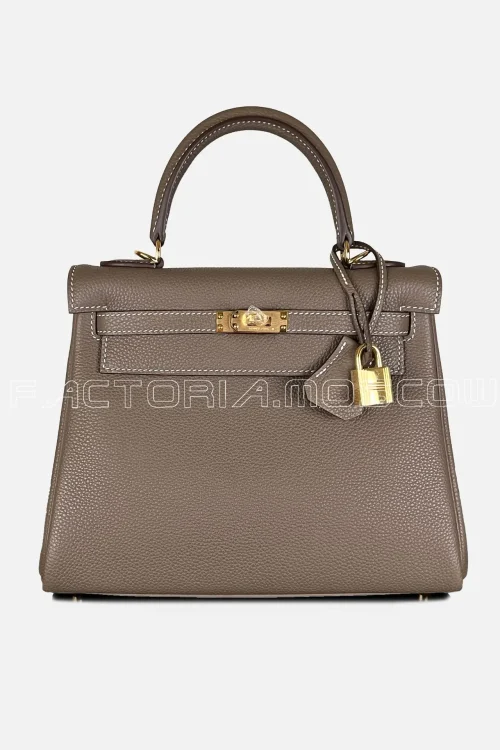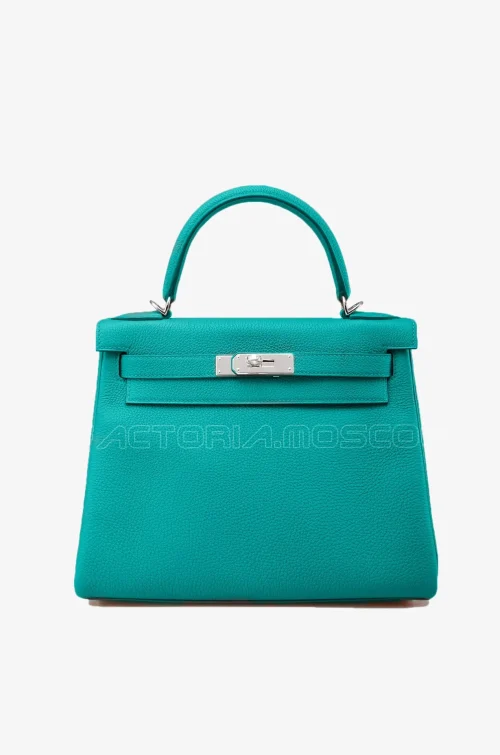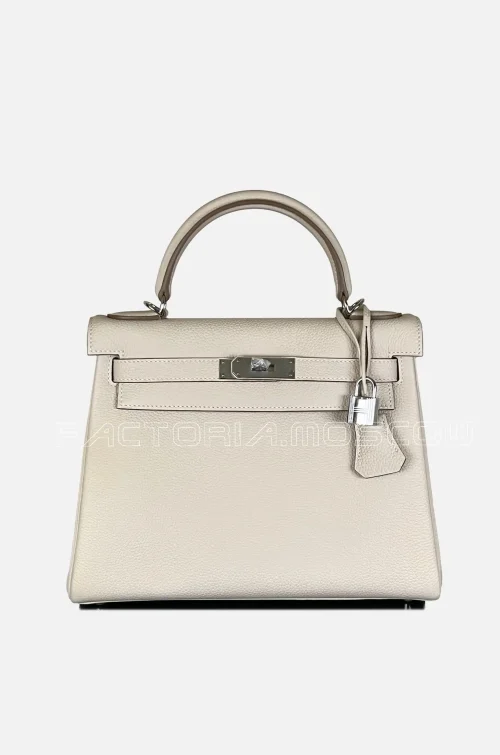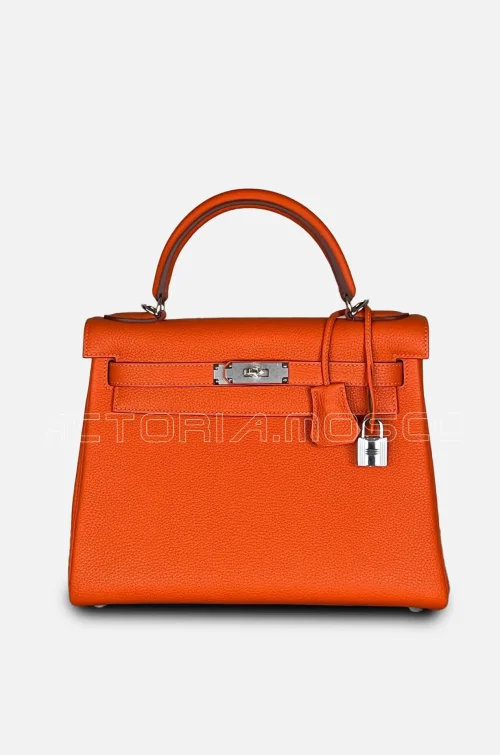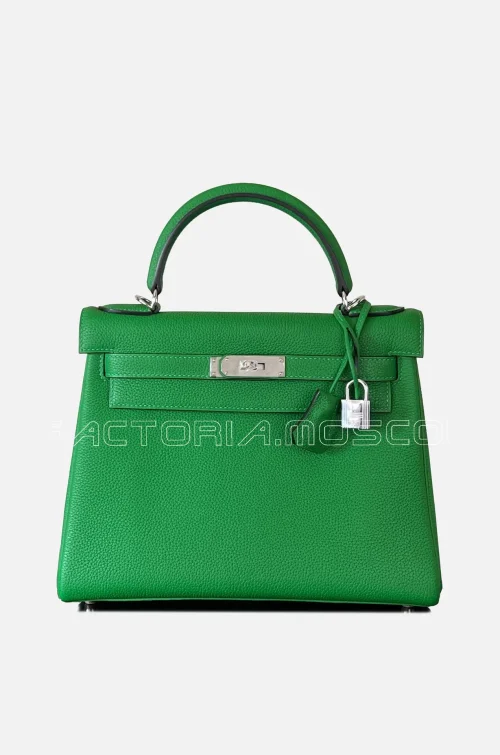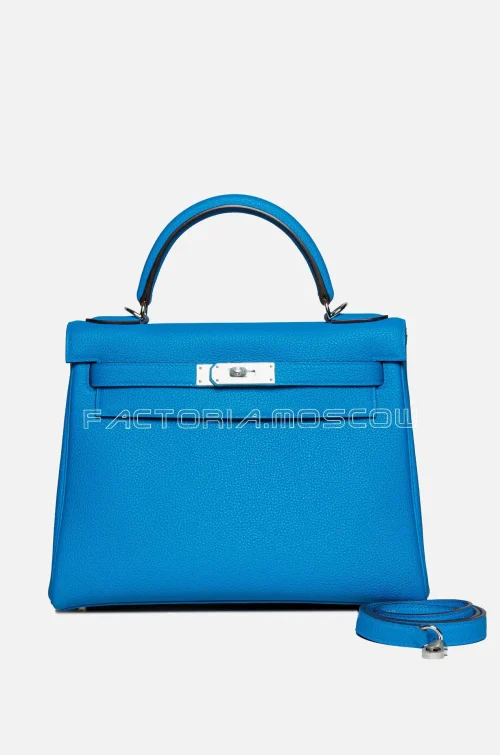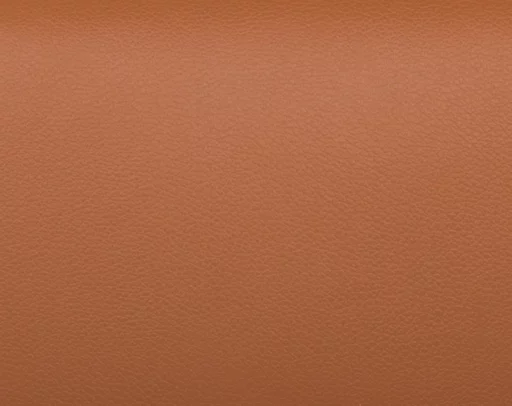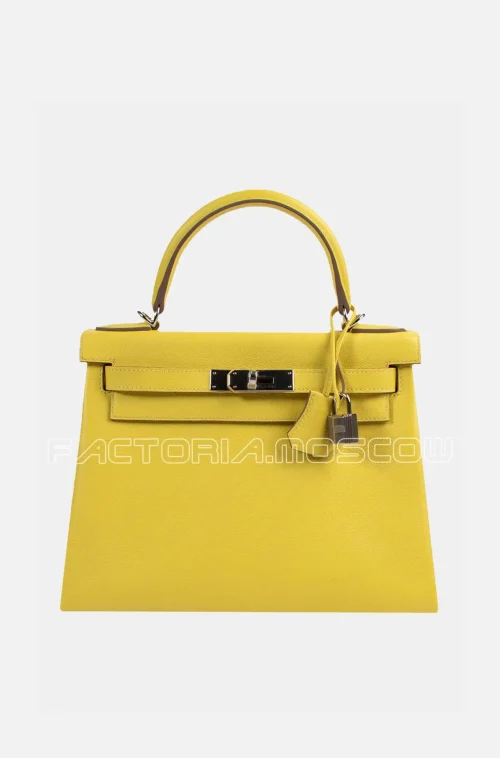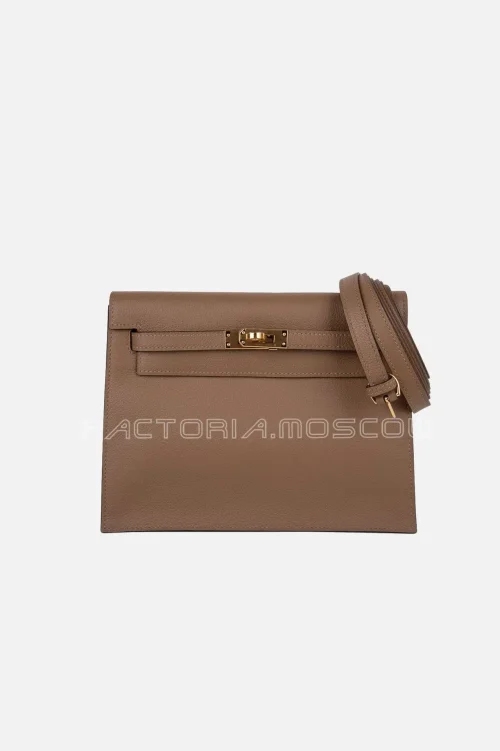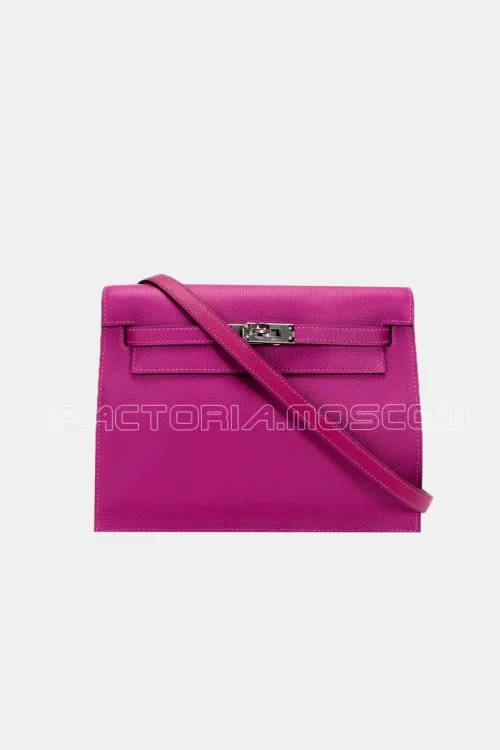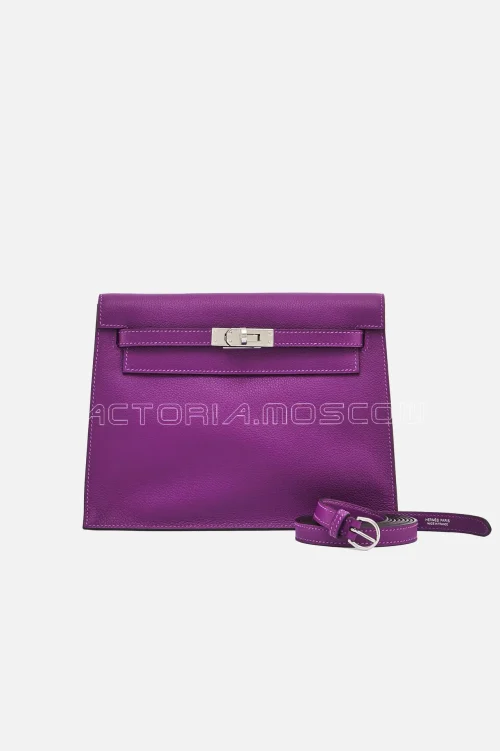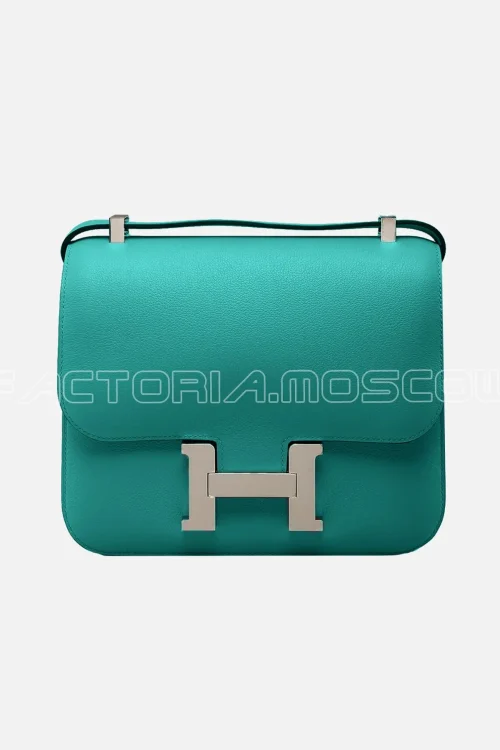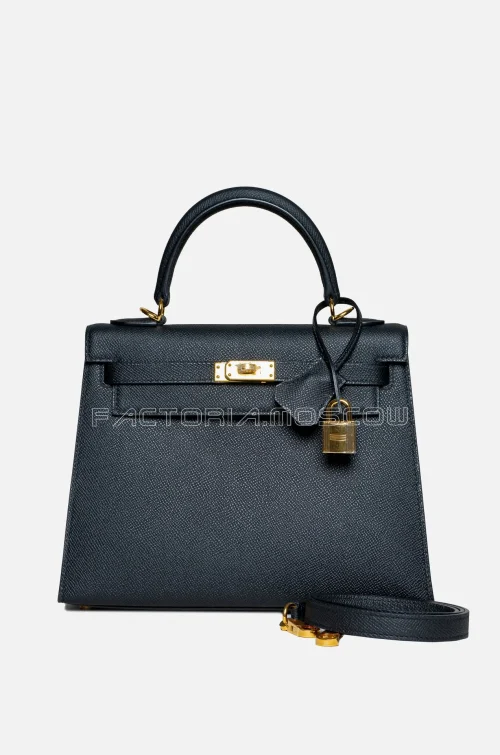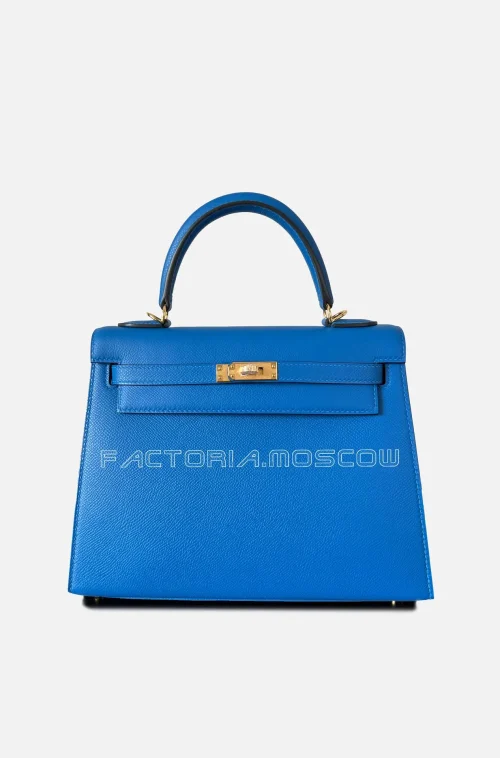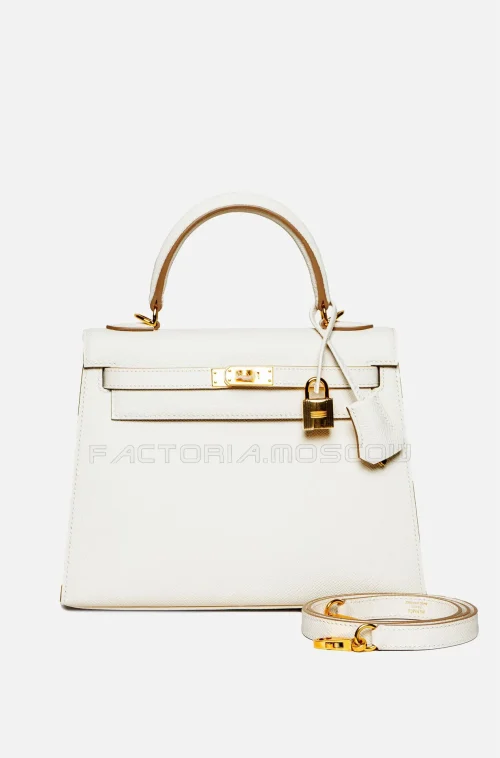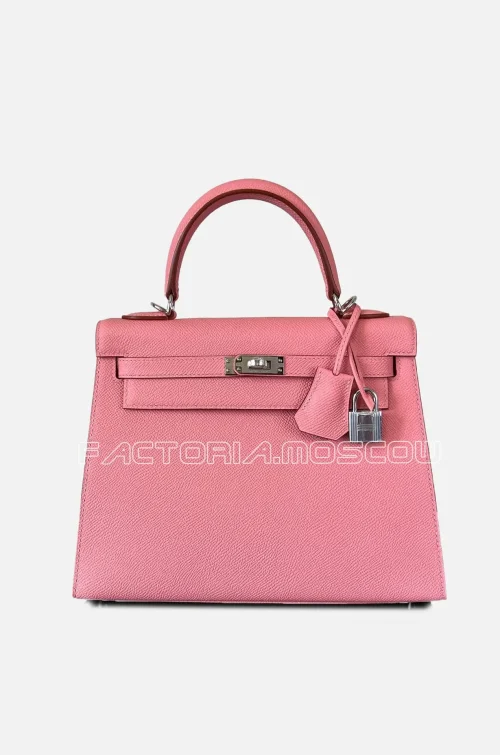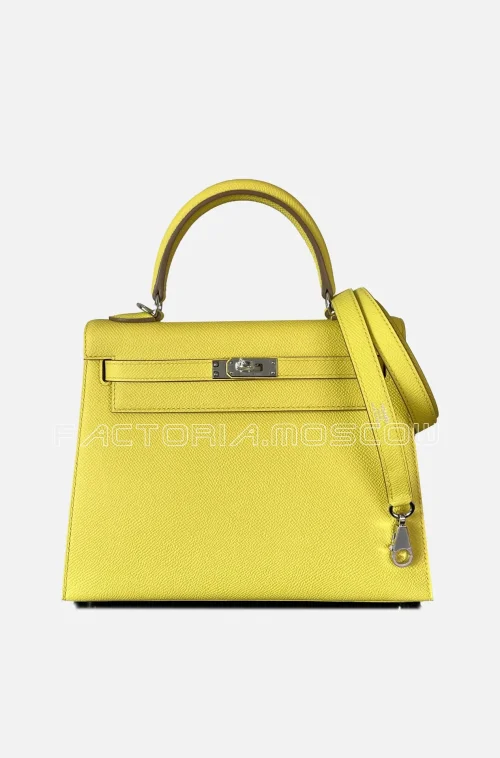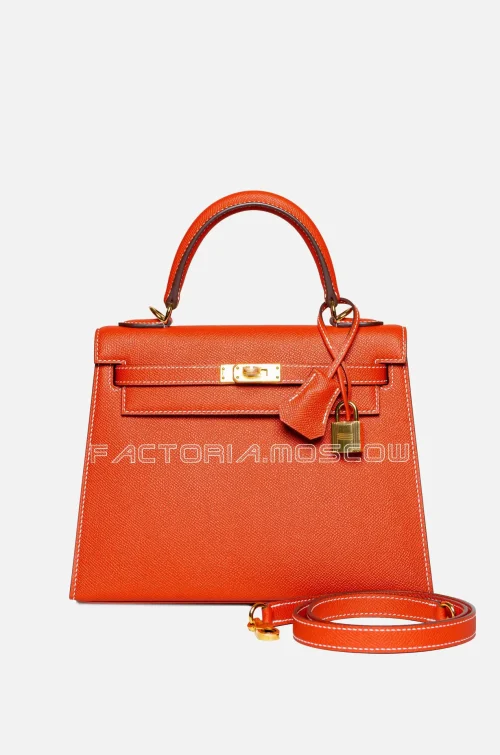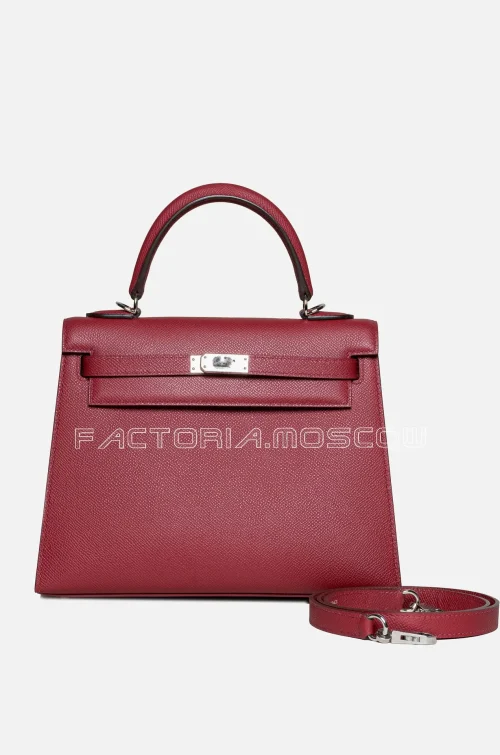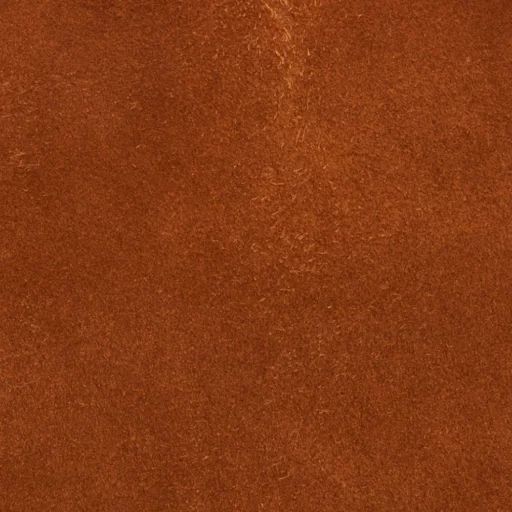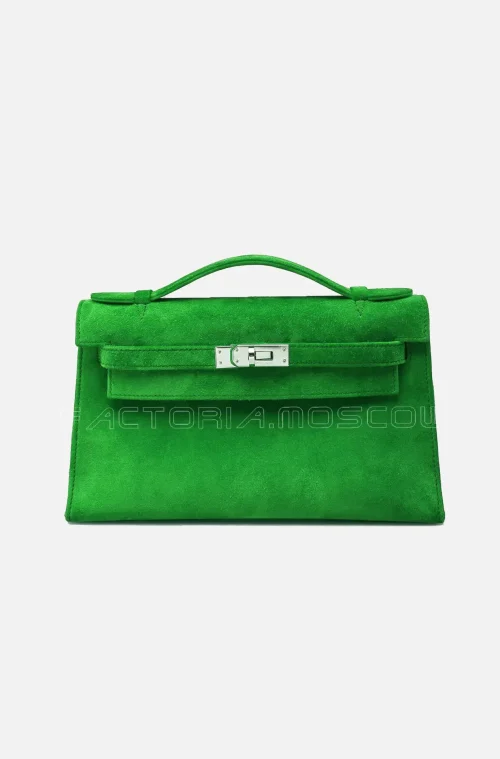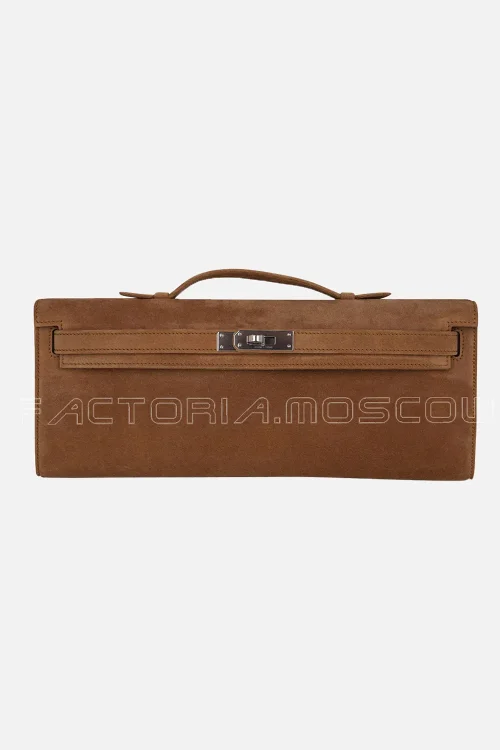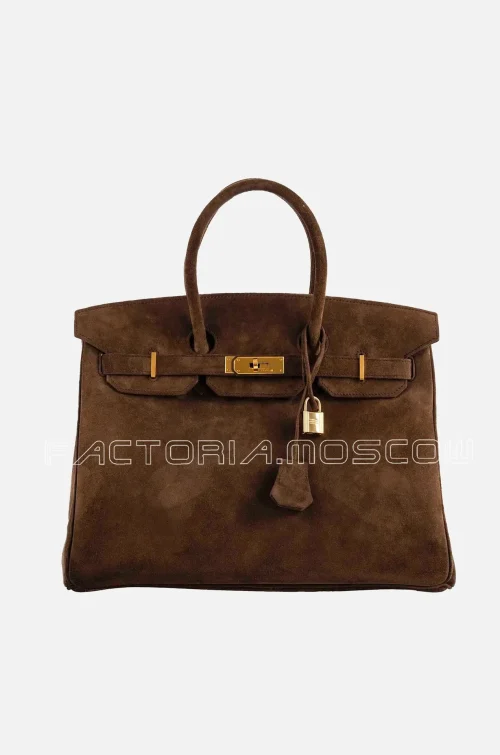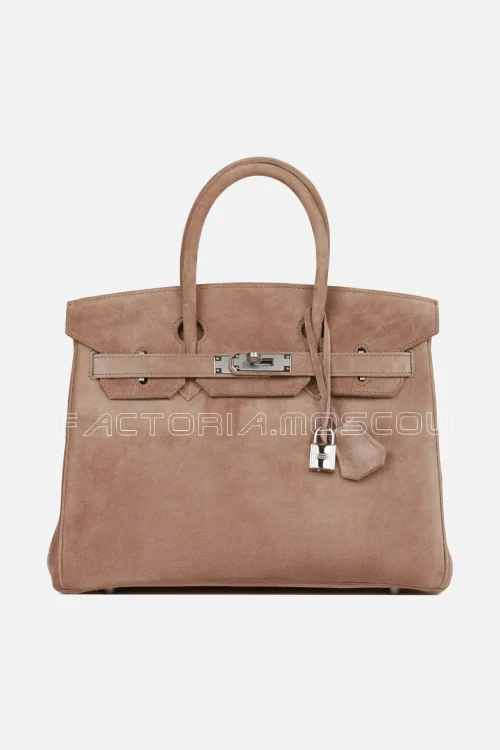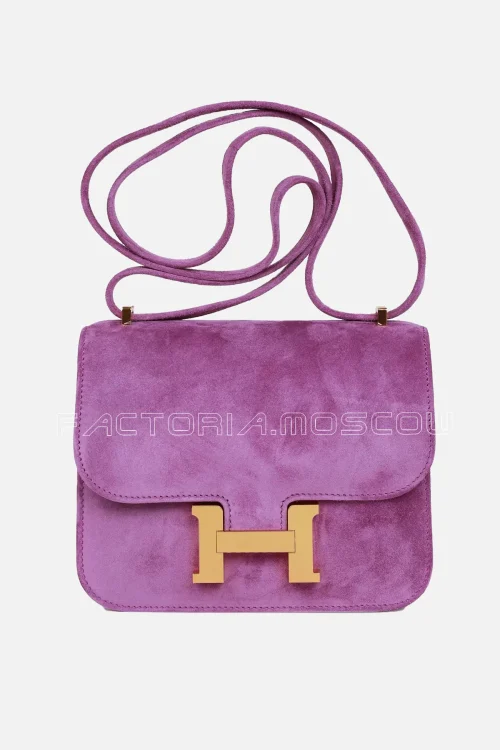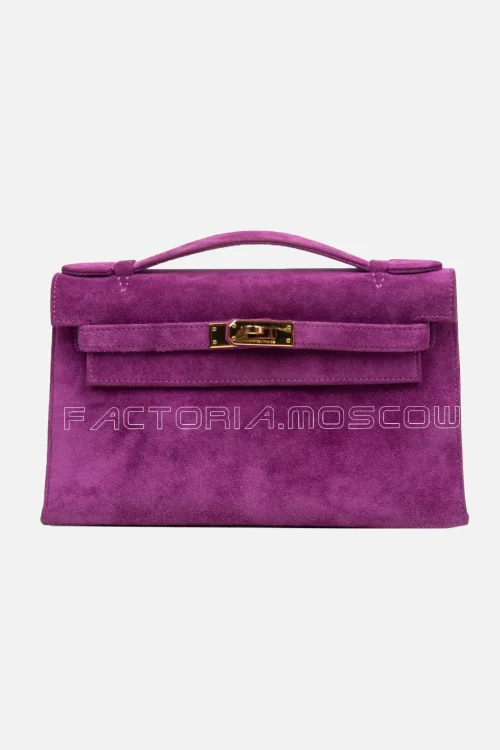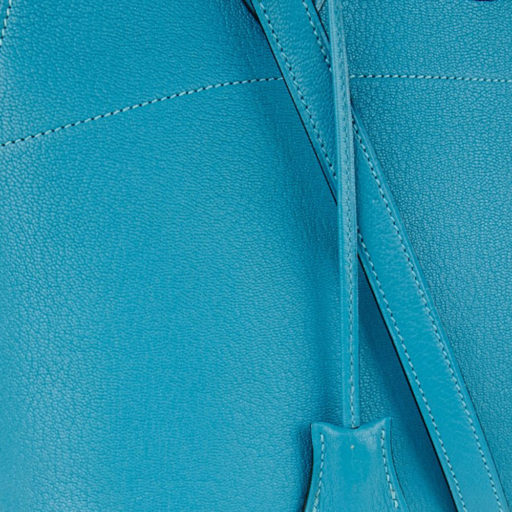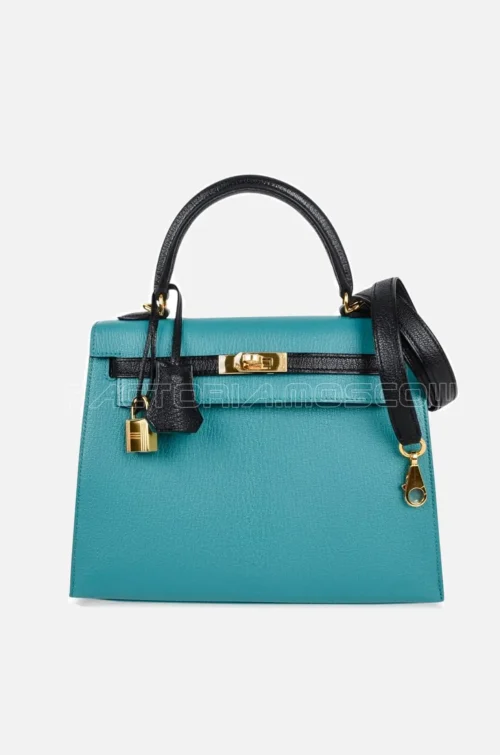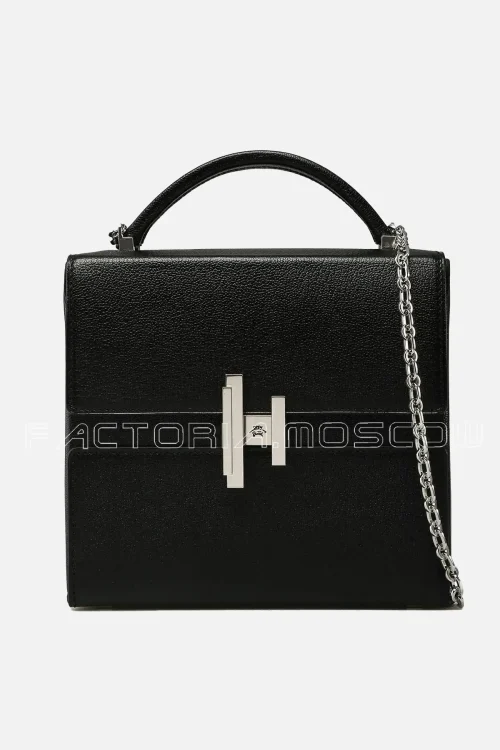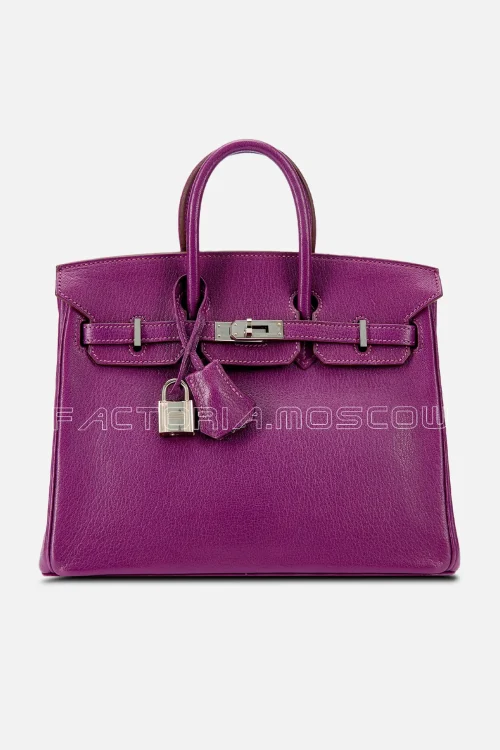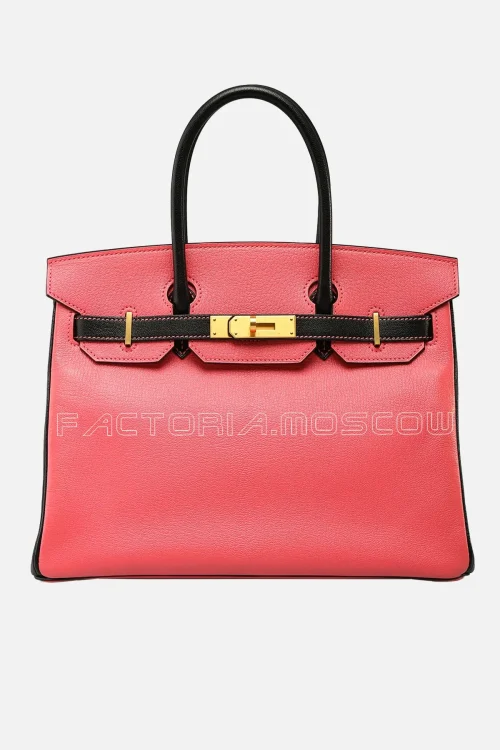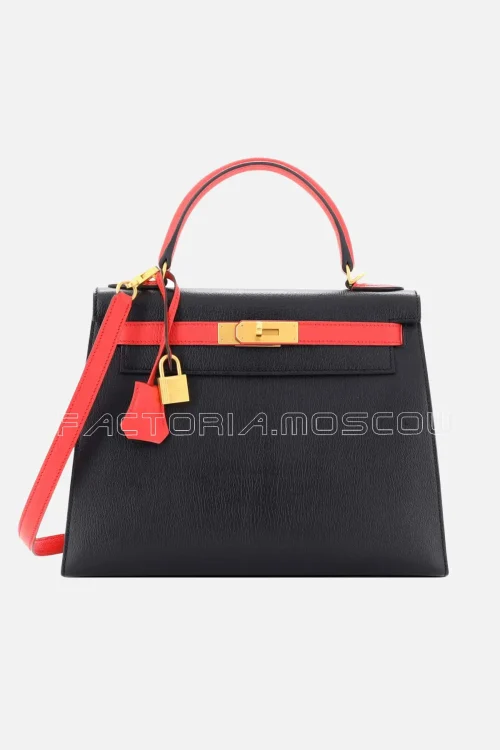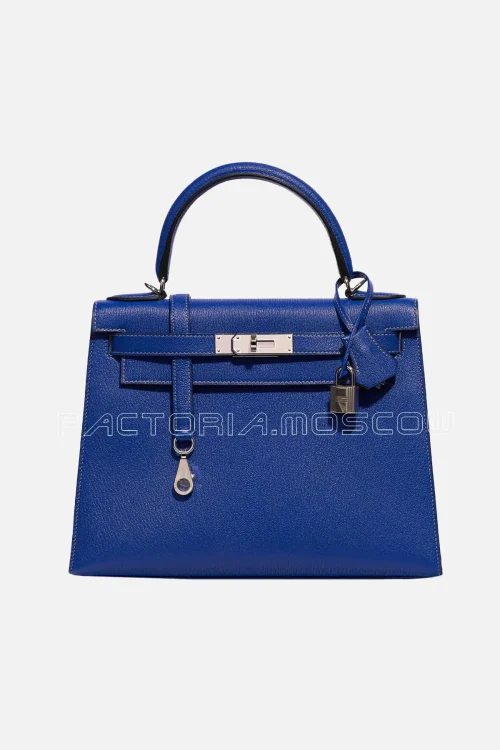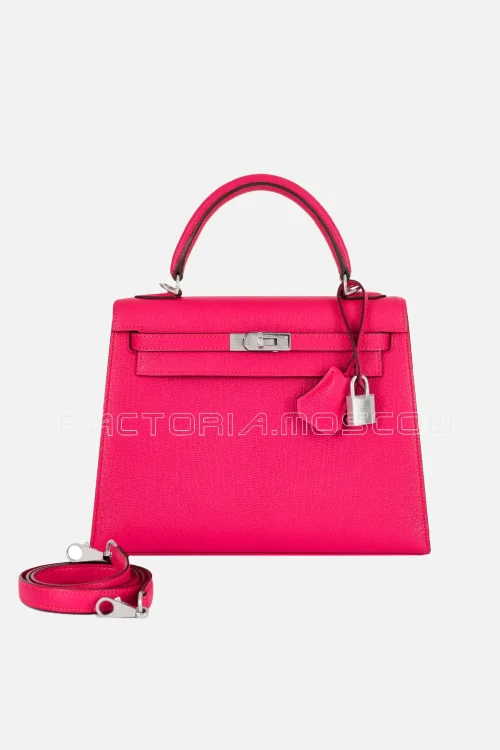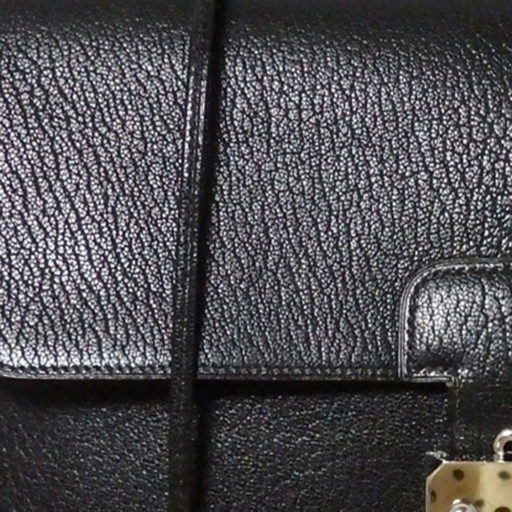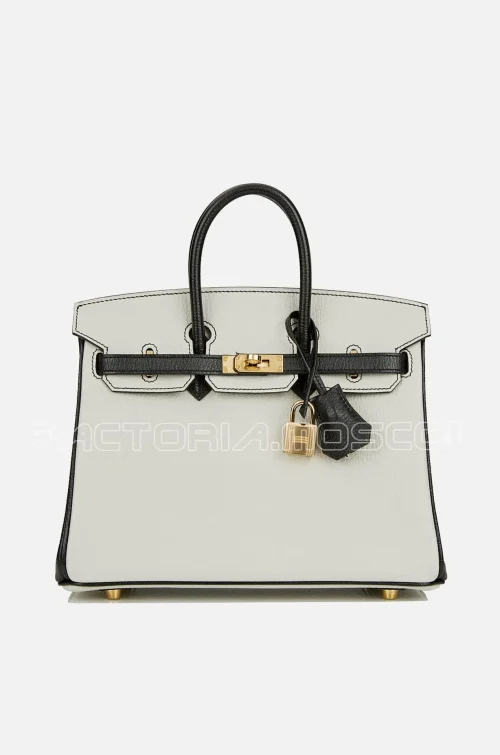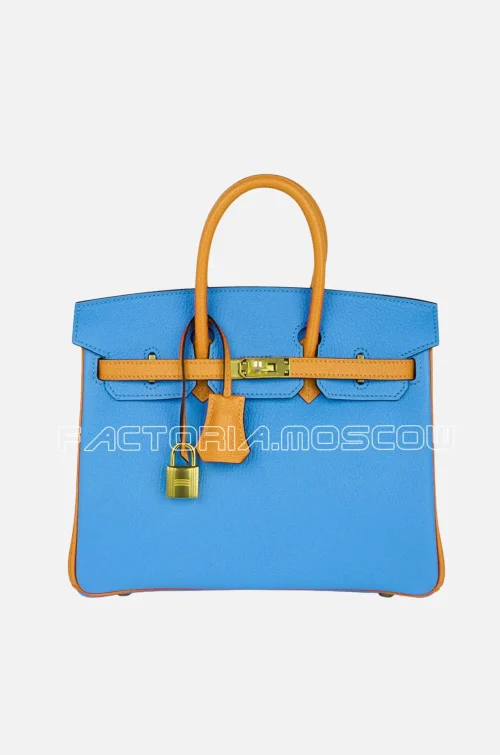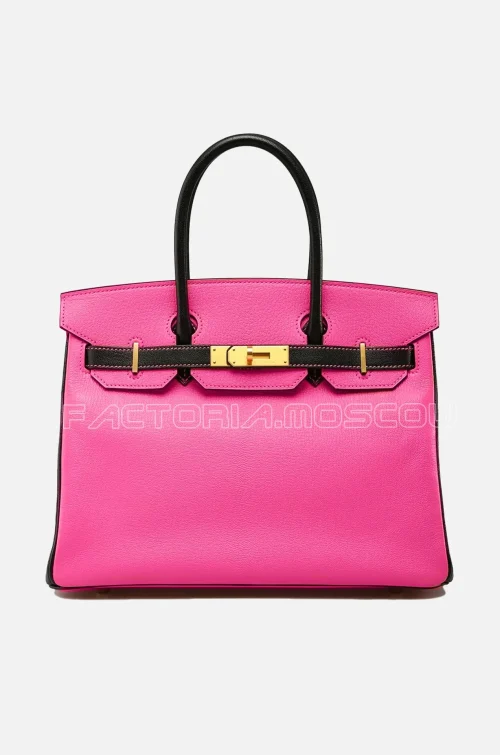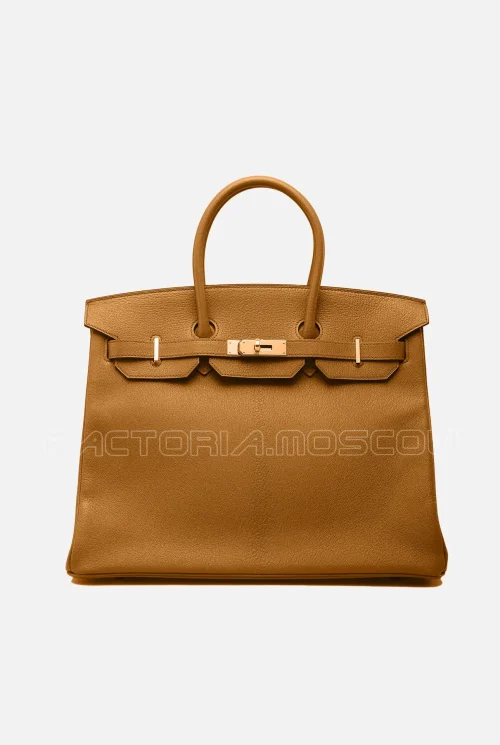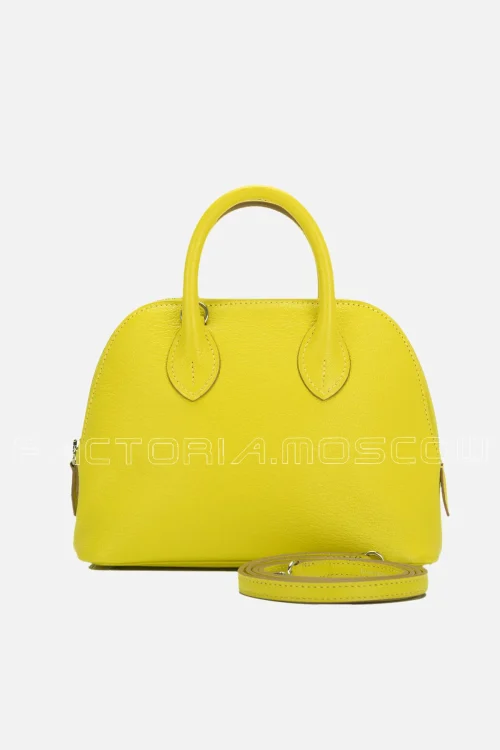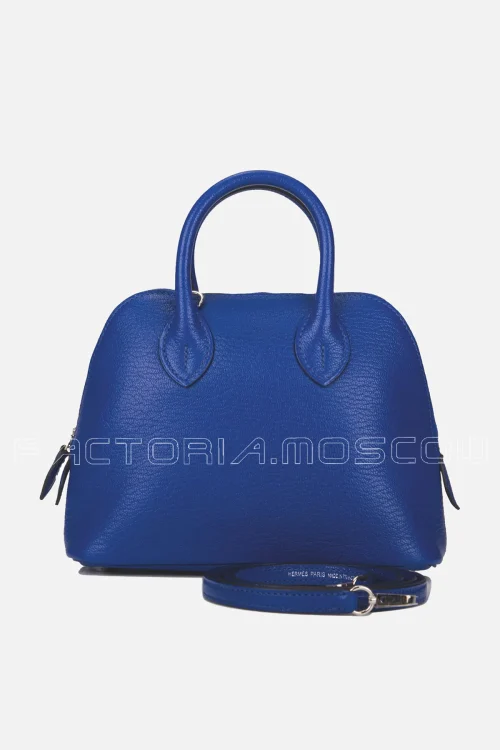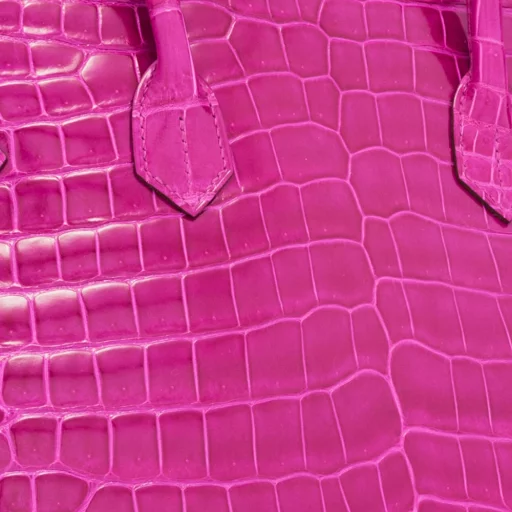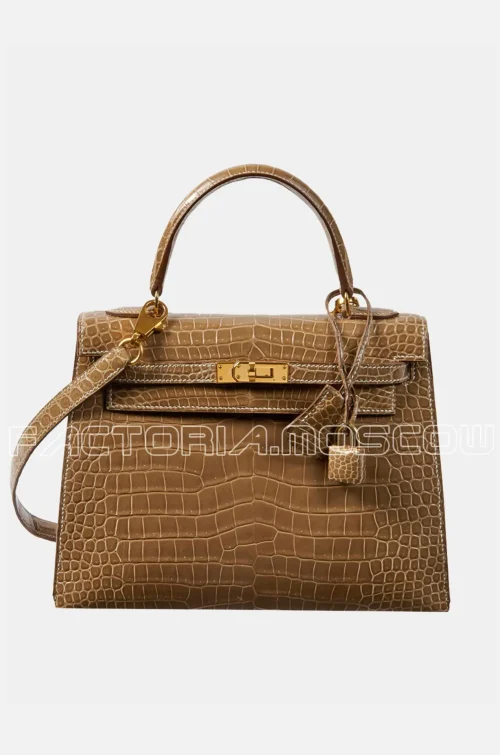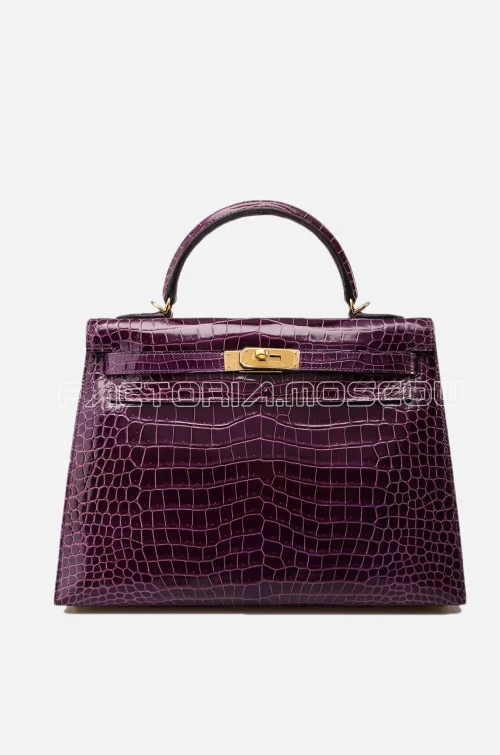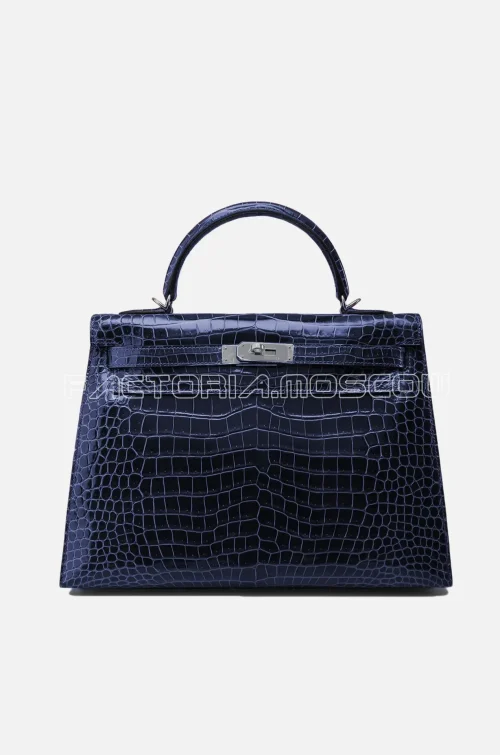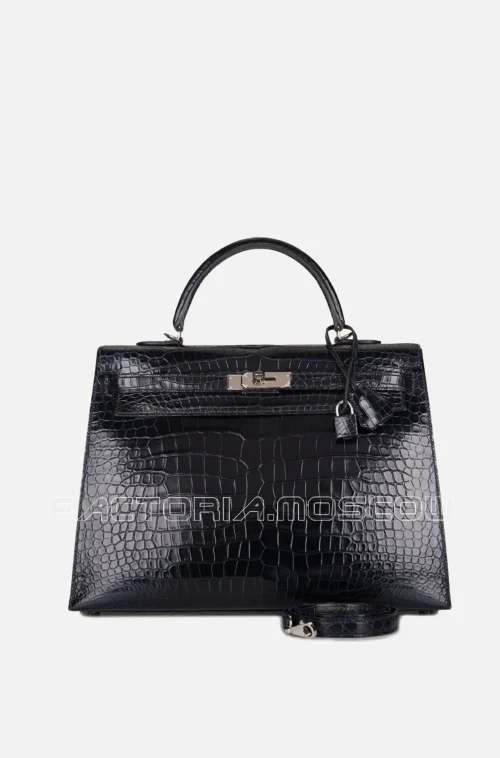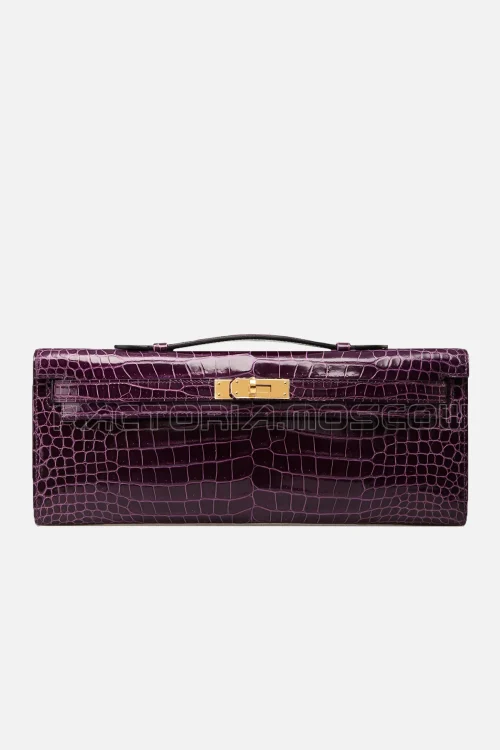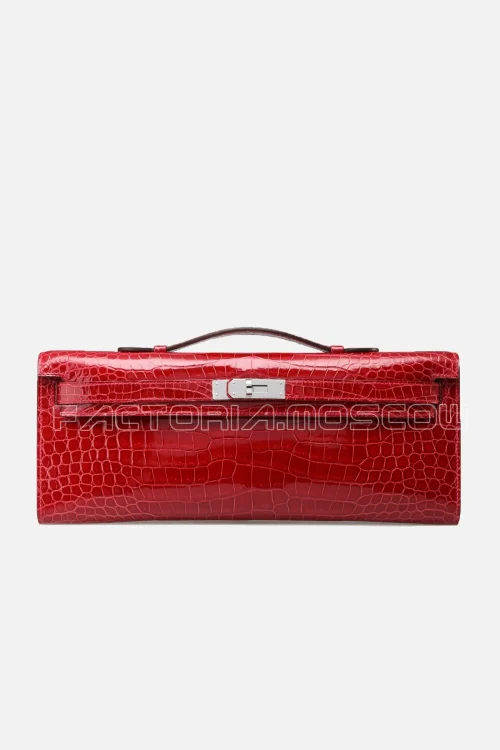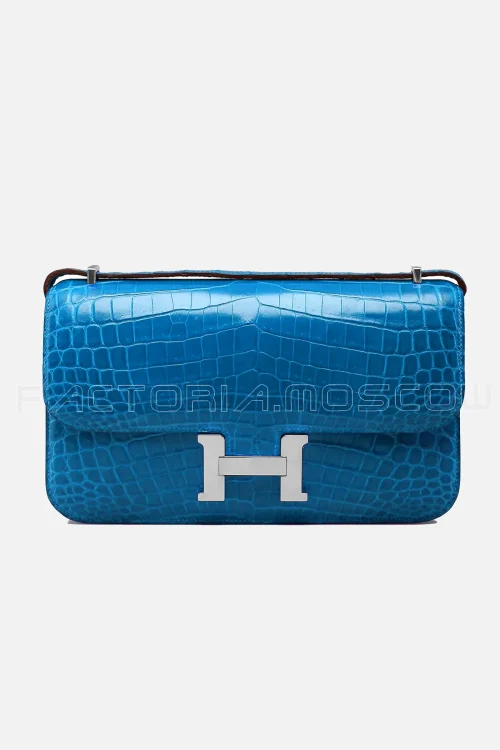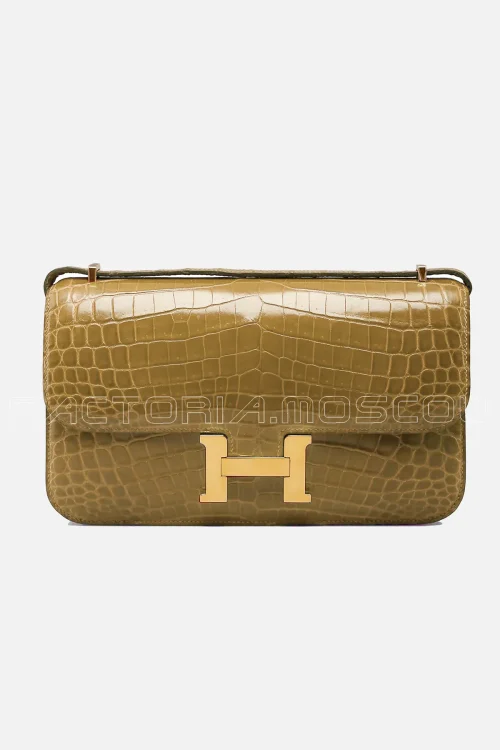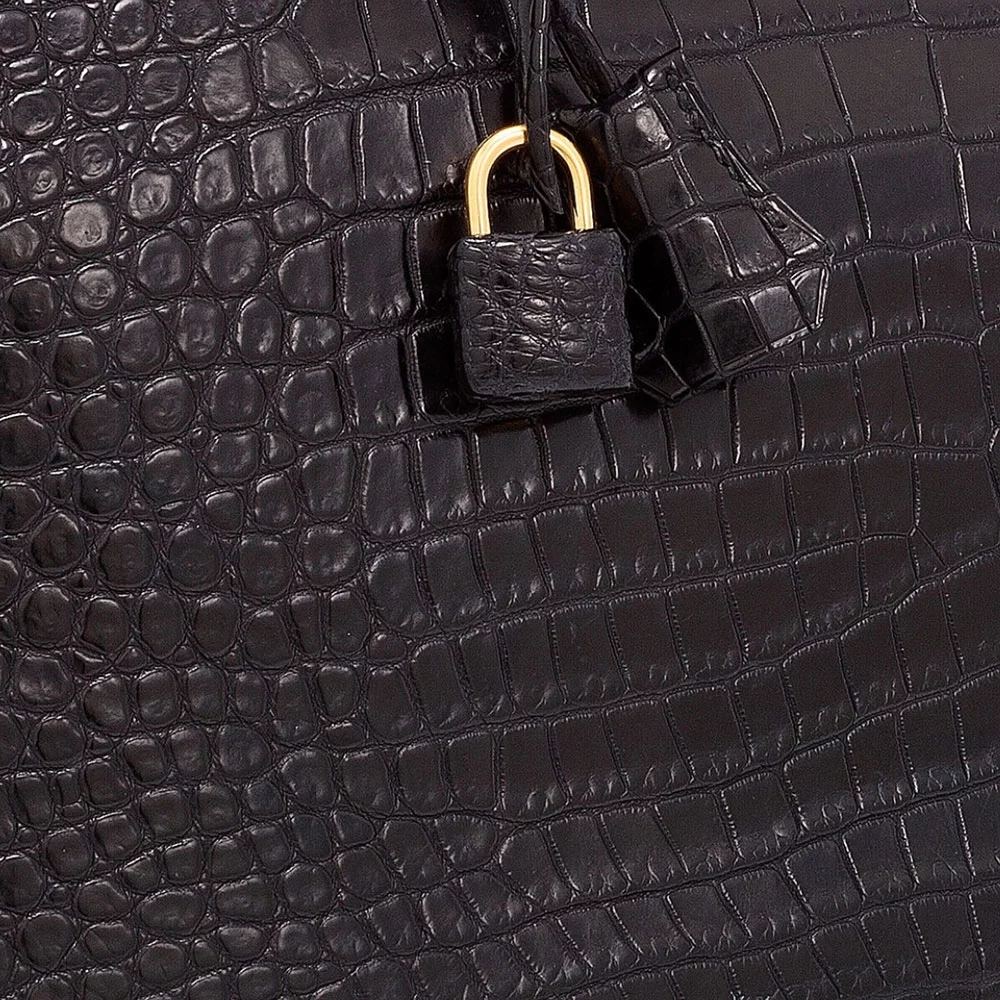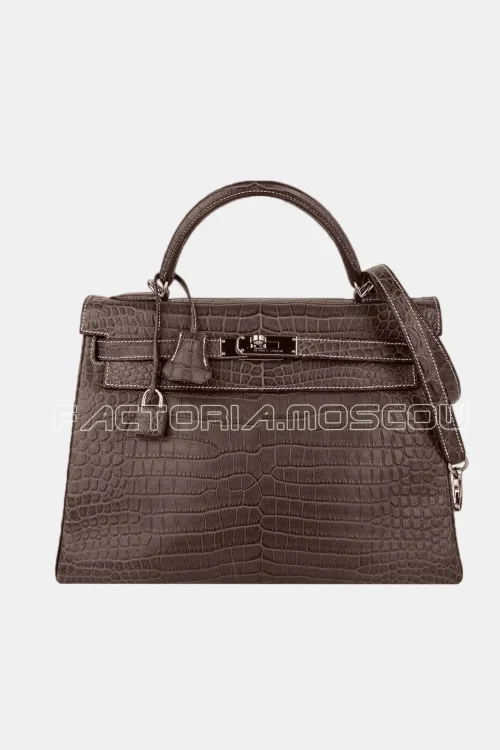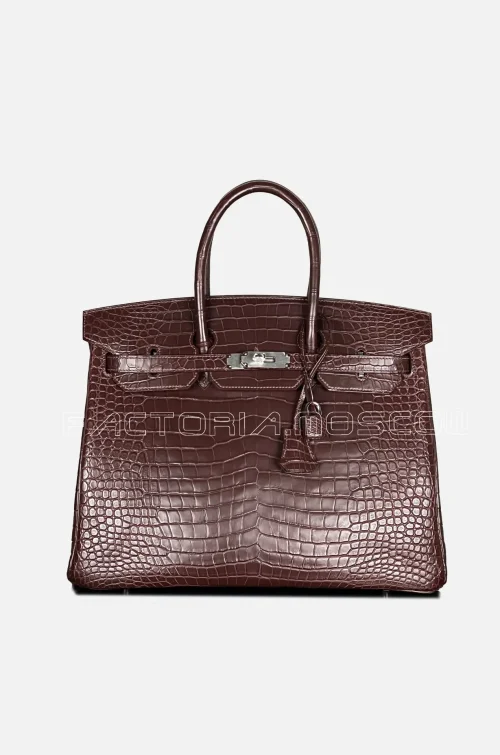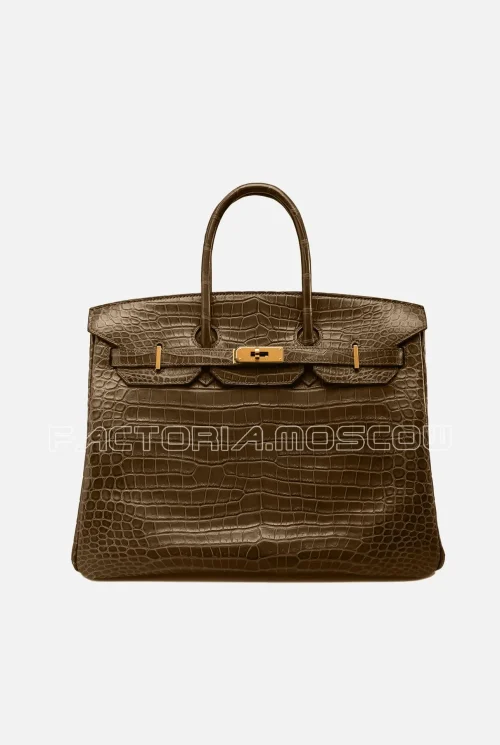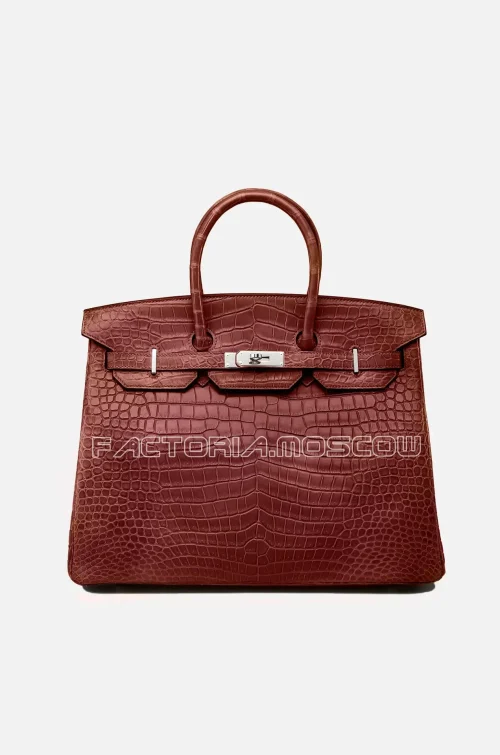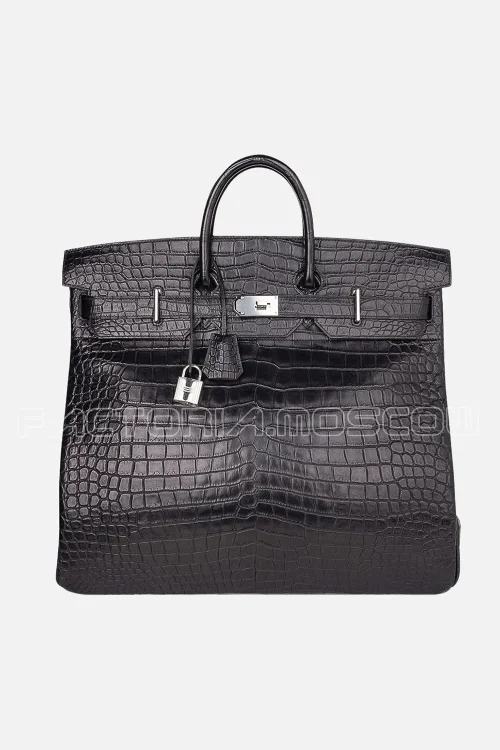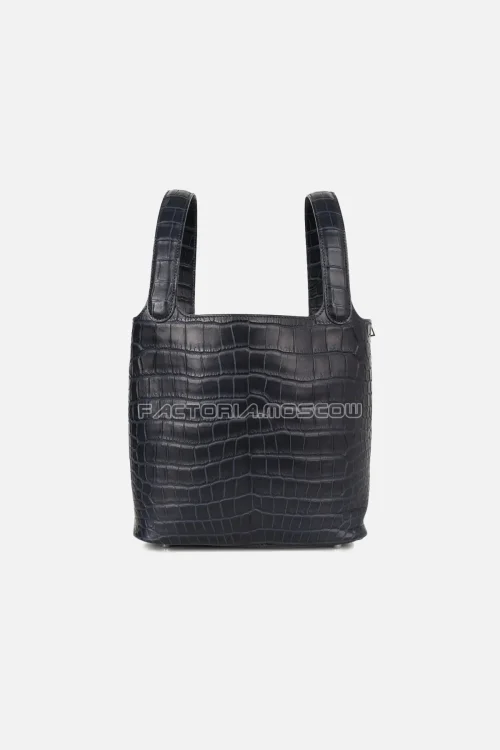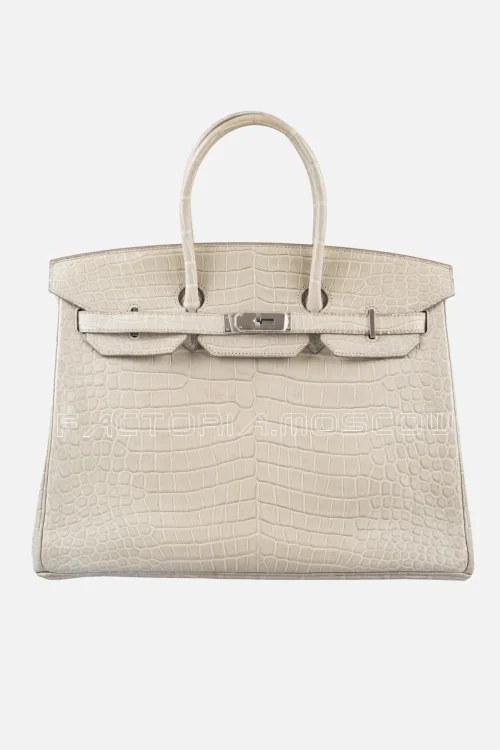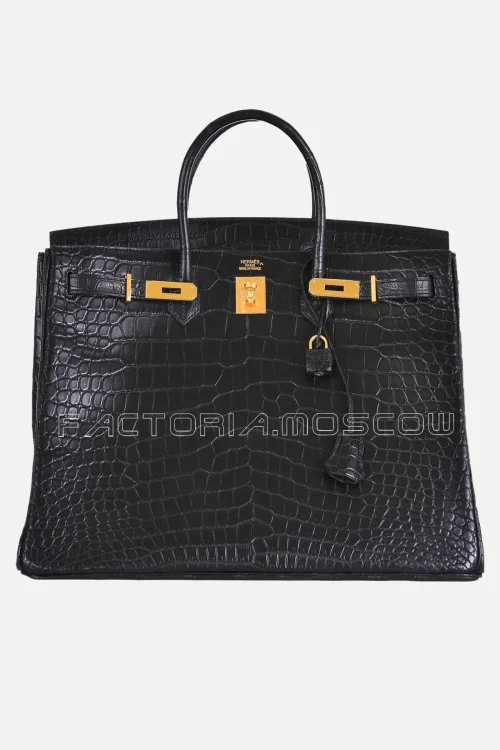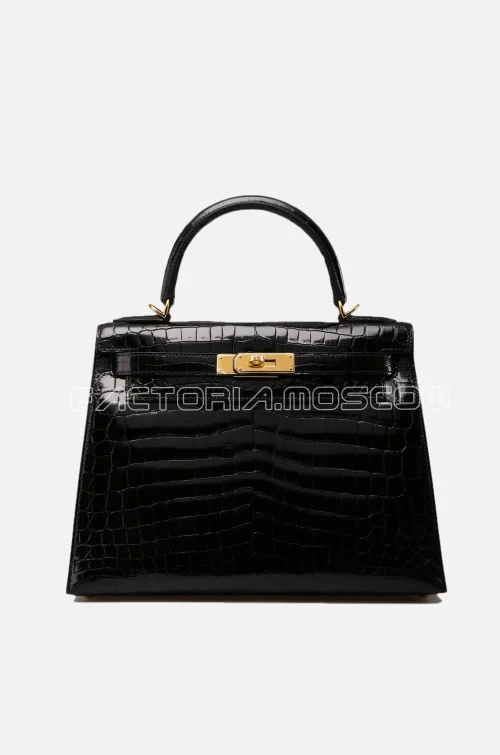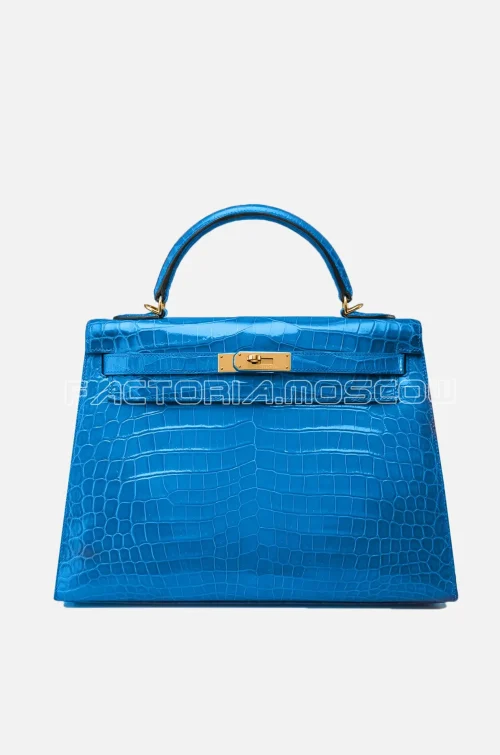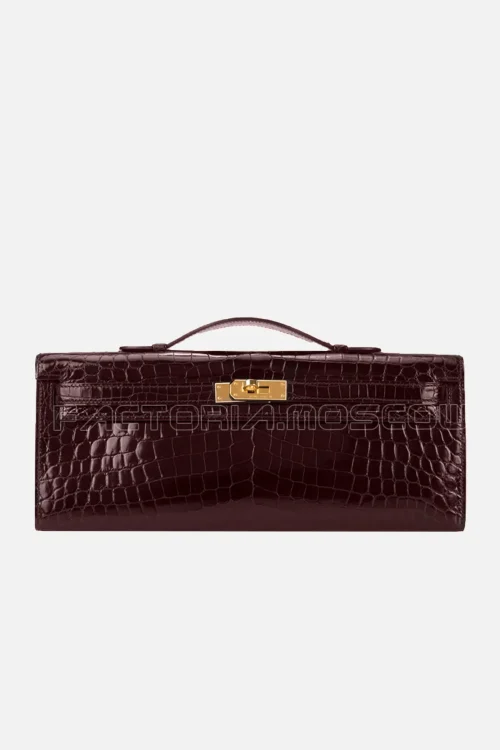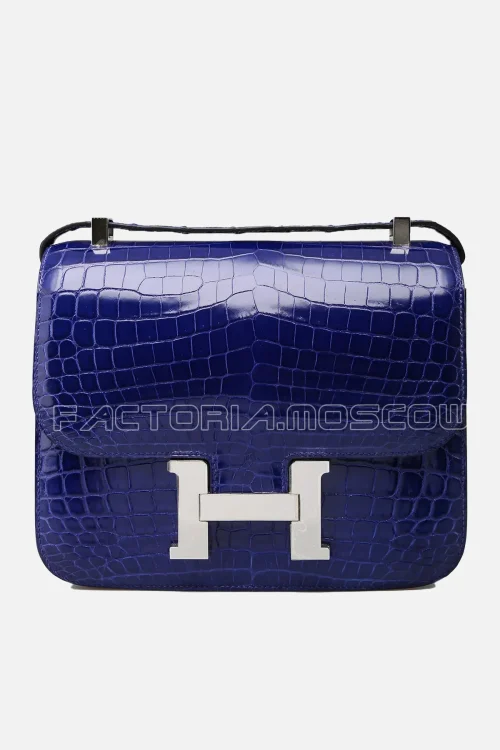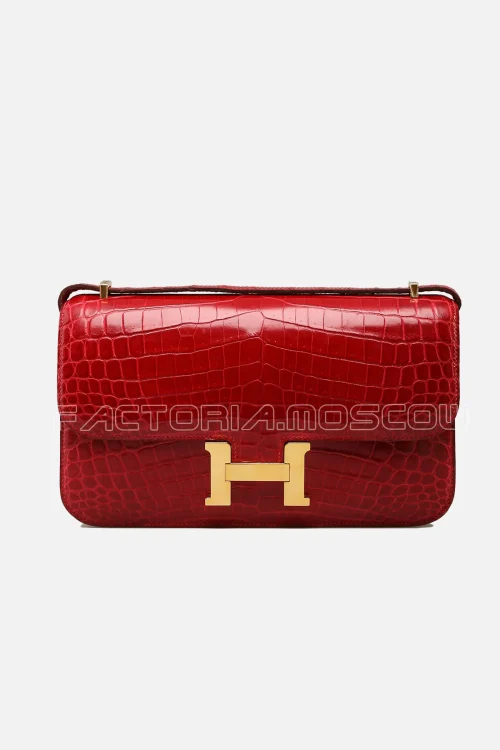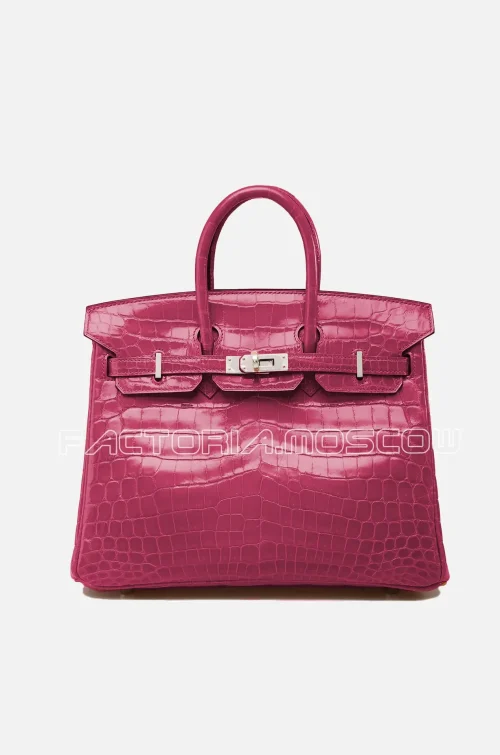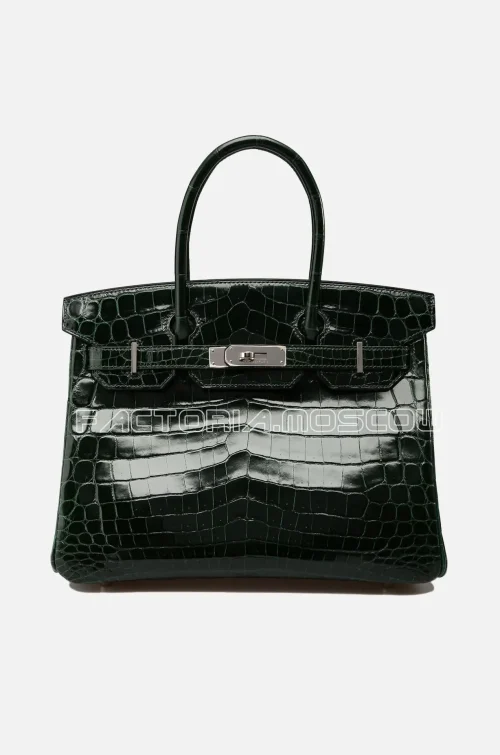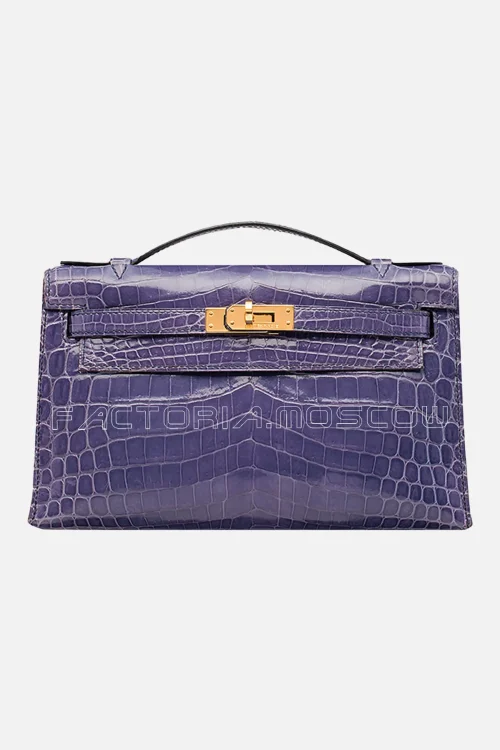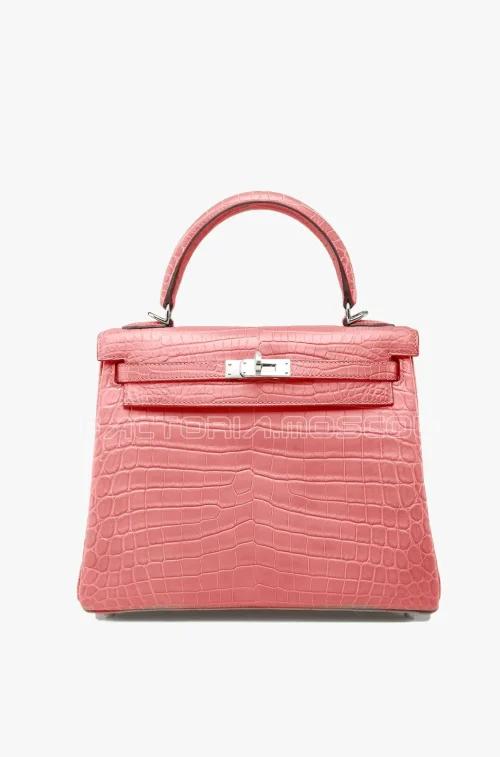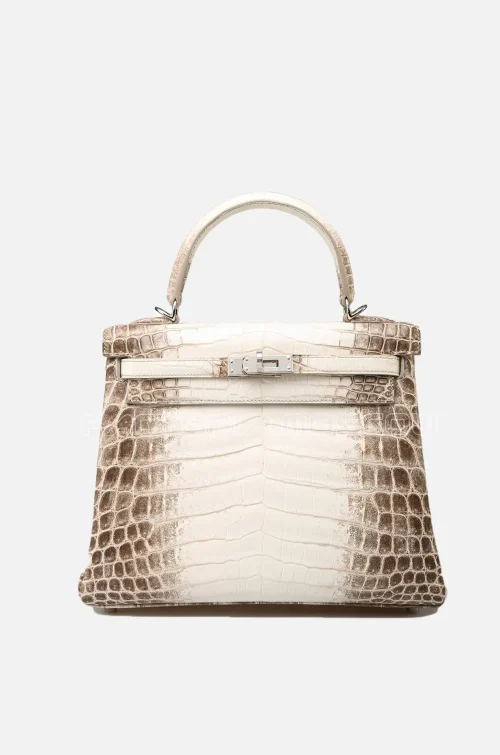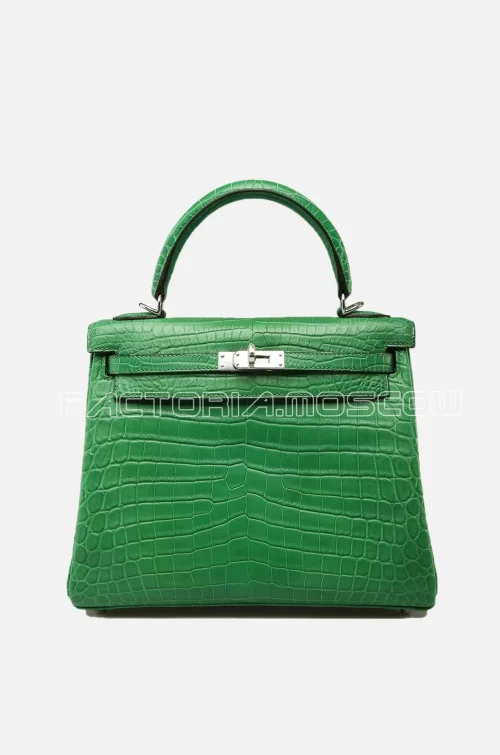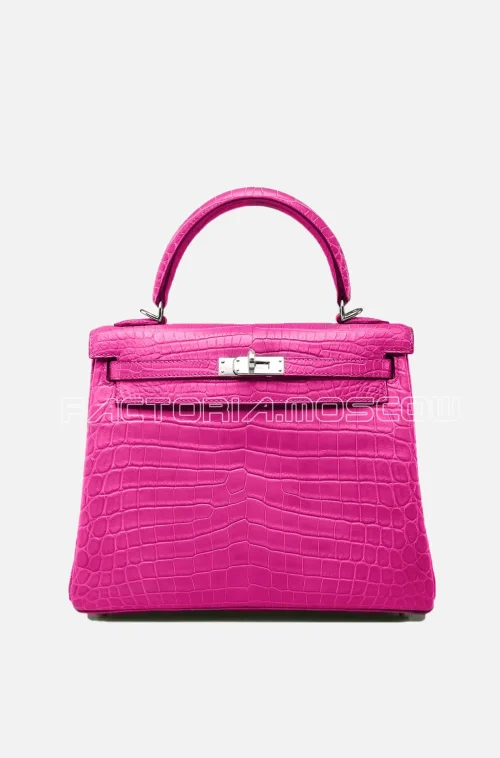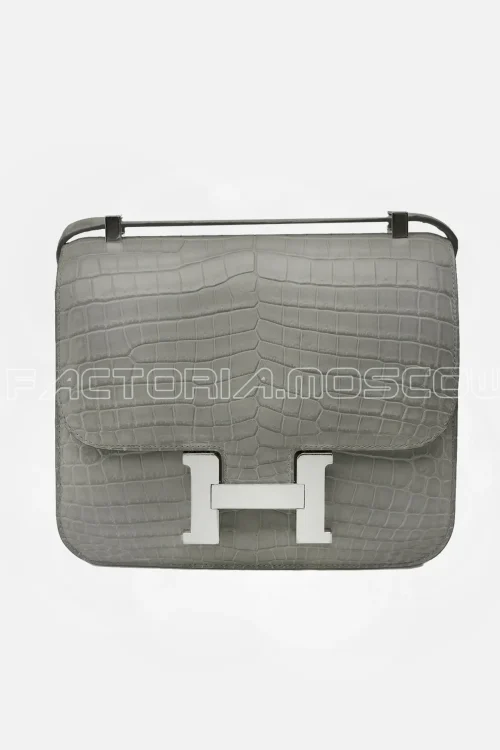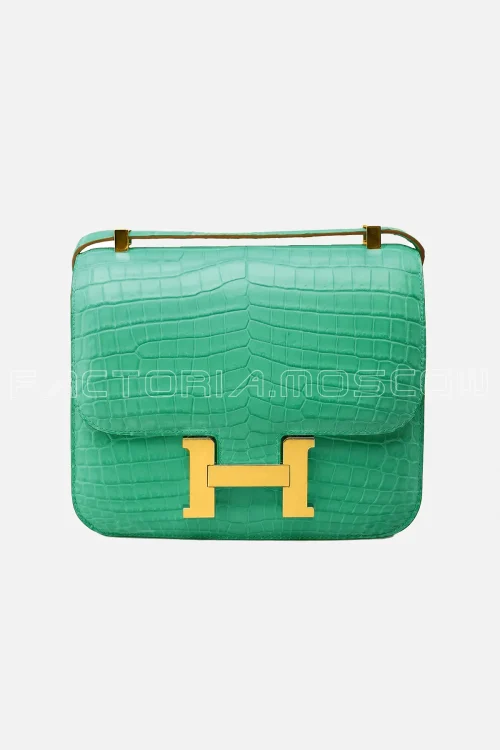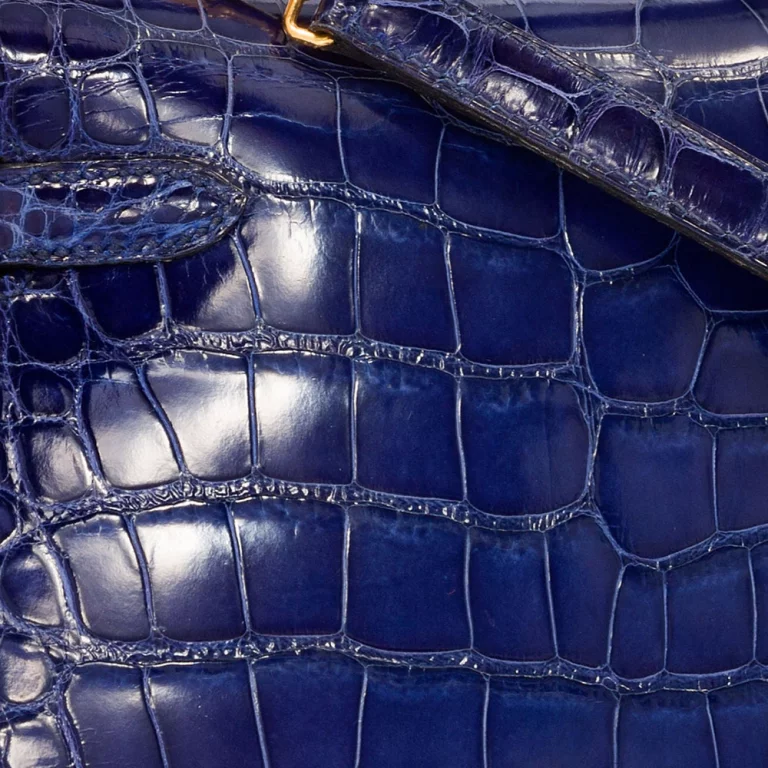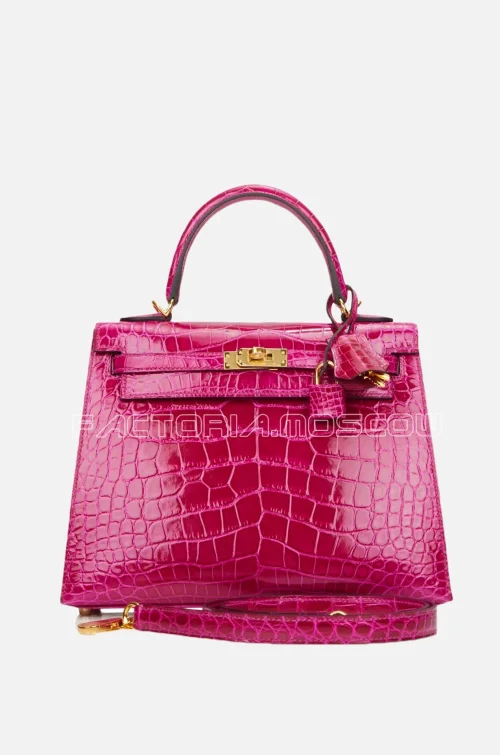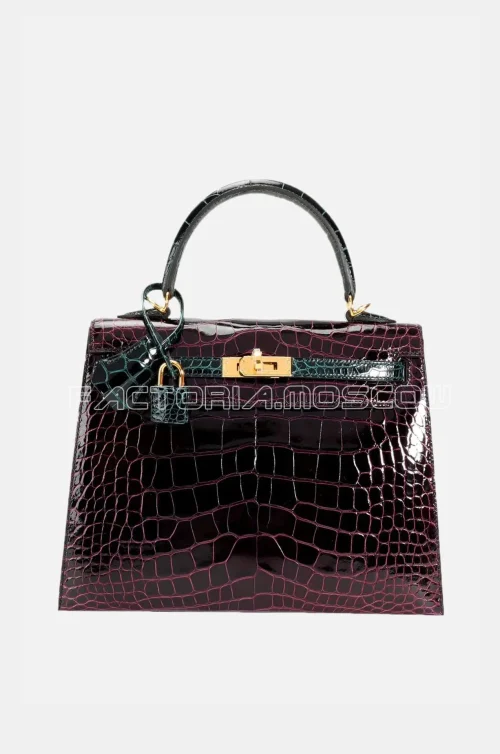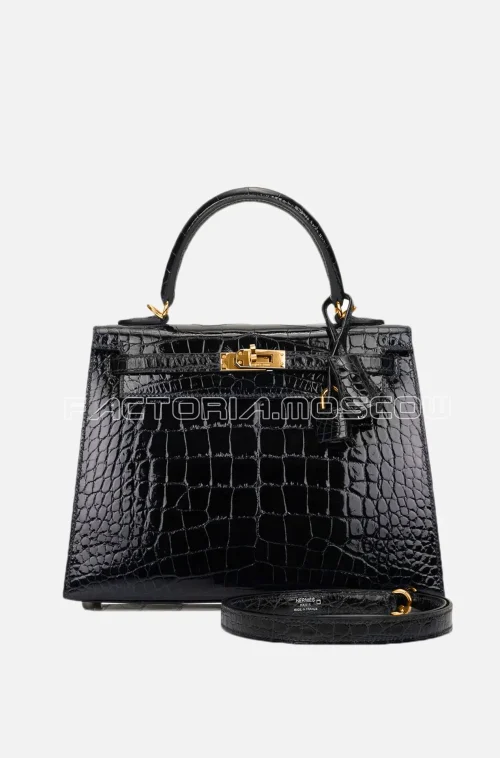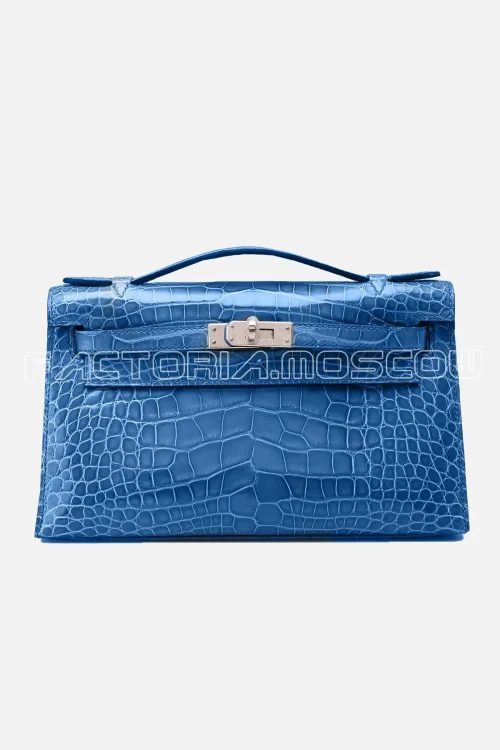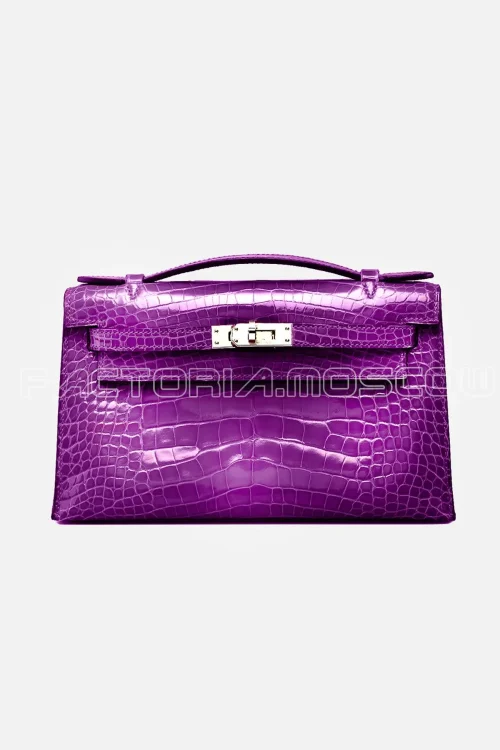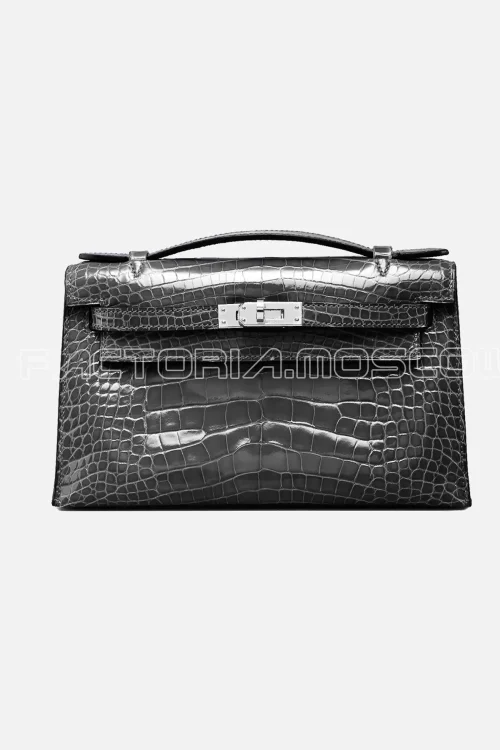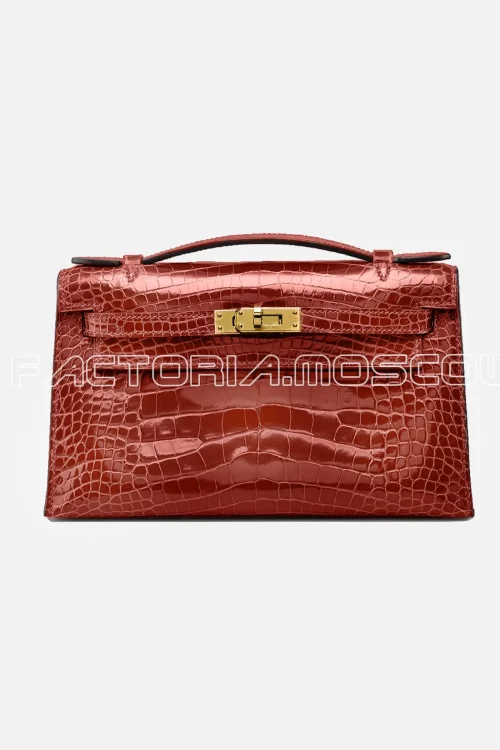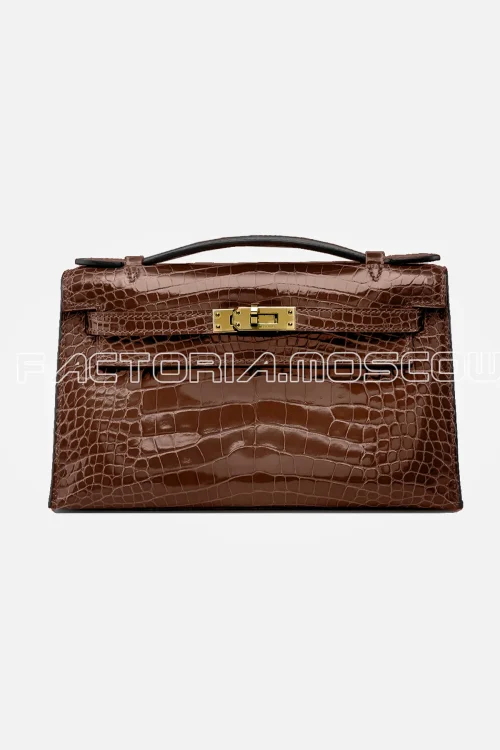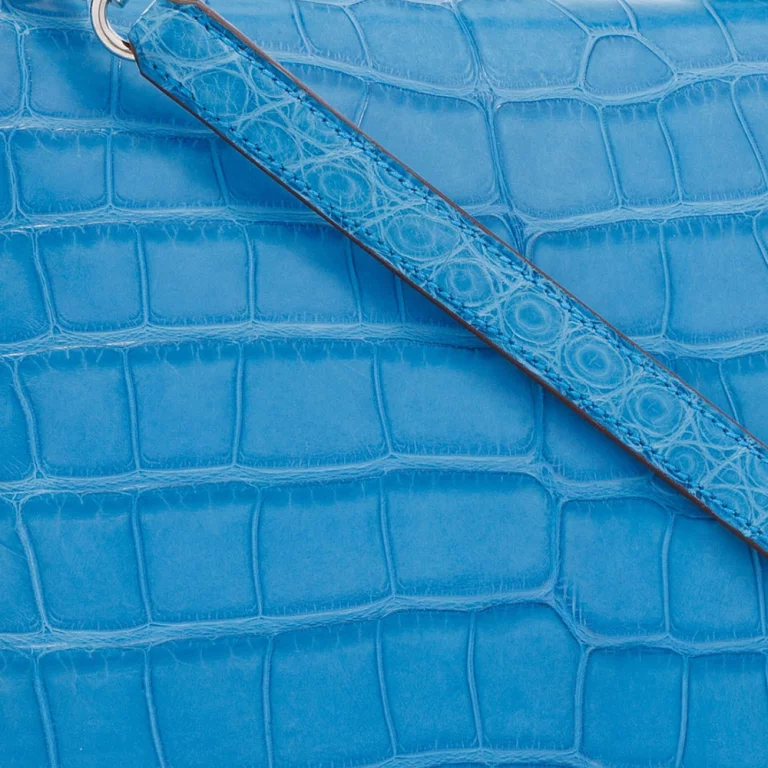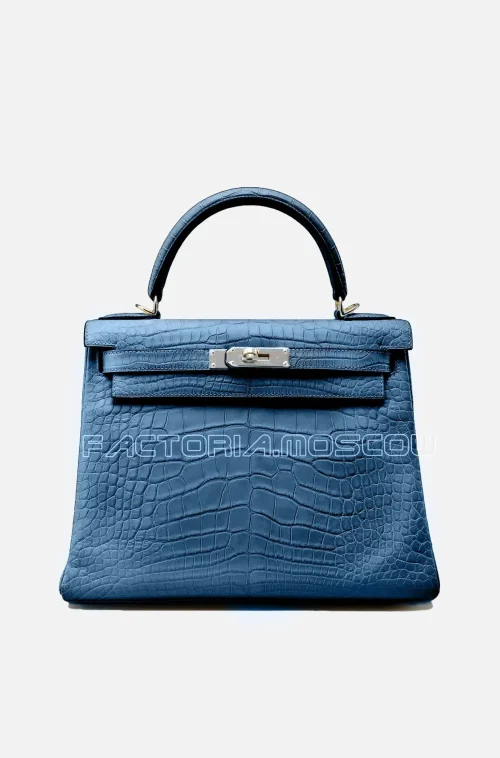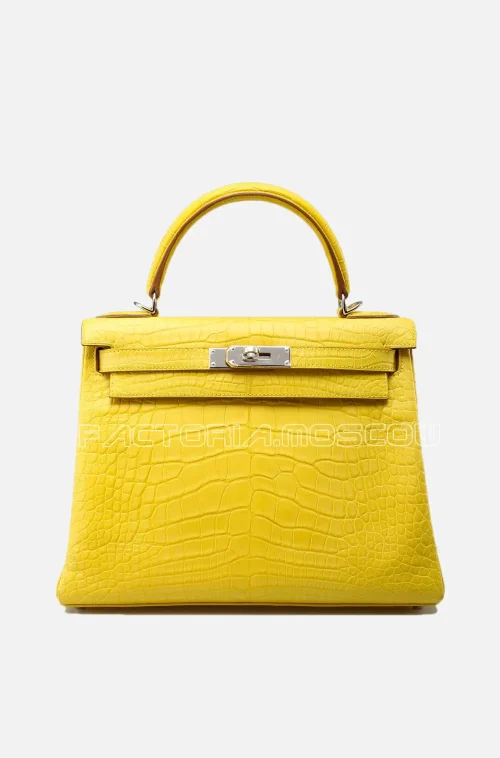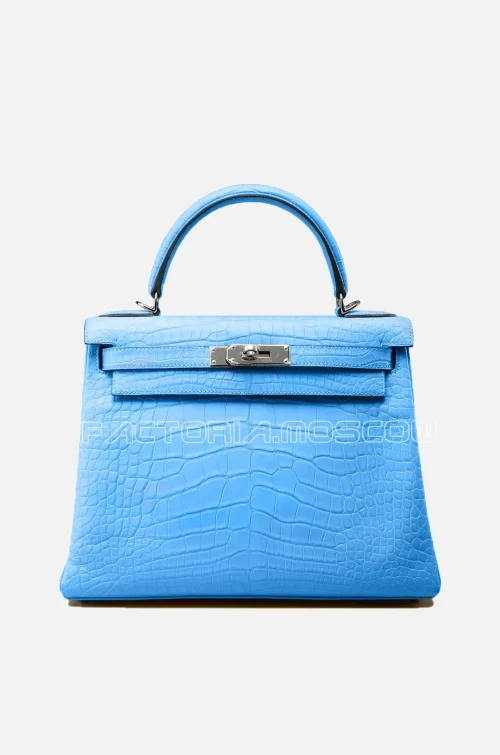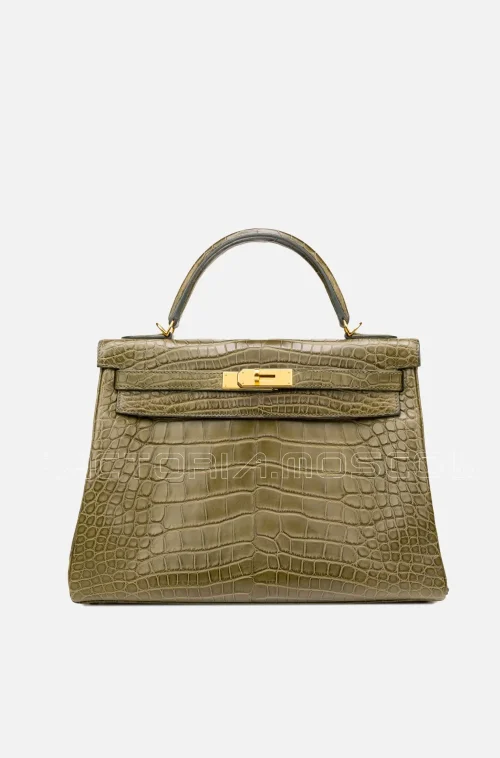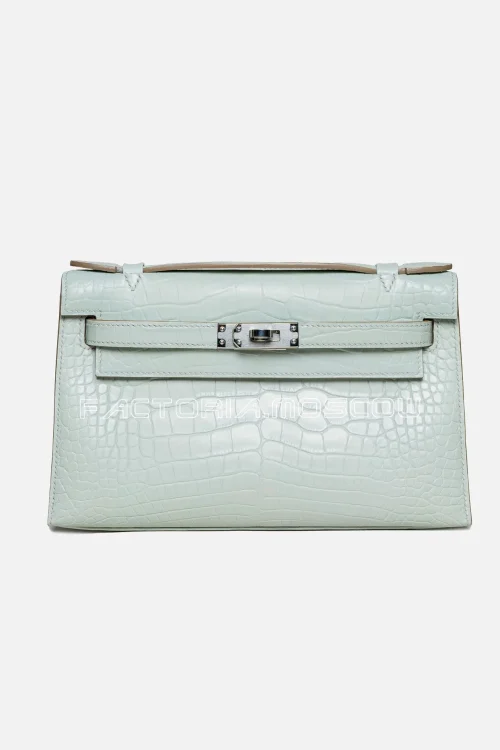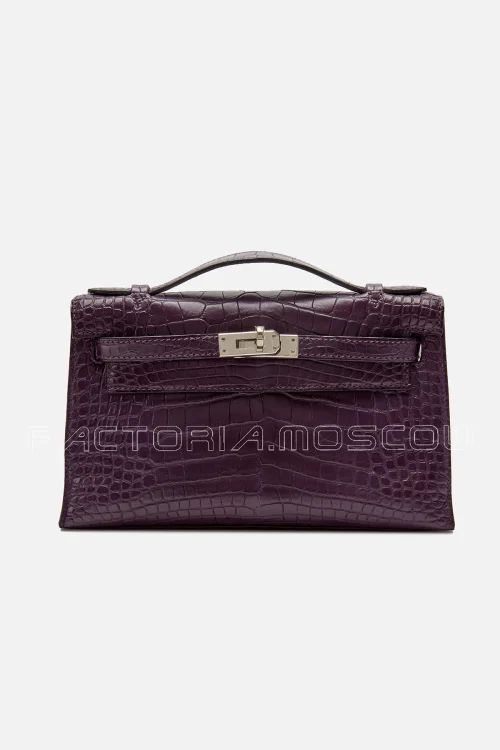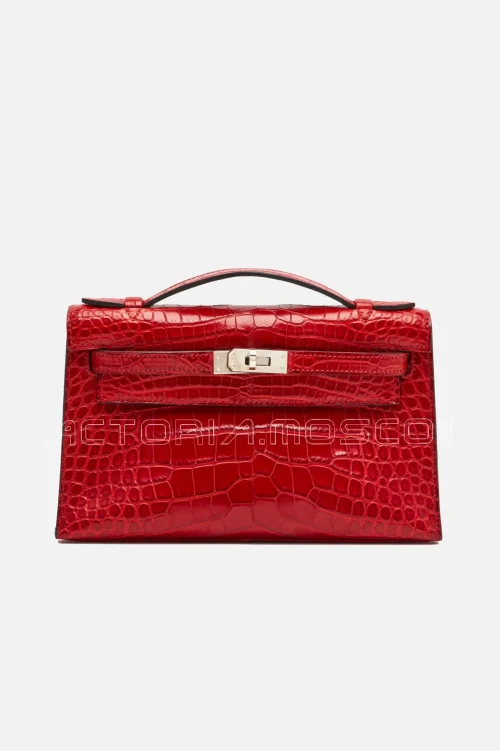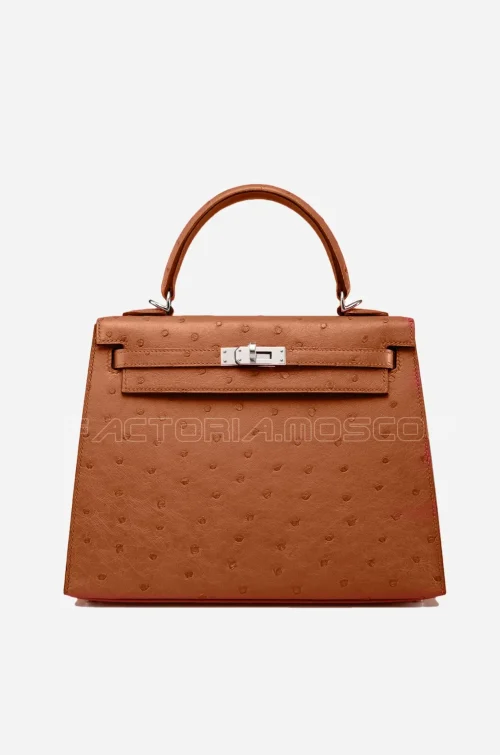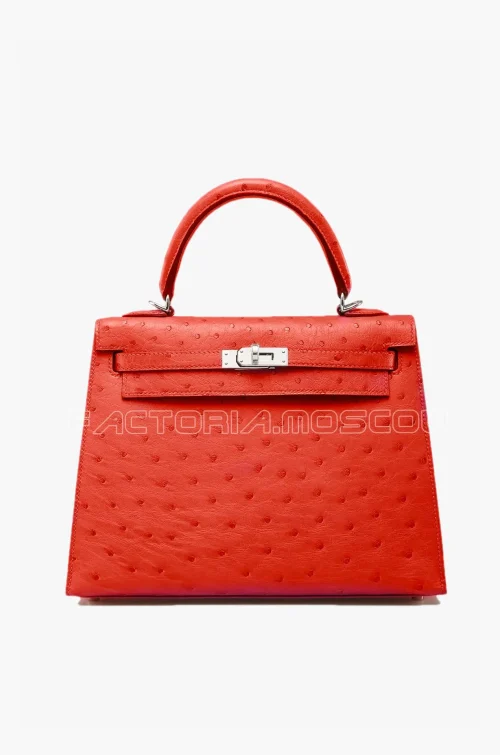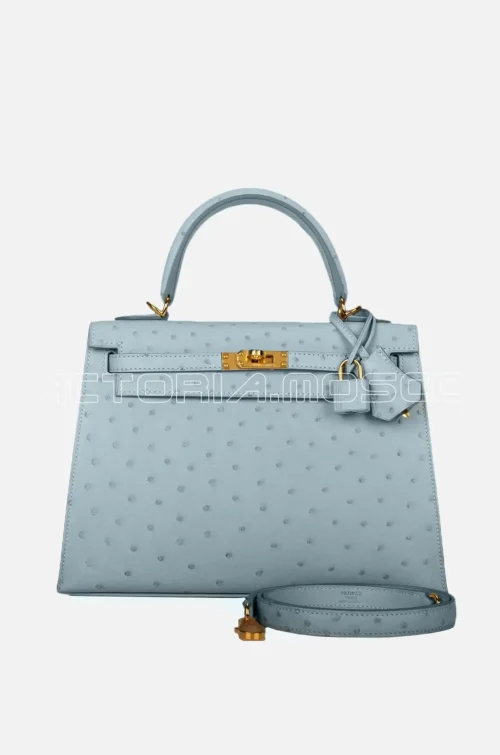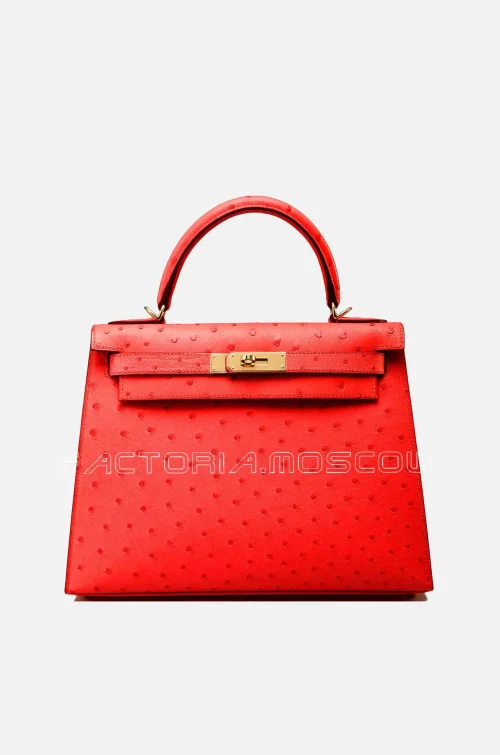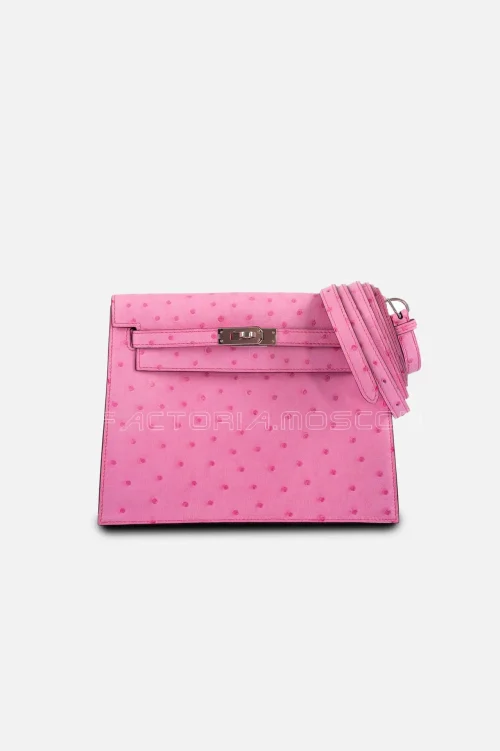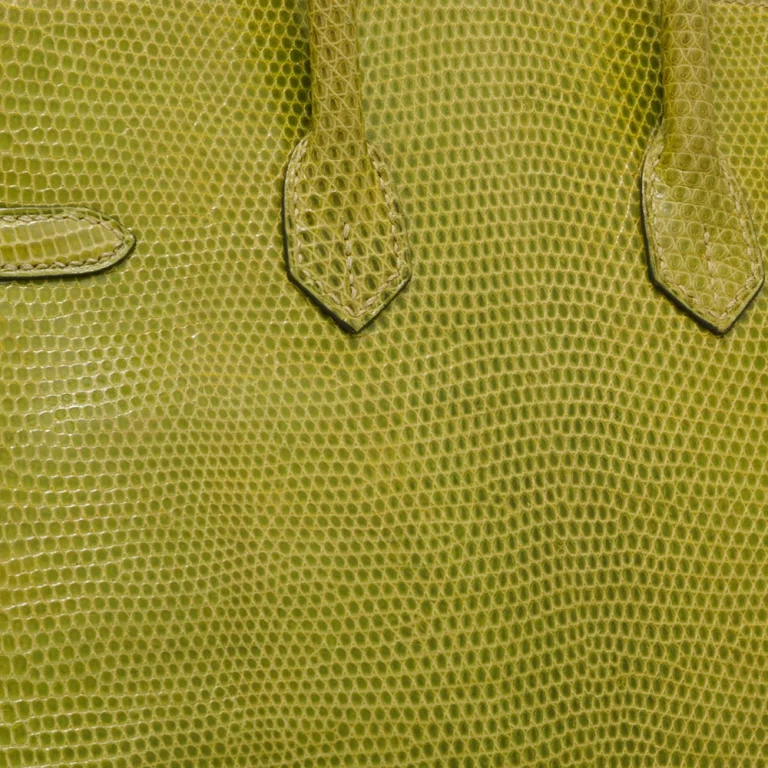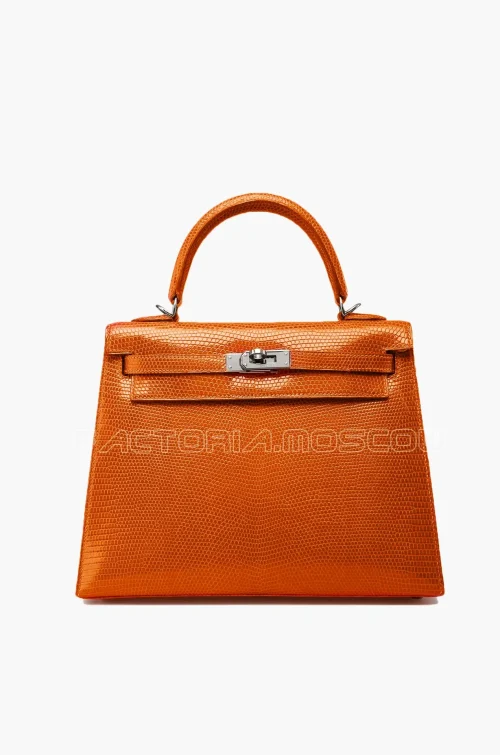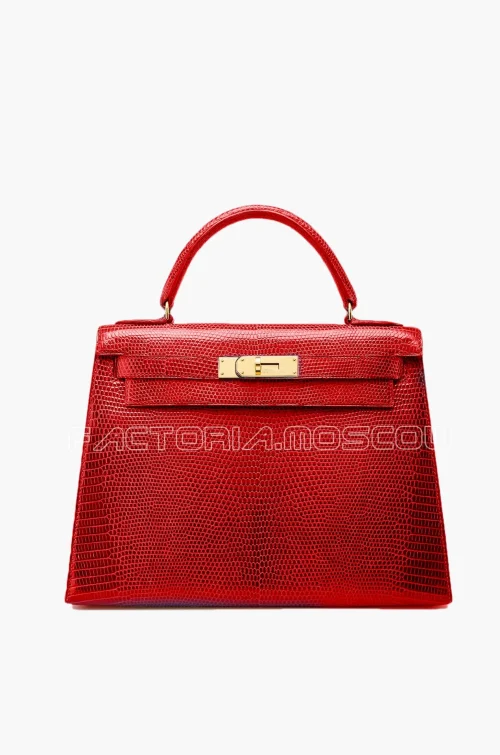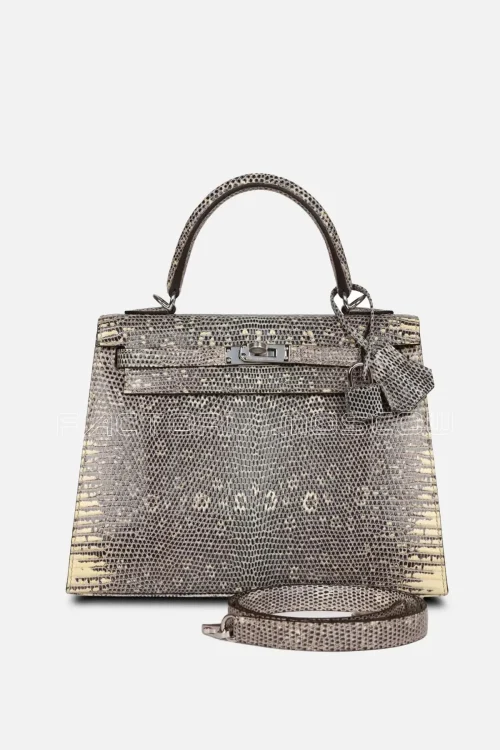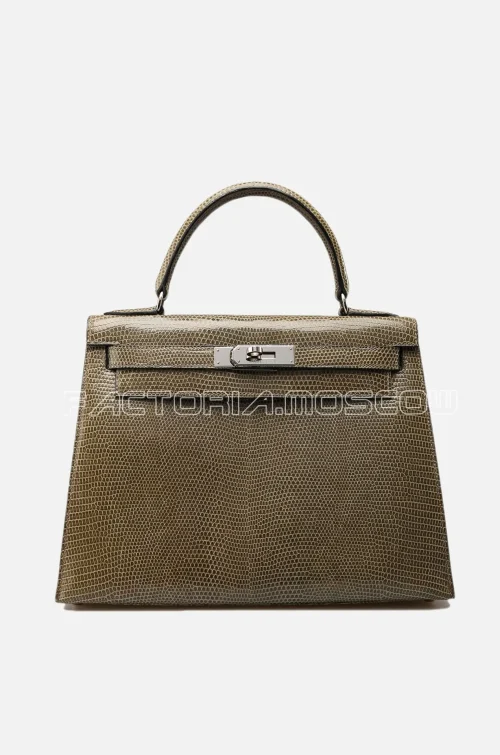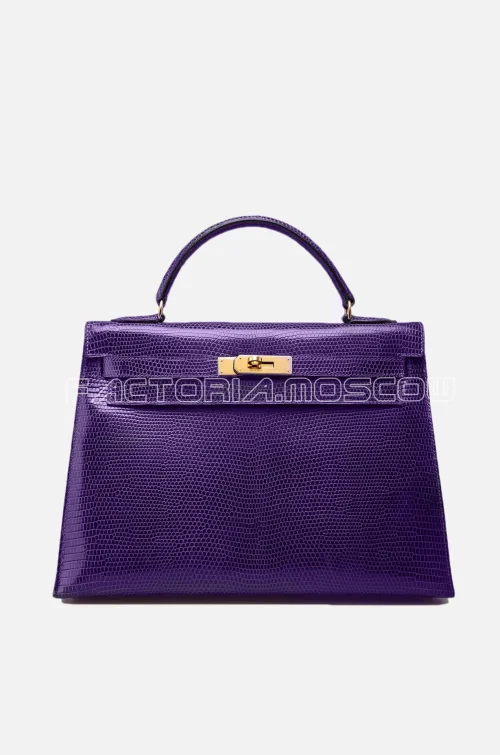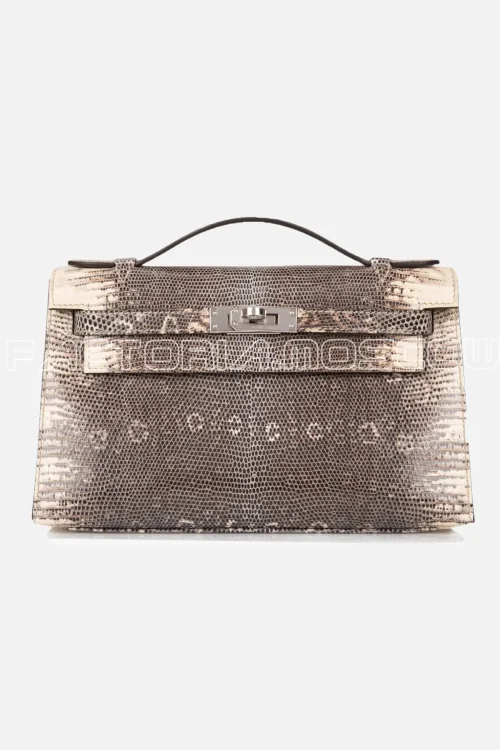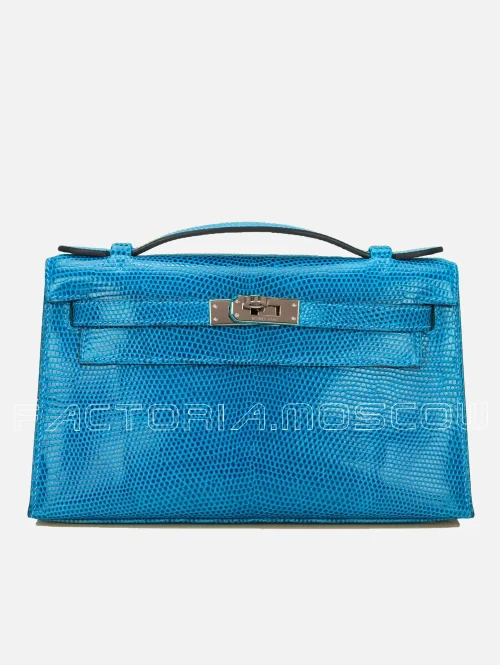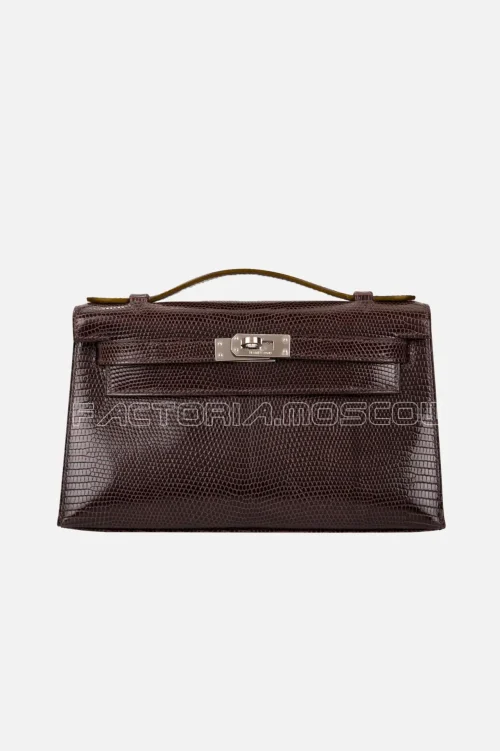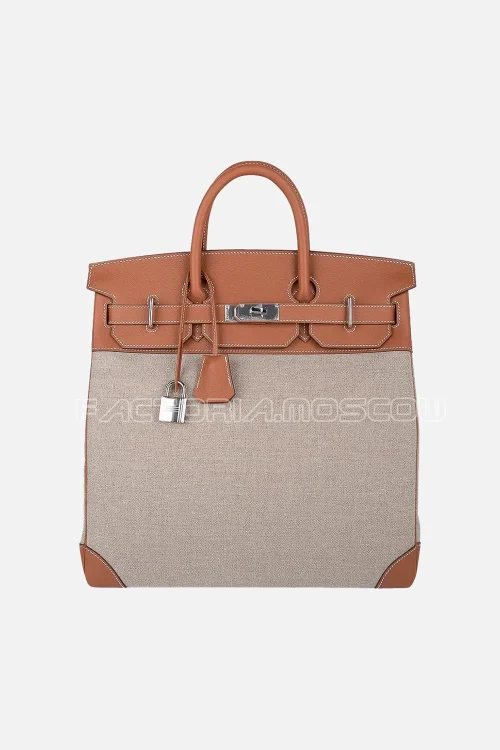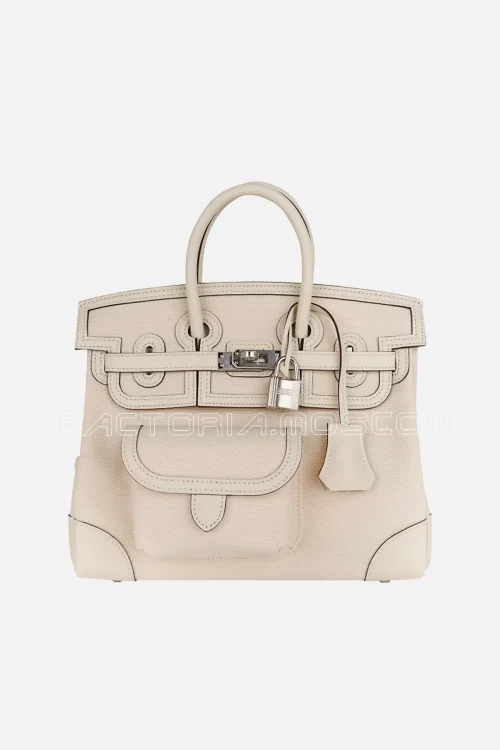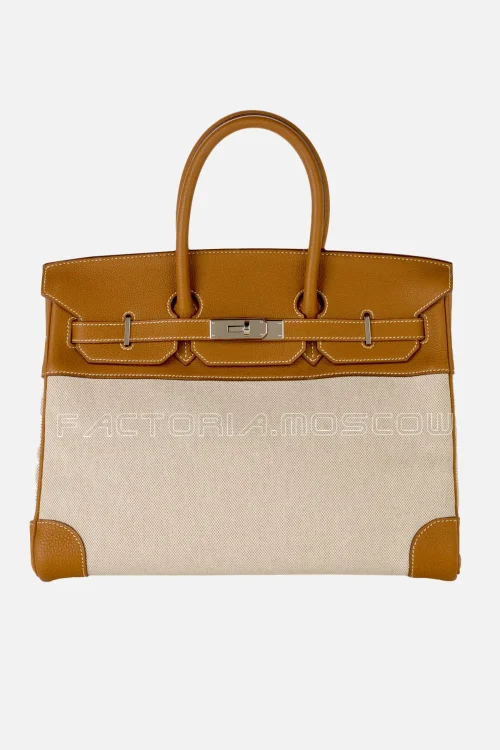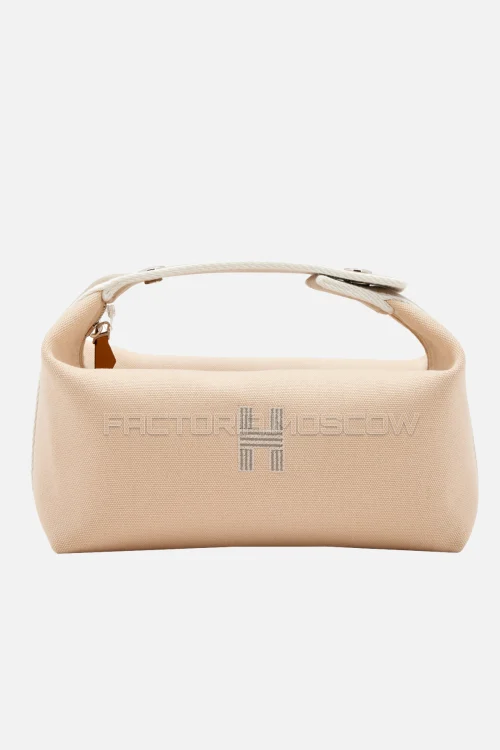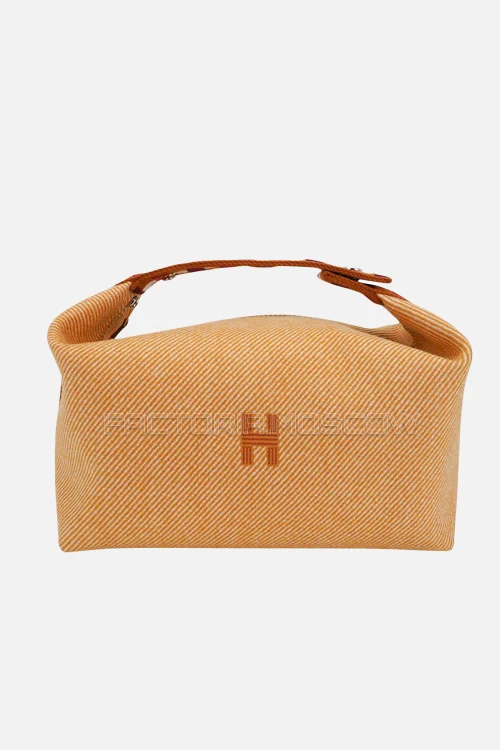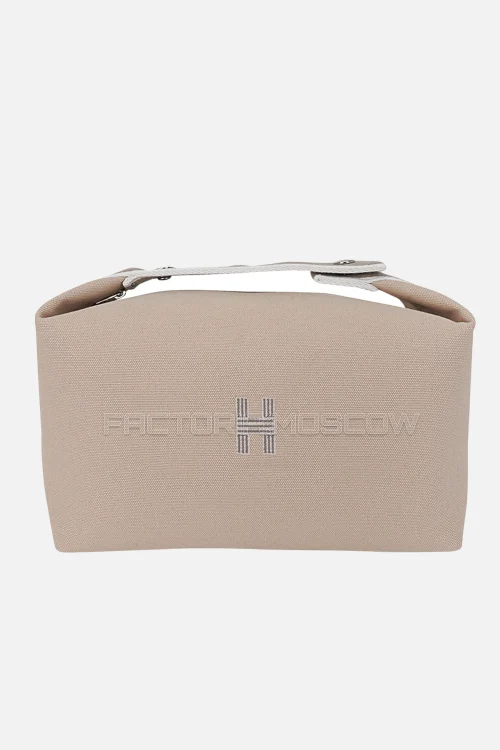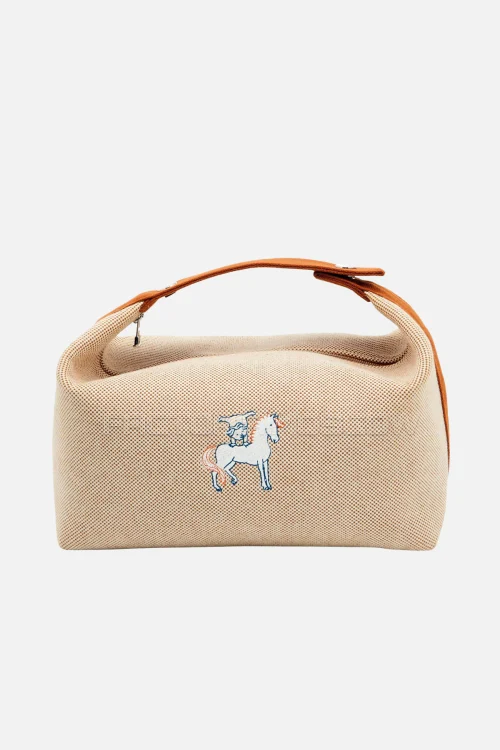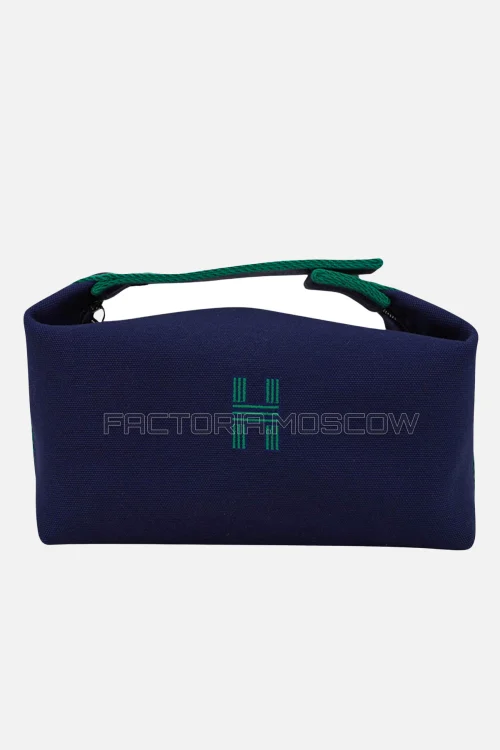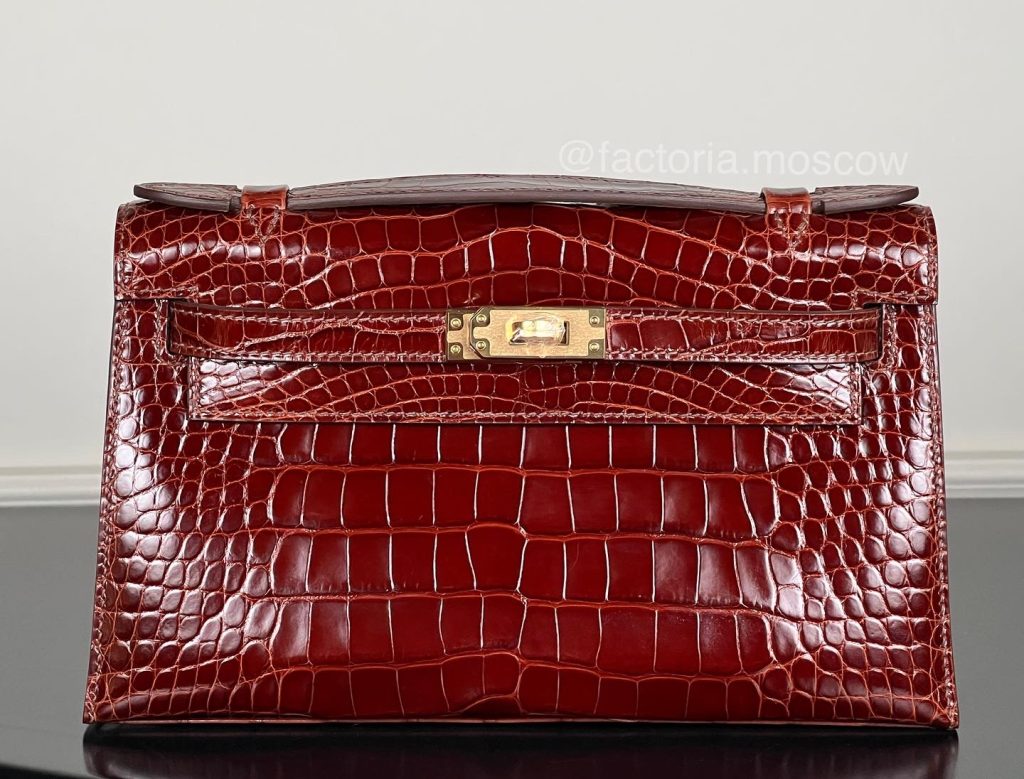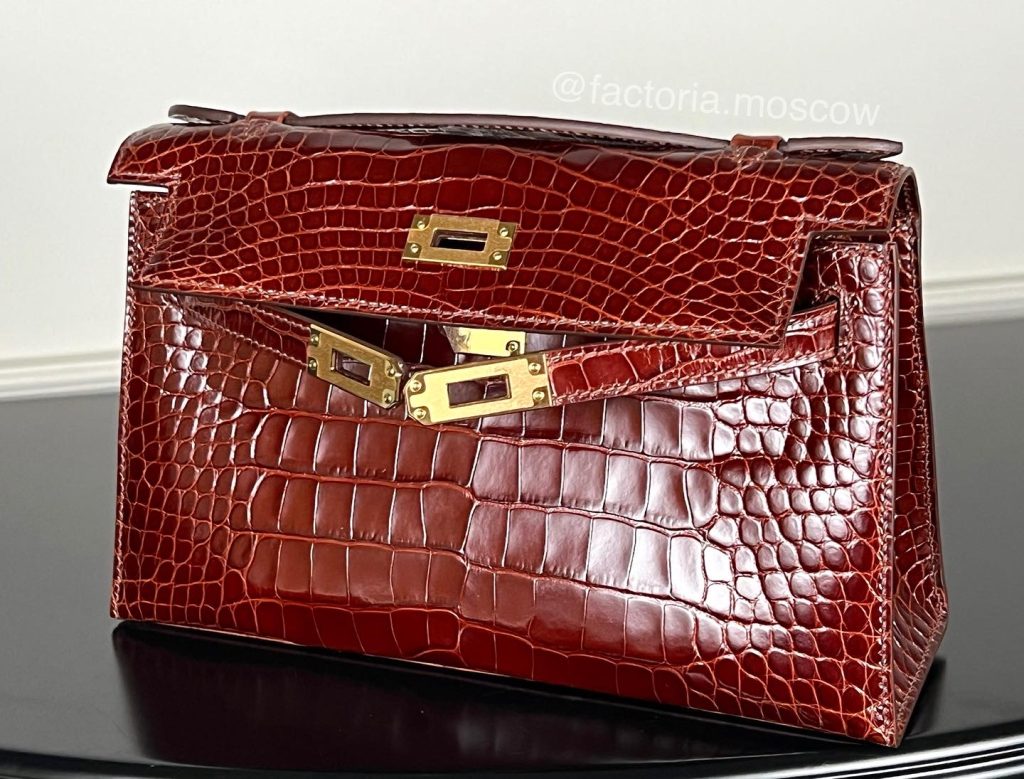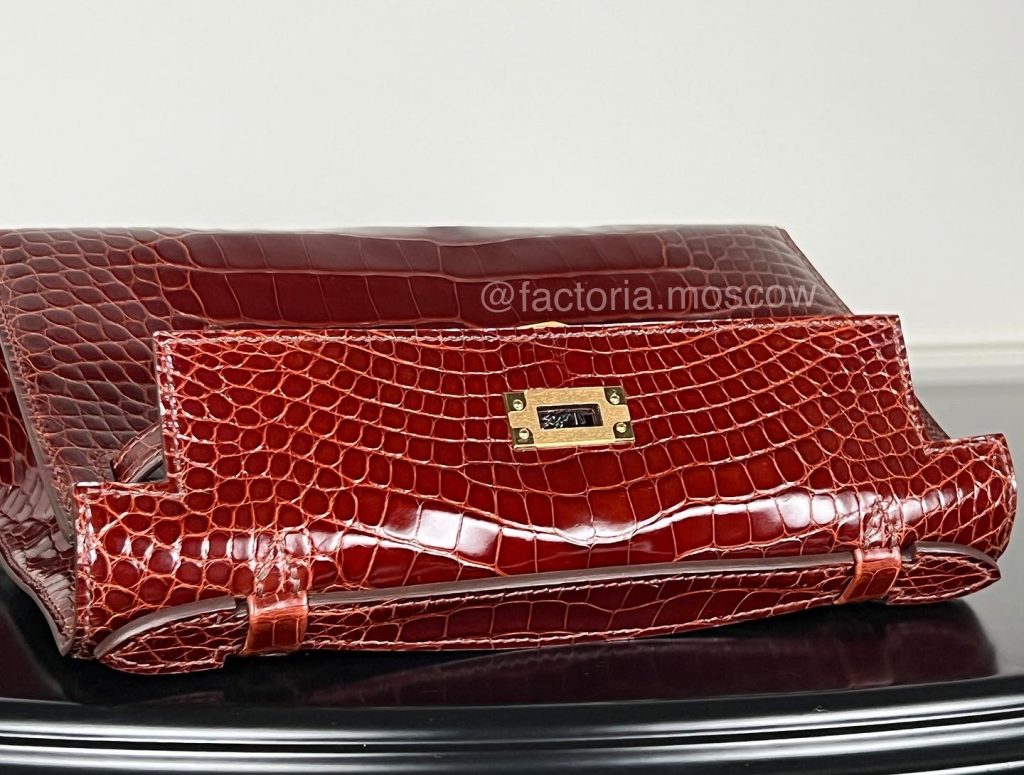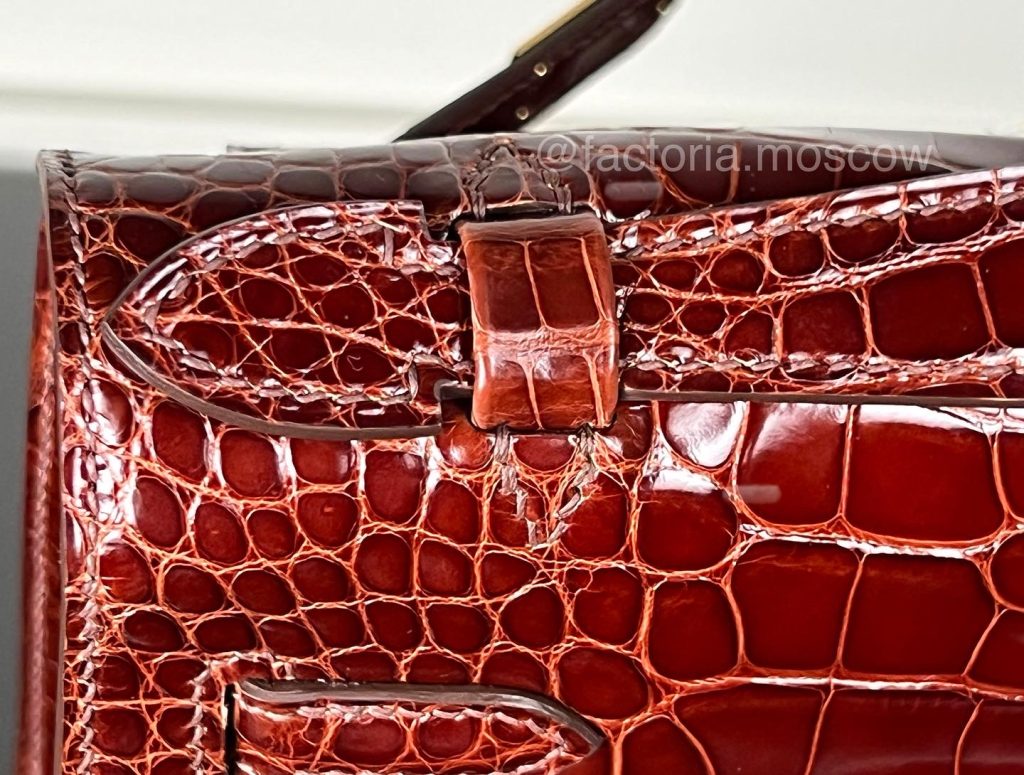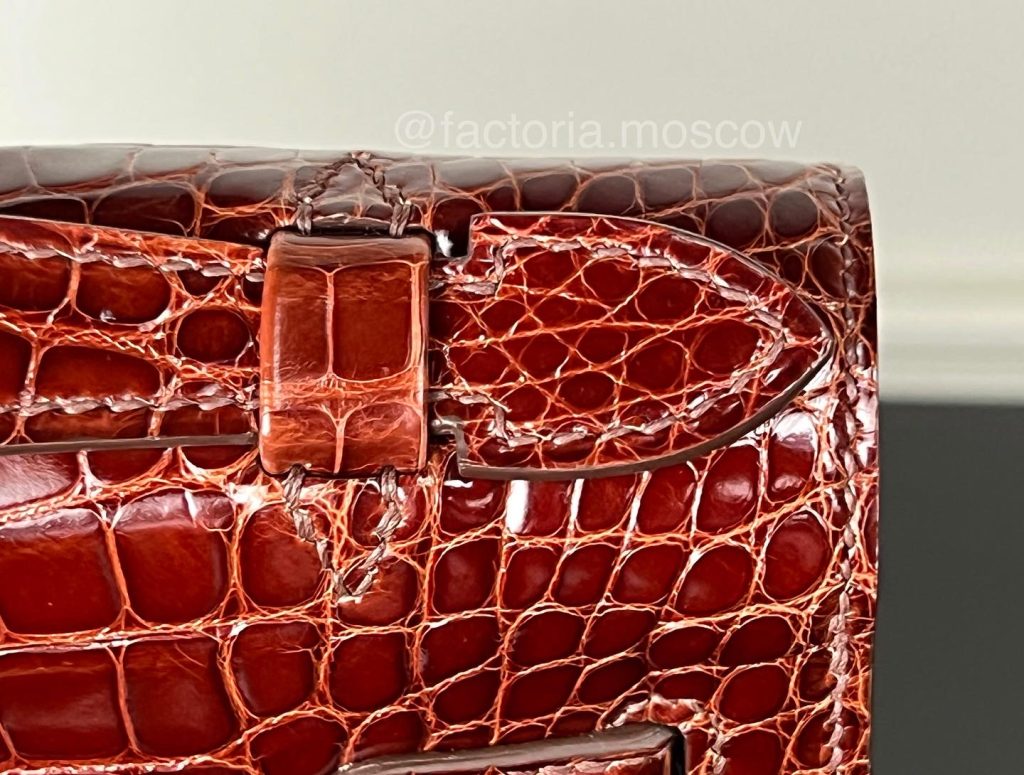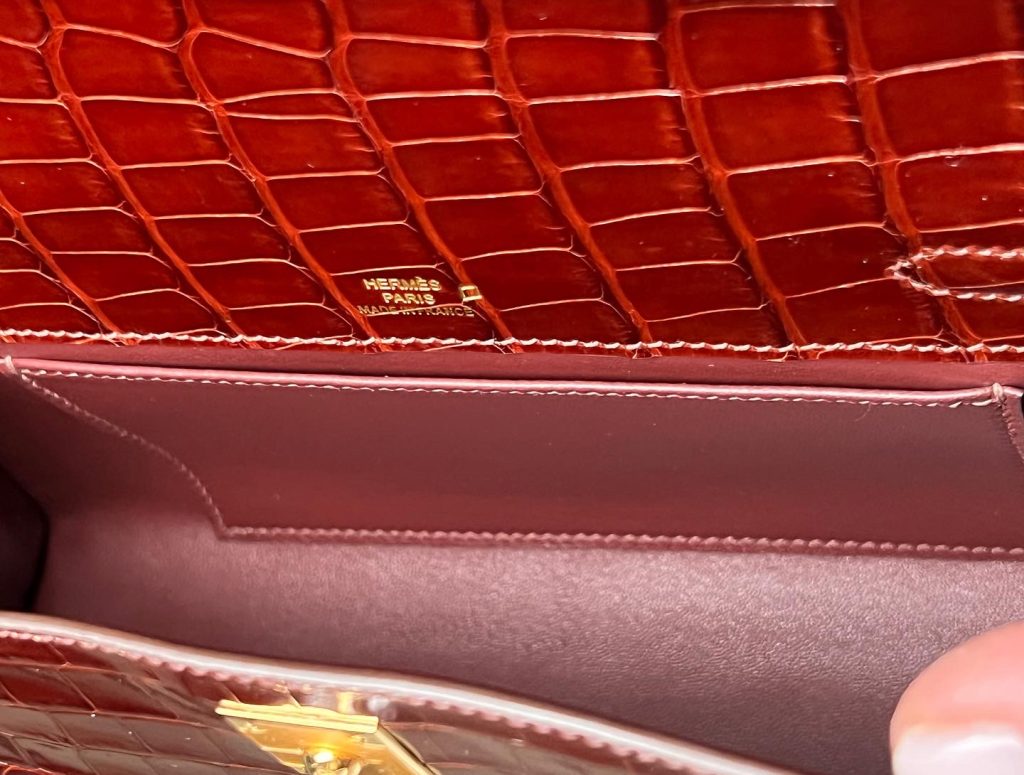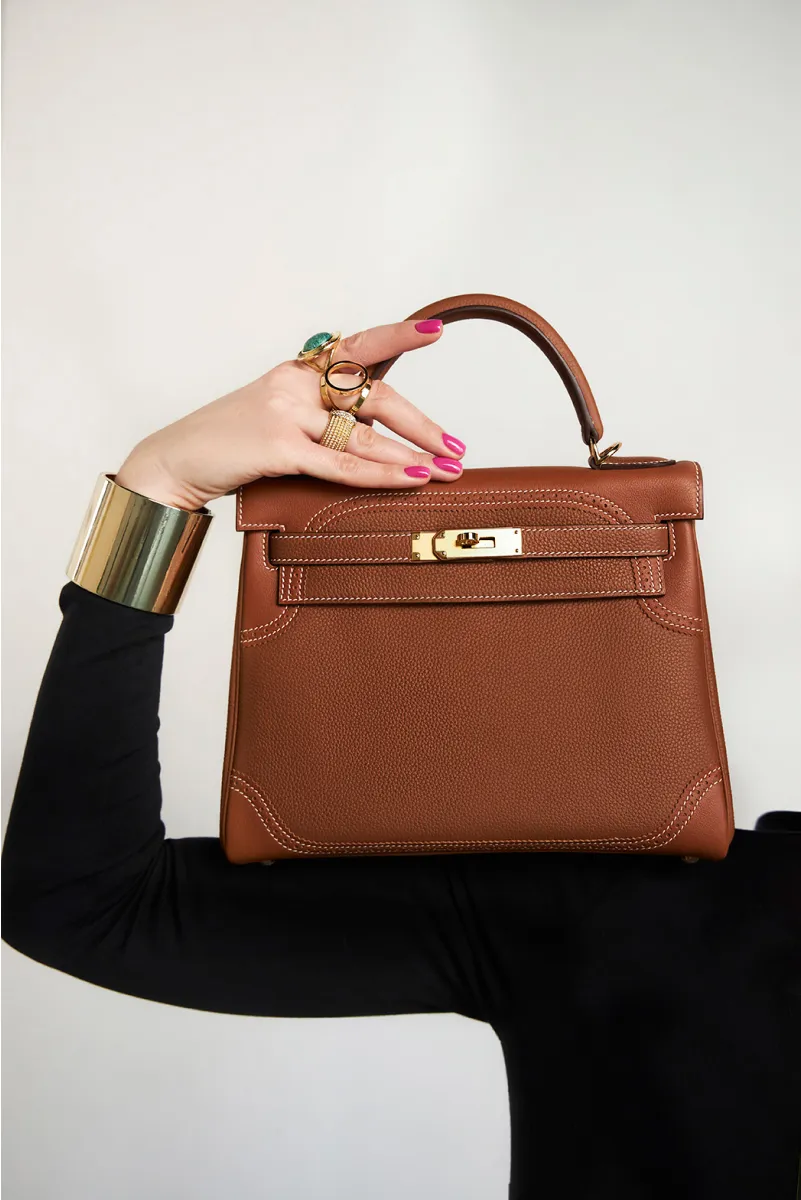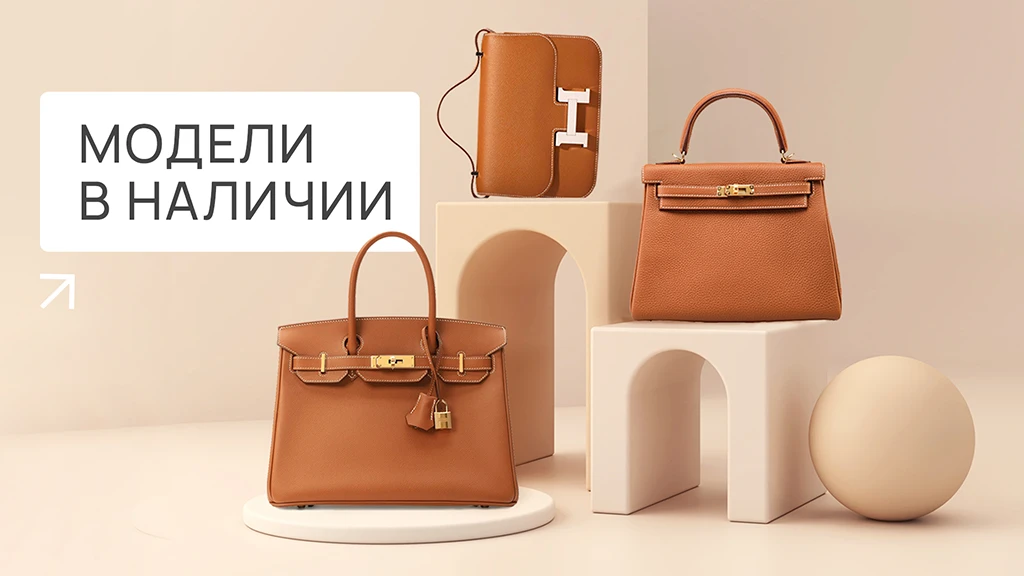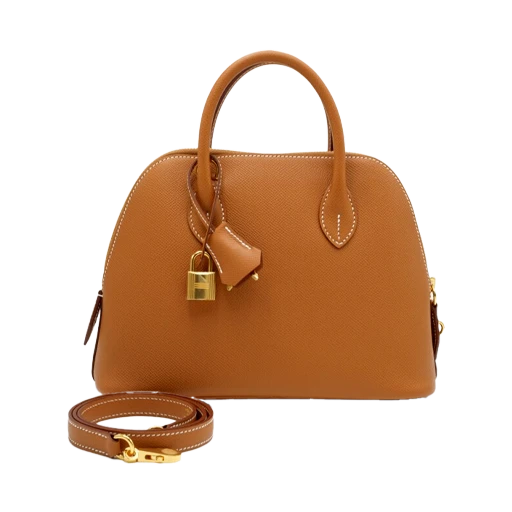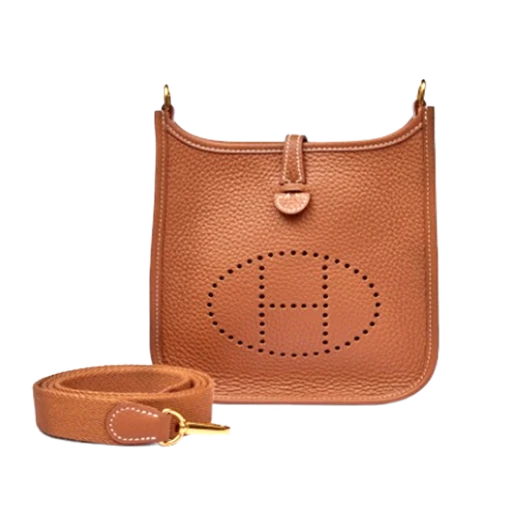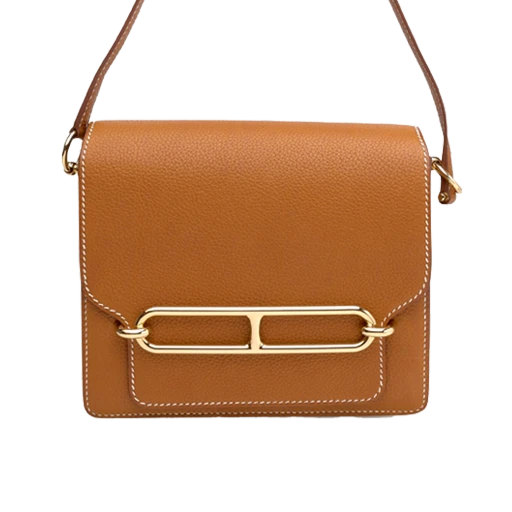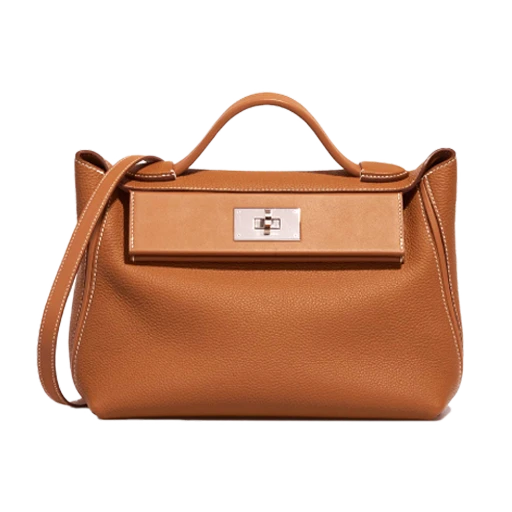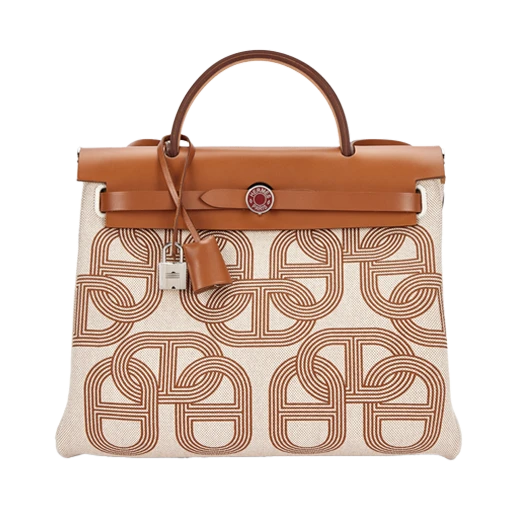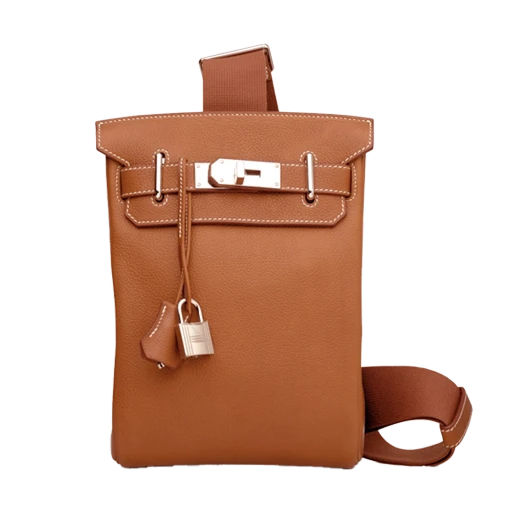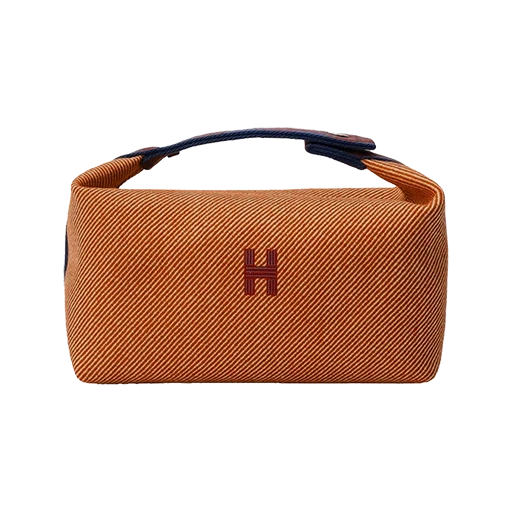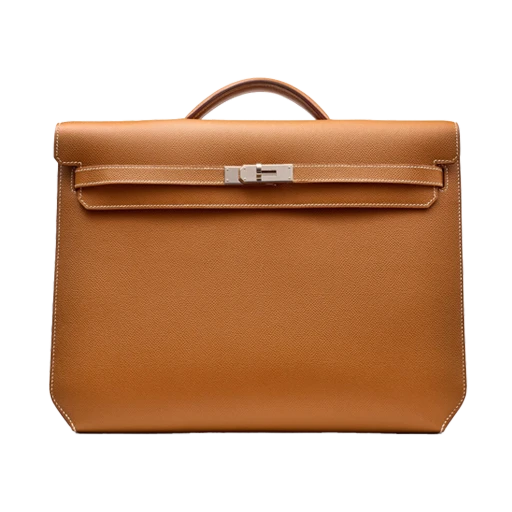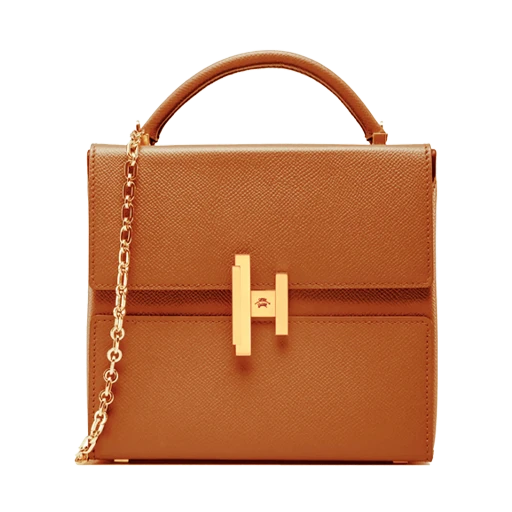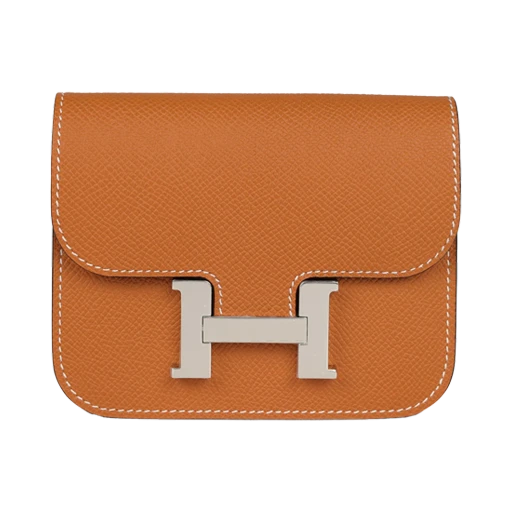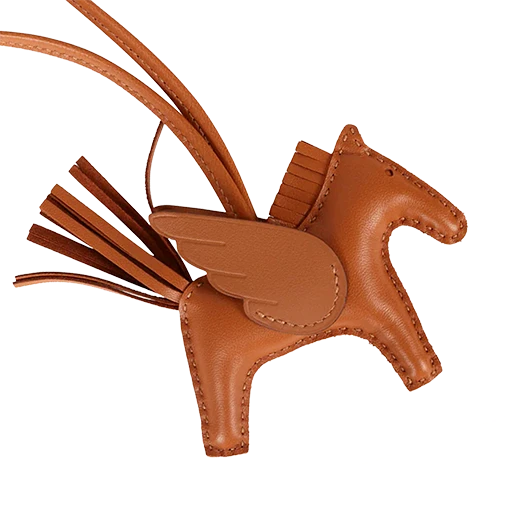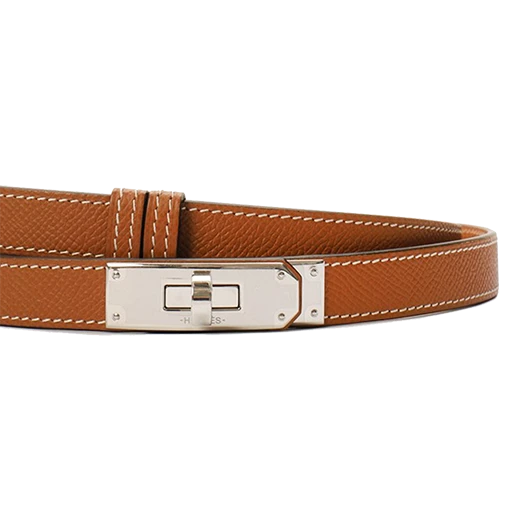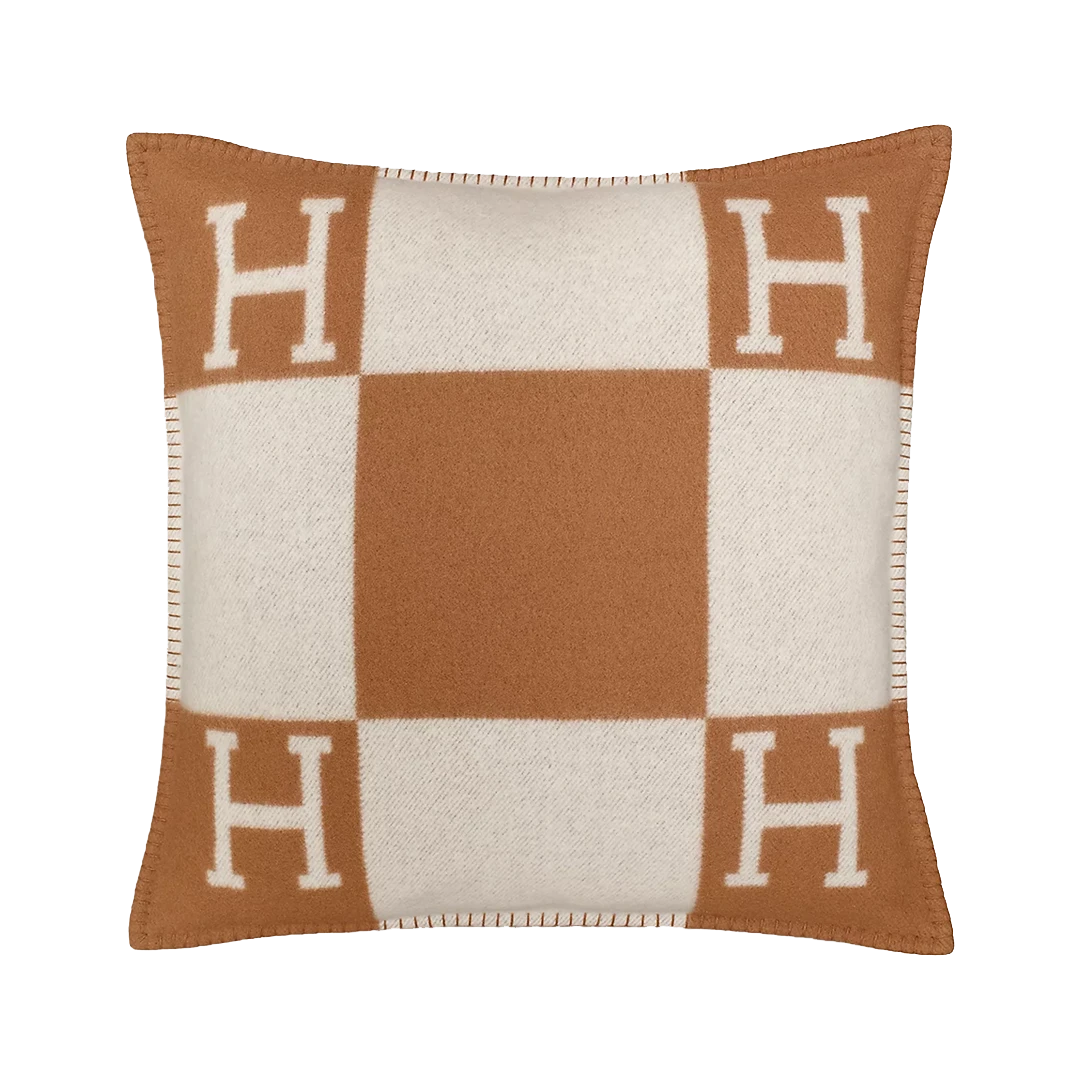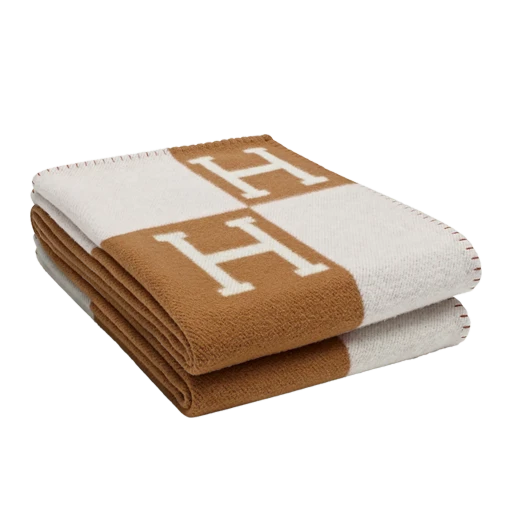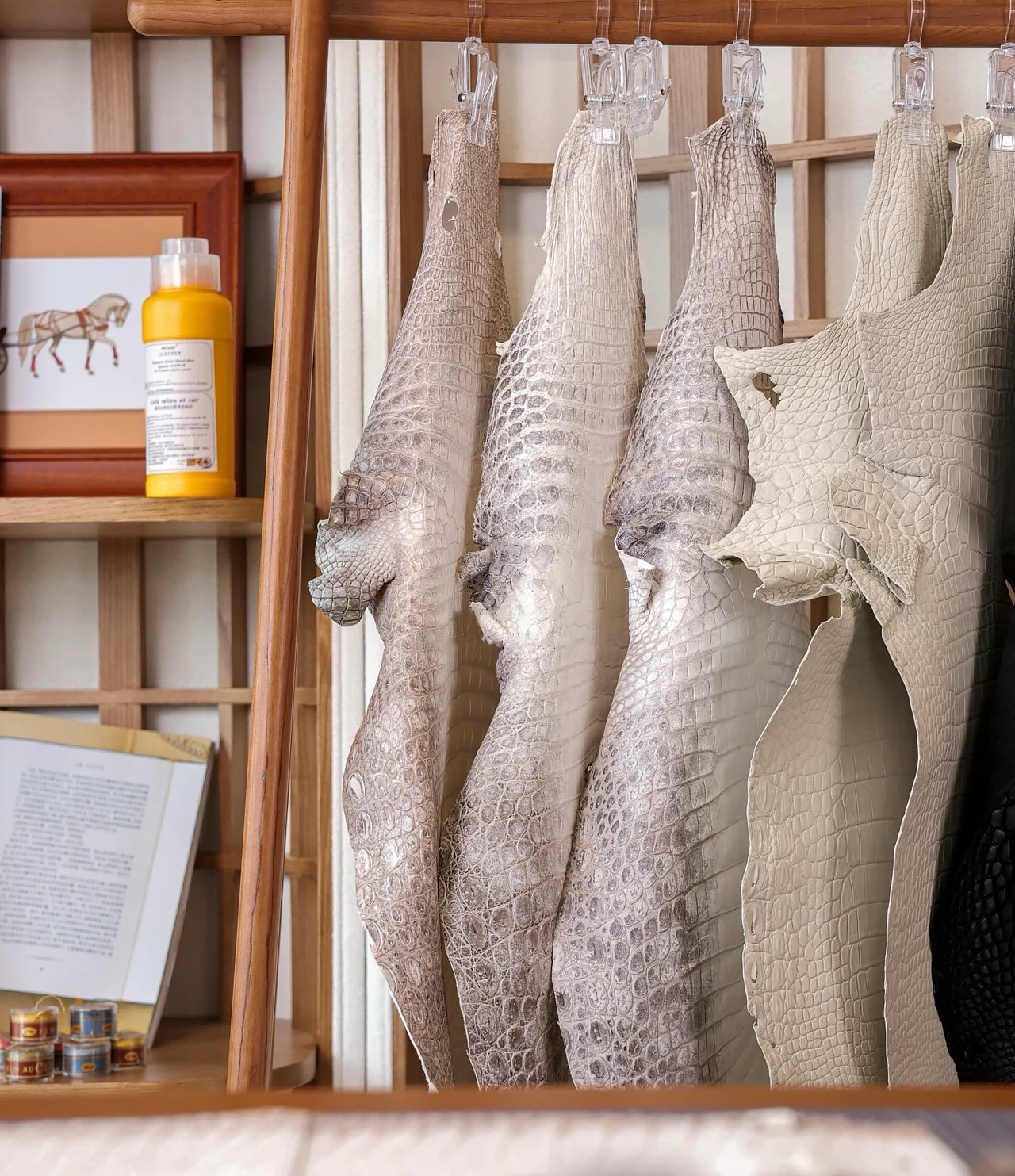
Leather for Hermes bags
The same as the original is used - certified by the European Leather Export Institute - (HCP, Xinglong, Von Hummel, HAAS).
Our factory cooperates with the best tanneries in Europe, so all the leather used in sewing is imported. Deliveries are made from official top manufacturers!
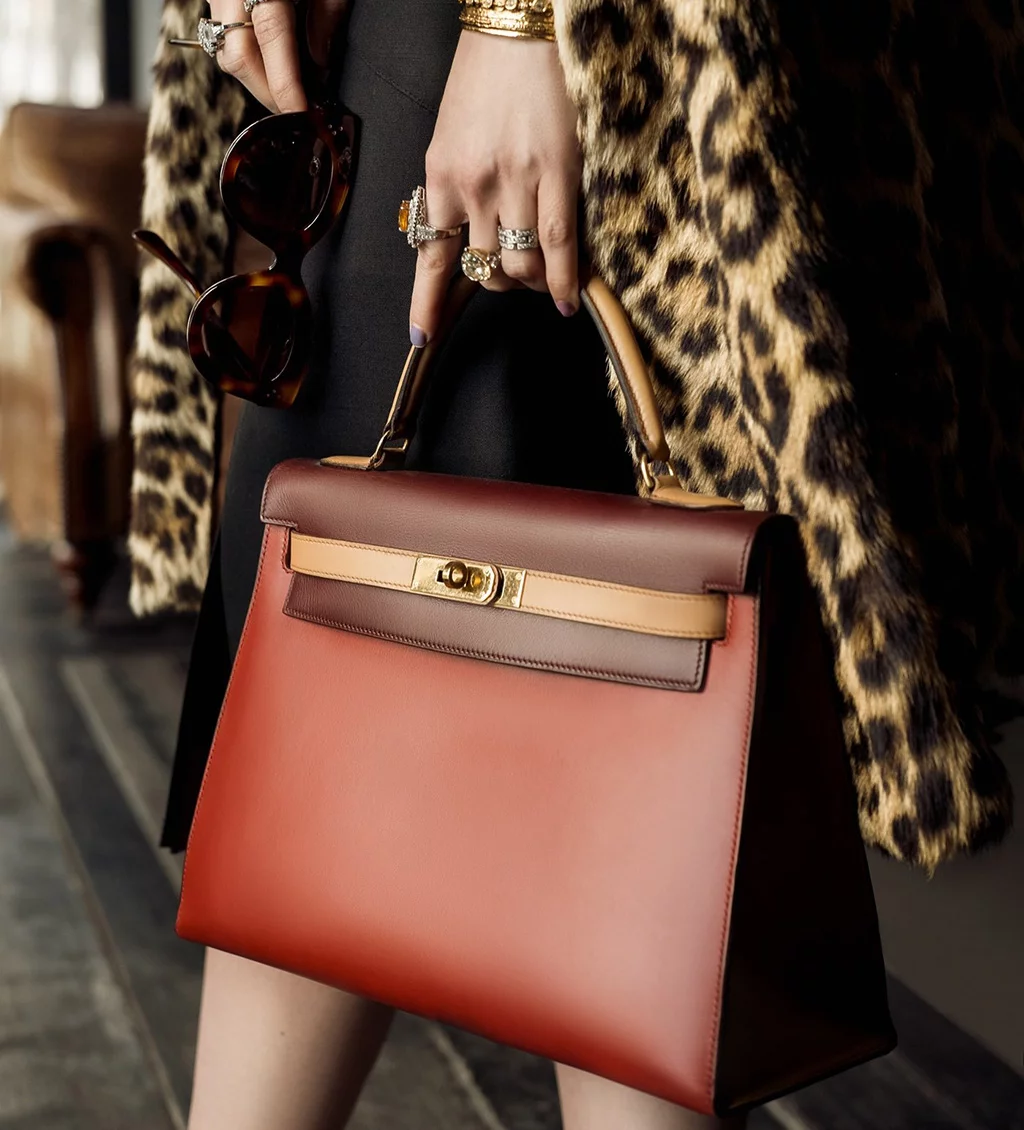
Our factory uses ostrich leather from the Klein Karoo farm, which is the leather that Hermès buys to produce its dotted products.
soft and velvety to the touch. When crumpled, it returns to its original shape.
These tactile sensations will undoubtedly be remembered by you and you will not confuse them with anything other than the original!
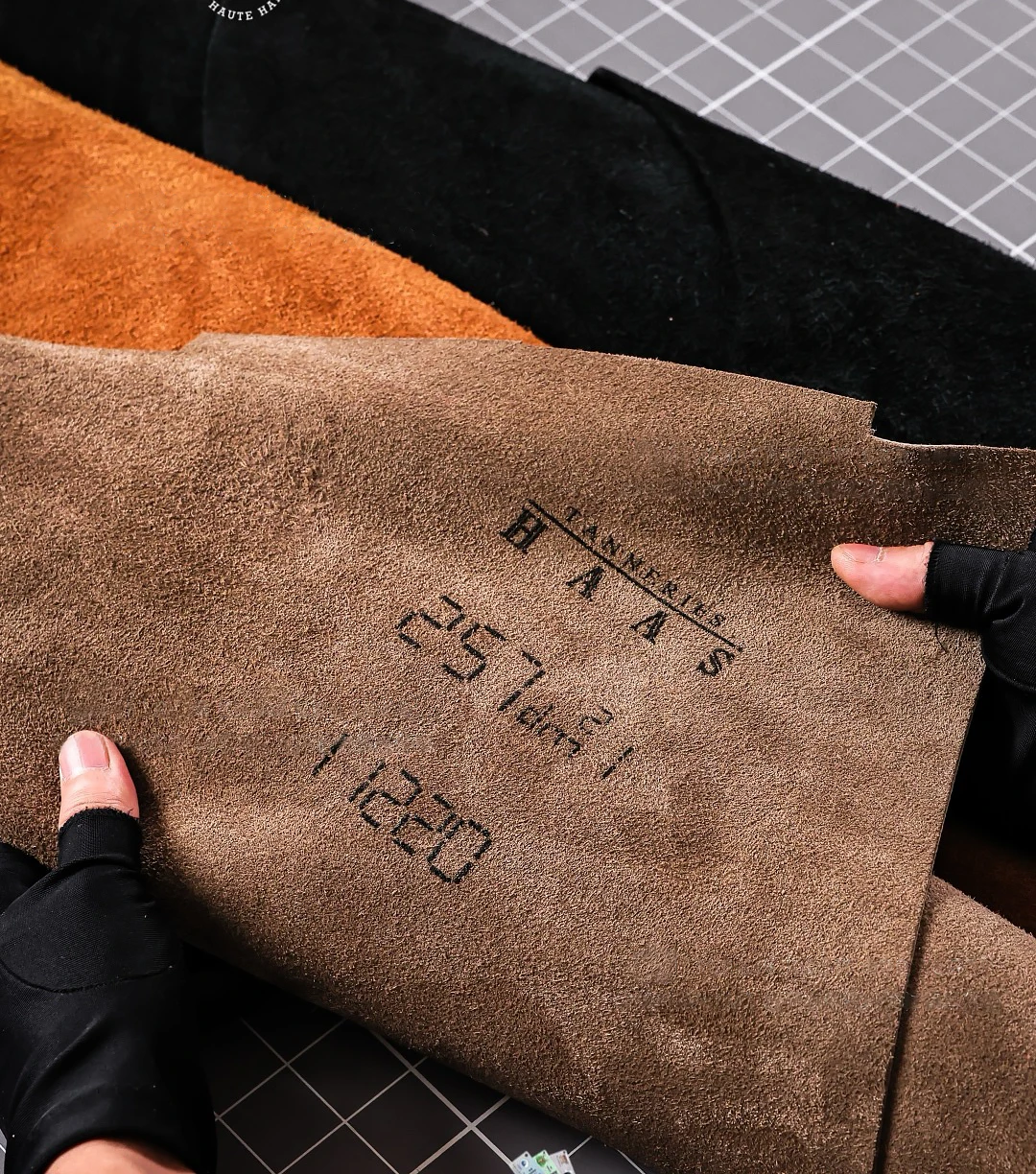
Popular Hermes Leather Types
Smooth skin
Leather Swift was originally called Gulliver until it was discontinued in 1999 and renamed to be reintroduced in 2006.
This type of Hermes leather is light, smooth, elastic; it absorbs dyes perfectly, making the color look more saturated.
It feels semi-smooth to the touch and is not as shiny as Box Calf or Tadelakt leather.
Veau Tadelakt — one of the most popular types of Hermes leather, although it is often confused with Box Calf due to many similarities. Both types of leather are known for their smooth and glossy finish, so they are prone to scratches and water stains if not wiped off promptly. Tadelakt has a silky texture.
Box Calf — is the oldest Hermes leather. Elastic, soft, glossy, smooth leather that is highly valued by collectors. Box Calf is susceptible to scratches, but scratches seem to merge into the overall shimmer of the leather and are not noticeable. If Box Calf leather gets wet in the rain, it must be wiped off. Nowadays, this material is extremely rare to see in boutiques. Most often, bags made of this type of leather can be found in small vintage shops.
Natural granulated calfskin
Clemence is very similar in structure to Togo. These two types of leather are often confused. You need to pay attention to the granules. In Clemence leather they are flatter than in Togo leather. Clemence, compared to Togo, is a heavier and even softer leather, which tends to sag over time.
U Togo the leather structure is more pronounced and resembles pebbles. Perhaps this type of leather is the most famous in Hermes from the grain category. Togo is a young calfskin that holds its shape perfectly. This leather is preferred by buyers because it will look like new for many years. Togo is scratch-resistant, but you need to watch the corners of the bag. After a certain time of constant wear, they may need to be restored. It was first introduced in 1997.
Evercolor was introduced in 2013. Evercolor is a pressed leather with a dense texture. It is soft to the touch and very durable, with a slight satin sheen. Originally used for small leather goods, Evercolor is now a popular choice for Kelly, Constance, and Lindy bags.
Artificially granulated calfskin
Veau Epsom is one of the most popular materials in the Hermès leather list. Granules are formed by pressing the leather. The surface of such leather looks laminated.
Epsom leather retains its shape over time. Along with durability, the embossed surface allows it to be waterproof and much less likely to scratch. Epsom leather is also very lightweight and easy to clean, requiring only a simple swipe of a damp cloth.
Calfskin treated
Doblis Suede - Untanned calfskin, also known as Grizzly. It is essentially suede and should be kept away from water.
Natural granulated goat skin
Mysore Chèvre — mountain goat leather, known for its softness and granular surface. The leather is scratch-resistant and very light. It is used mainly for the production of small-sized items and Birkin 25 cm bags.
Coromandel Chèvre — mountain goat skin, characterized by a soft granulated surface with elongated ridges along its entire length. The skin is scratch-resistant and very light. It dyes well.
Crocodile skin
Porosus Crocodile Lisse — the king of exotic Porosus has a glossy effect achieved by careful polishing with an agate stone only after the appropriate color has been applied. It has distinct, pronounced, small pores.
Porosus Crocodile Matte — this leather is obtained from the bellies of crocodiles grown in Australia. It is certainly considered the most expensive exotic leather produced by Hermes. Despite its origin, Porosus crocodile leather does not tolerate water. Otherwise, stains may remain. You can recognize this type of leather by the icon (^) located to the right of the Hermes Paris inscription.
Crocodile Niloticus Lisse — The glossy effect is achieved by polishing the leather until it acquires a beautiful shine. Compared to alligator, Crocodile Niloticus leather bags have larger scales and often lack distinct pores. Crocodile is generally durable, but should be kept away from water to prevent stains that are difficult to remove. Nilo leather bags can be recognized by the two dots (••) next to the main Hermes Paris inscription.
Crocodile Niloticus Matte — the matte effect is achieved by rubbing the surface with felt. The Niloticus crocodile comes from the Nile region of Zimbabwe. As with other exotics, matte Nilo is more expensive than its shiny counterpart.
Alligator Lisse — this type of leather is characterized by an umbilical scar, which has an elongated, irregular shape with a pattern. This pattern is often placed on the most visible part of the bag. Alligator has large, square scales in the middle and smaller oval scales on the sides. It is perfectly dyed. Mississippi Alligator leather looks similar to Porosus crocodile leather, but the price of alligator bags is cheaper. You can recognize alligator leather products by the square marking ( ▢ ) next to the main Hermes Paris inscription. Despite its origin, alligator leather also does not like water.
Alligator Matte — matte skin of an alligator that lives in the waters of the Mississippi River in America. The matte effect is achieved by rubbing the surface with felt. Bags made of alligator skin seem a little thicker and are much more resistant to abrasion and scratches. It is used mainly to make wallets and Birkin and Kelly bags. As a rule, matte alligator skin is a little more expensive than glossy and is in high demand.
Ostrich leather processed
Ostrich (ostrich skin) — the most durable exotic used by Hermes, known for its beautiful dotted pattern. It is soft, elastic and incredibly durable. In its work, our factory uses ostrich leather from the Klein Karoo company. It is from this farm that Hermes buys leather for its products.
Lizard skin processed
Lizard (Varanus Niloticus) — a delicate material that requires care to prevent the scales from drying out. Like most Hermes exotic leathers, lizard can be either matte or shiny. But even matte items have small lizard scales that give them a slightly shiny appearance. Because of the lizards’ size, this type of leather is usually seen in small accessories and handbags.
Popular types of Hermes fabrics
Toile H
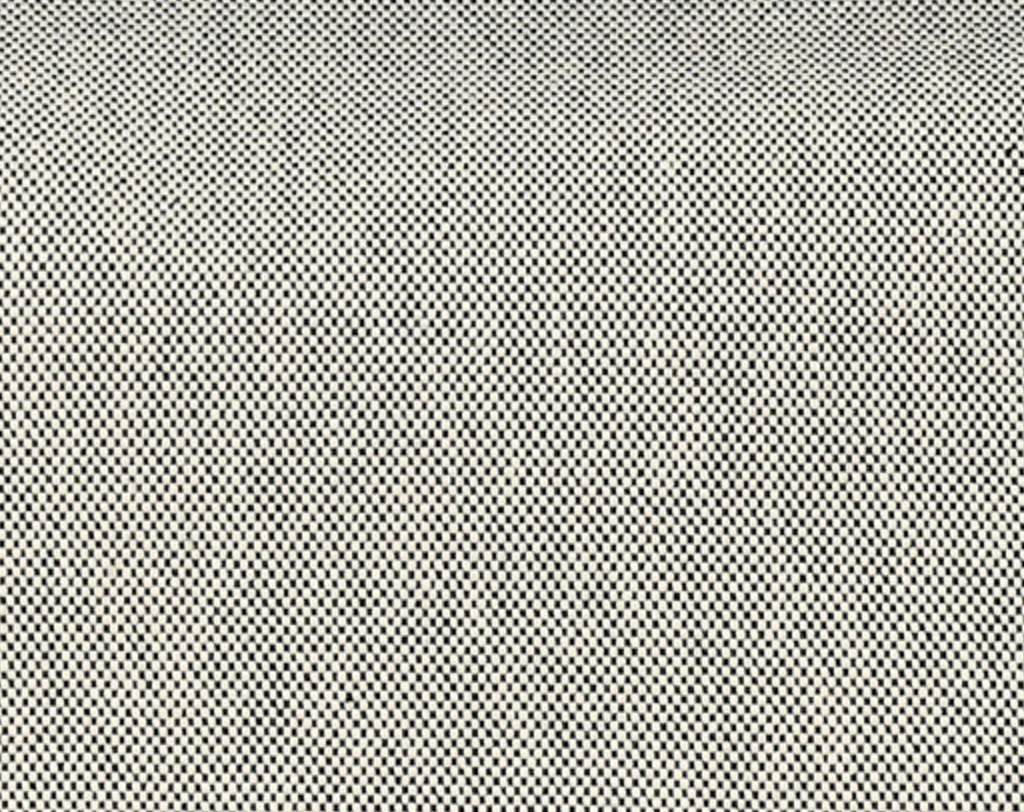
Toile H — the most basic woven cotton fabric of Hermes. This fabric is very strong and resistant to abrasion. Its texture looks like the weaving of two threads of different colors.
Toile GM
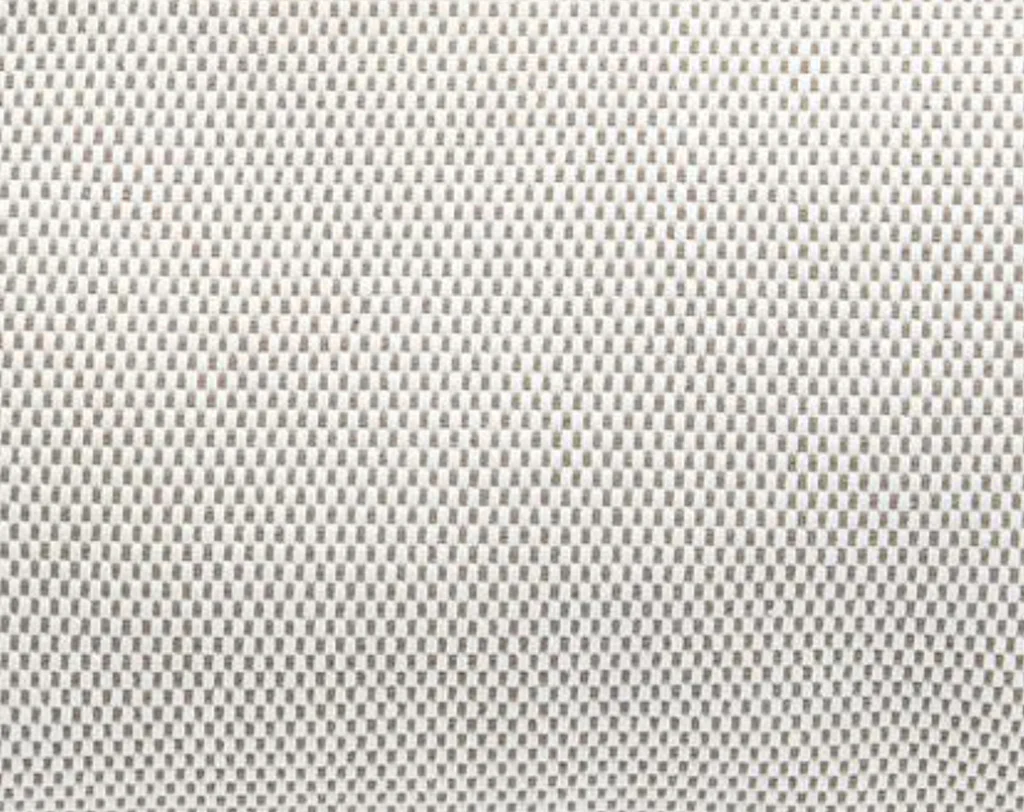
Toile GM — a cotton fabric with a coarser weave than Toile H. This fabric is also very strong and resistant to abrasion. Its texture looks like a weave of two threads of different colors.
Toile Officer
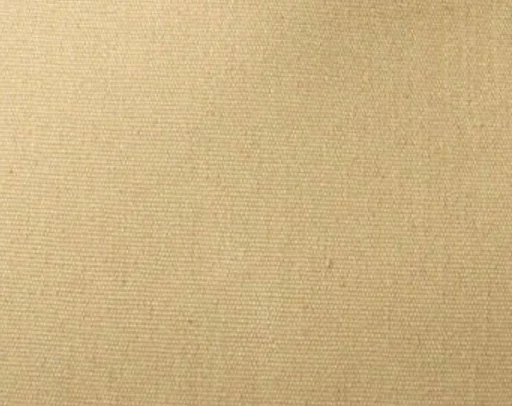
Toile Officer — cotton fabric made of thinner thread. The texture looks like a weave of thread of one color. It is used mainly in the production of Garden Party and Herbag bags.
Toile So H
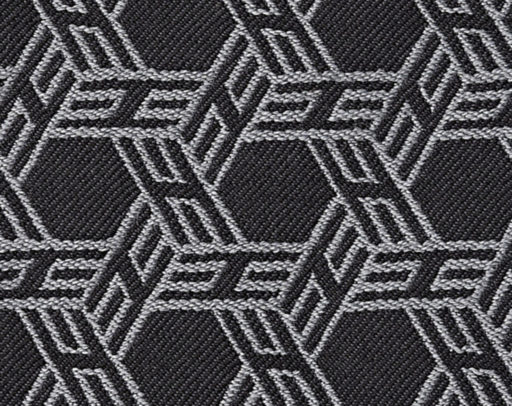
Toile So H — a fabric made of wool and cotton, obtained by weaving threads of two different colors. It has a pattern of the H logo woven over the entire surface. This fabric is very light and durable.

